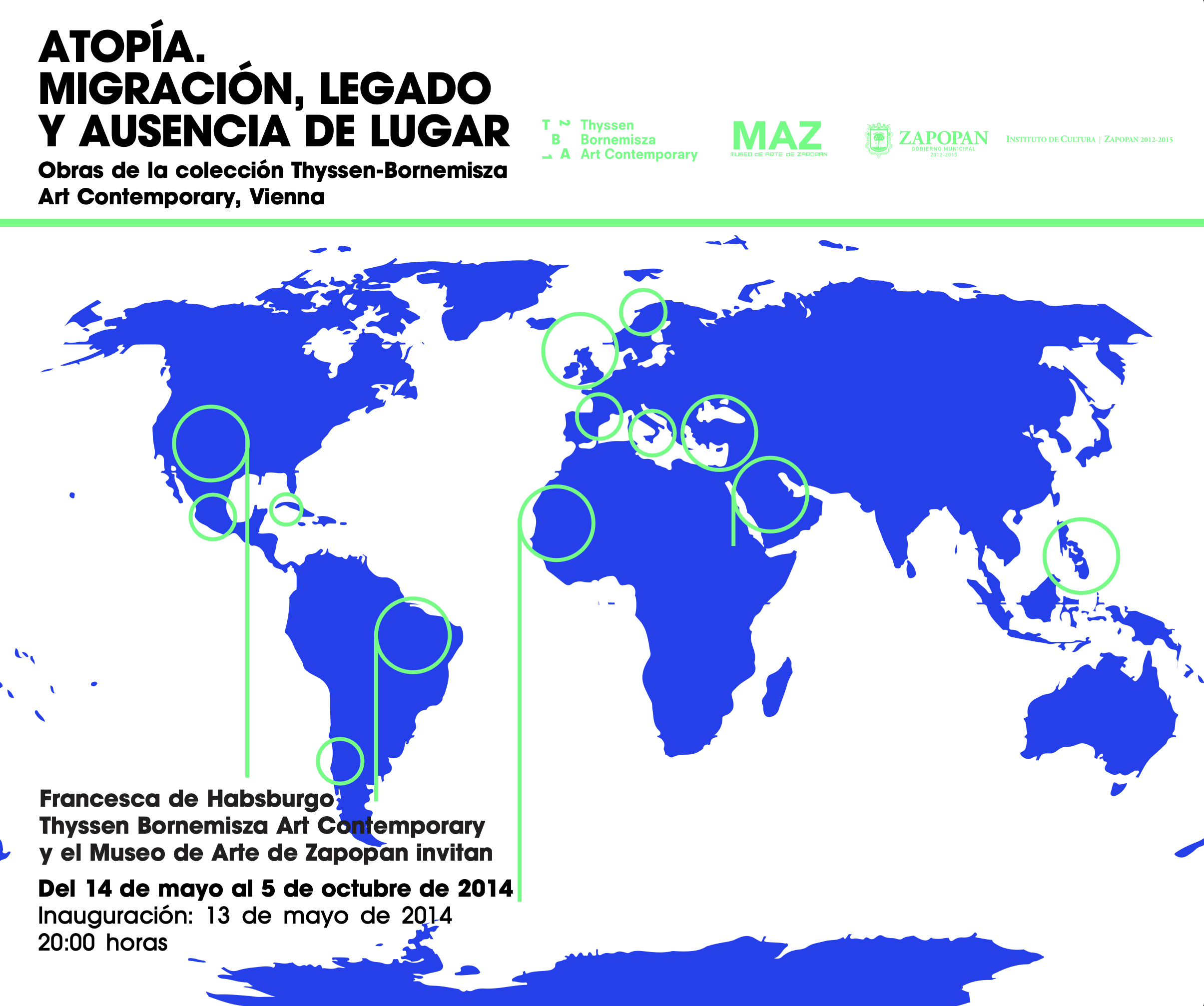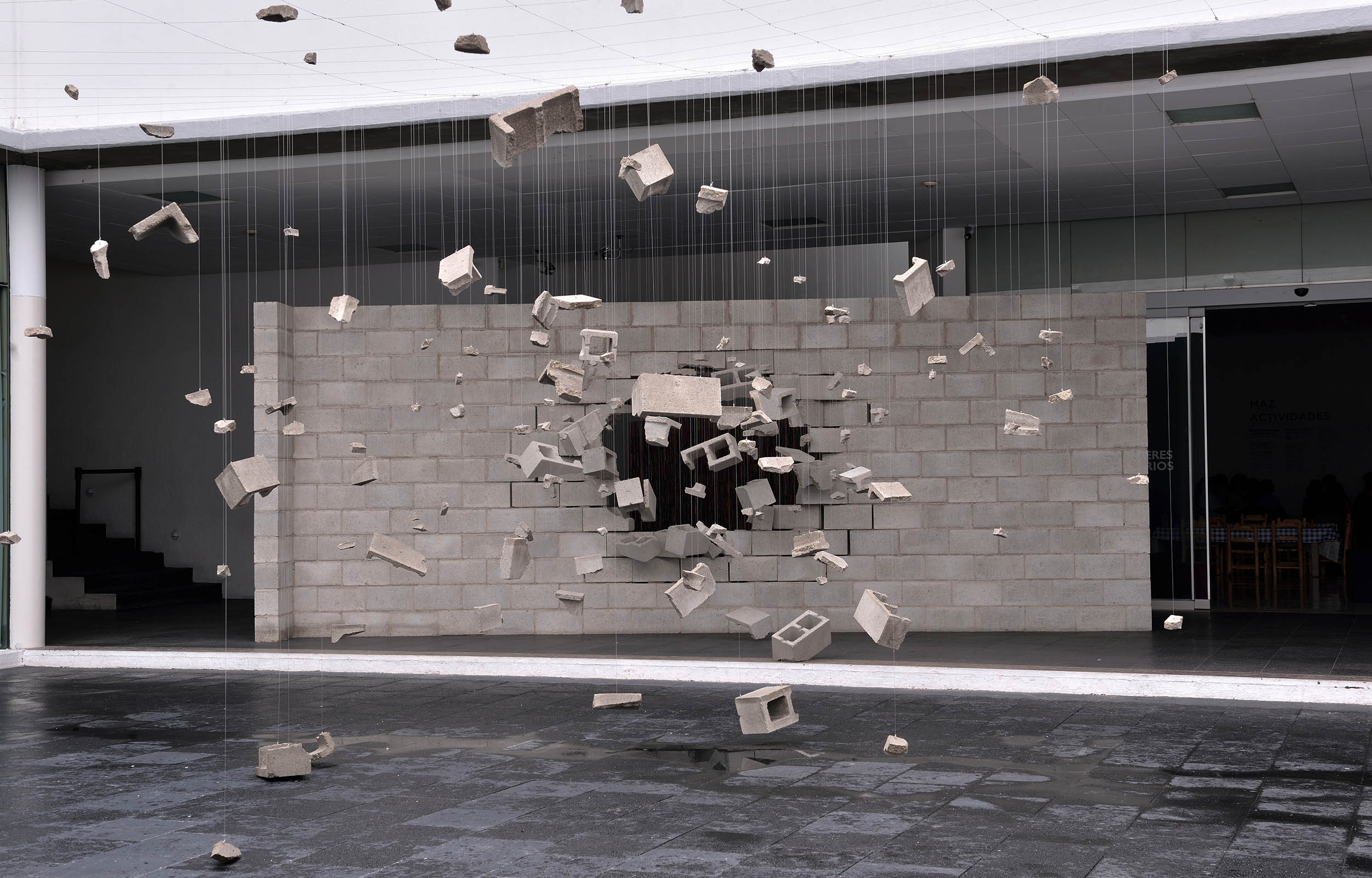
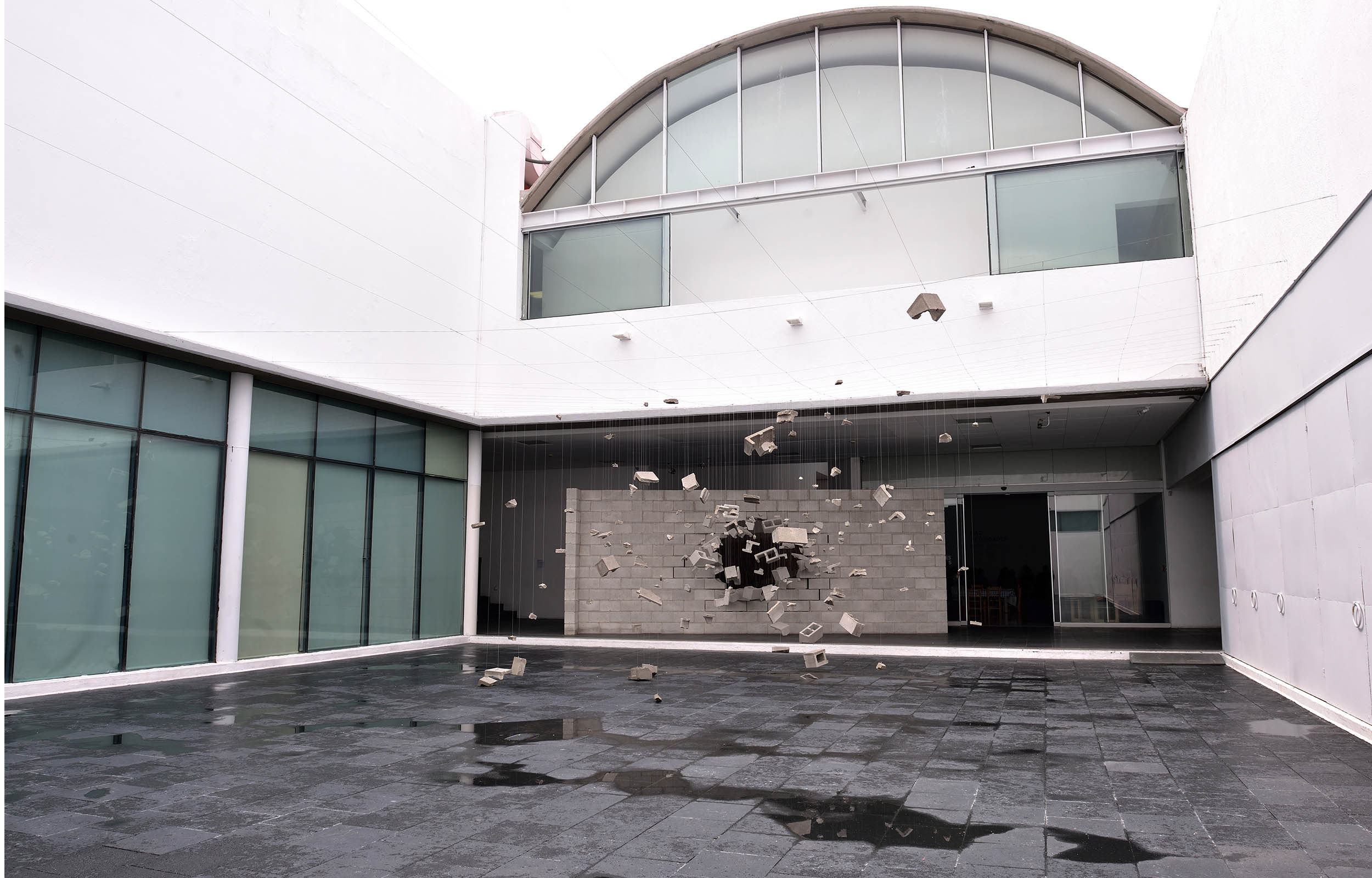
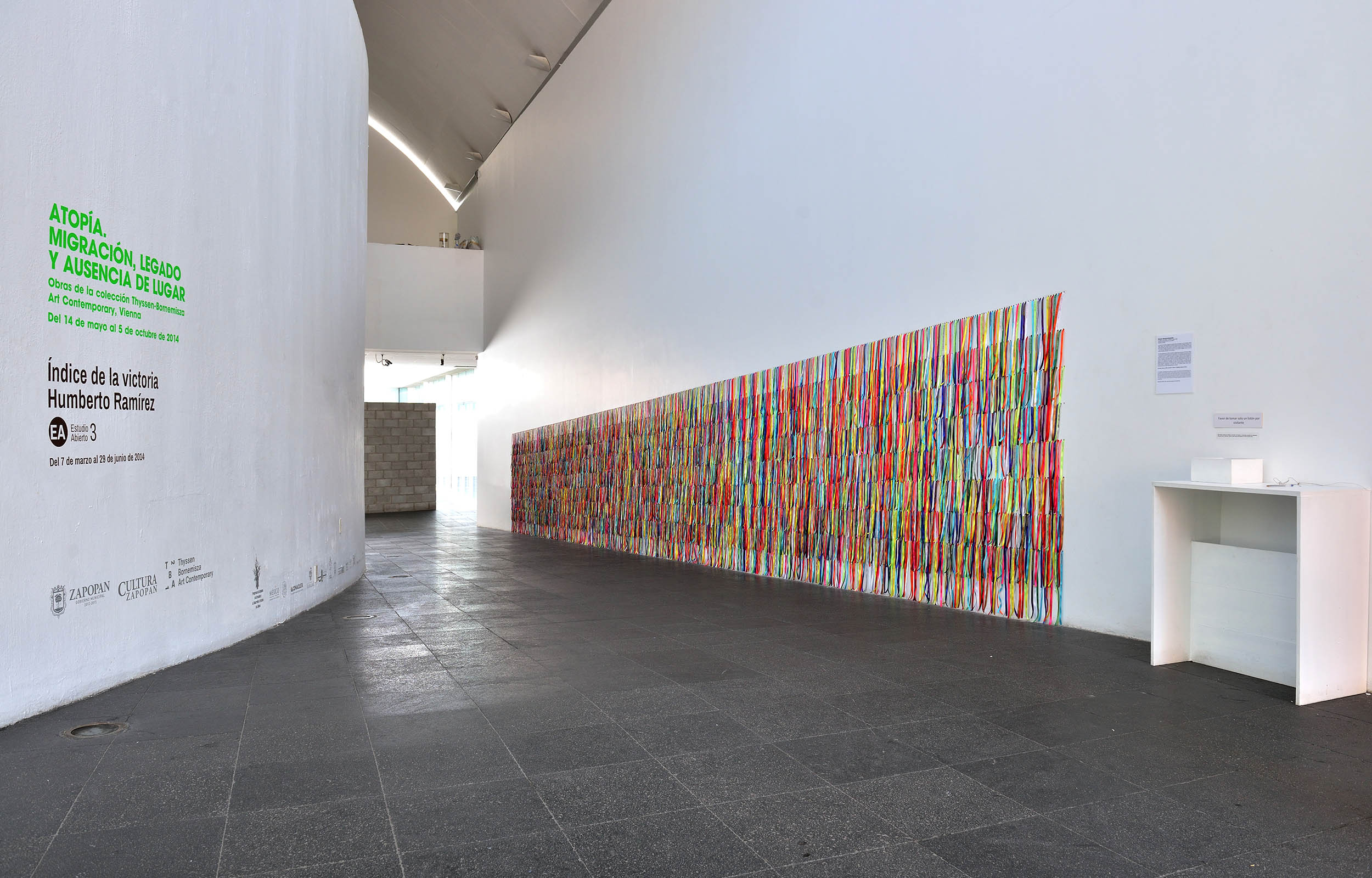
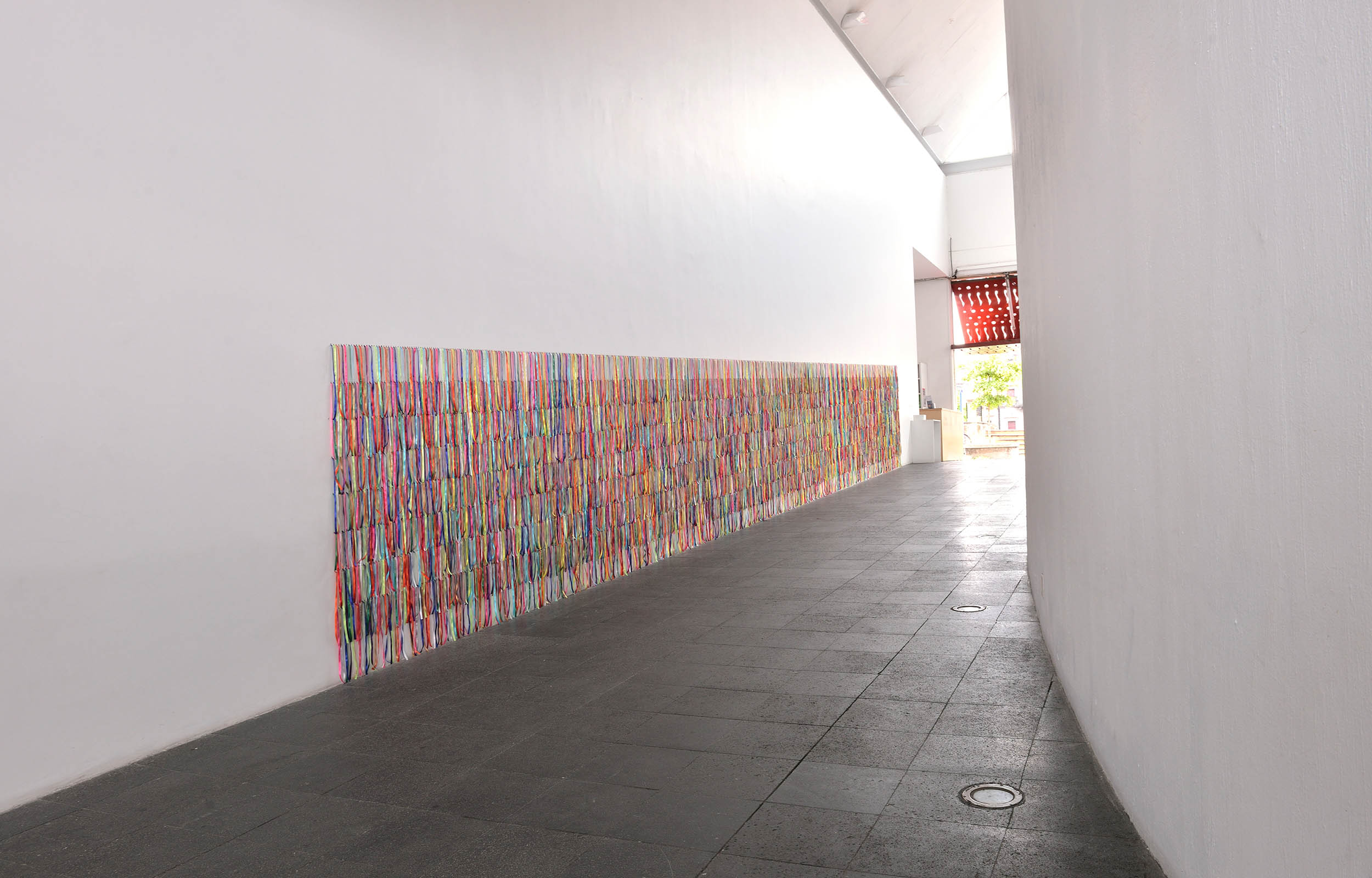
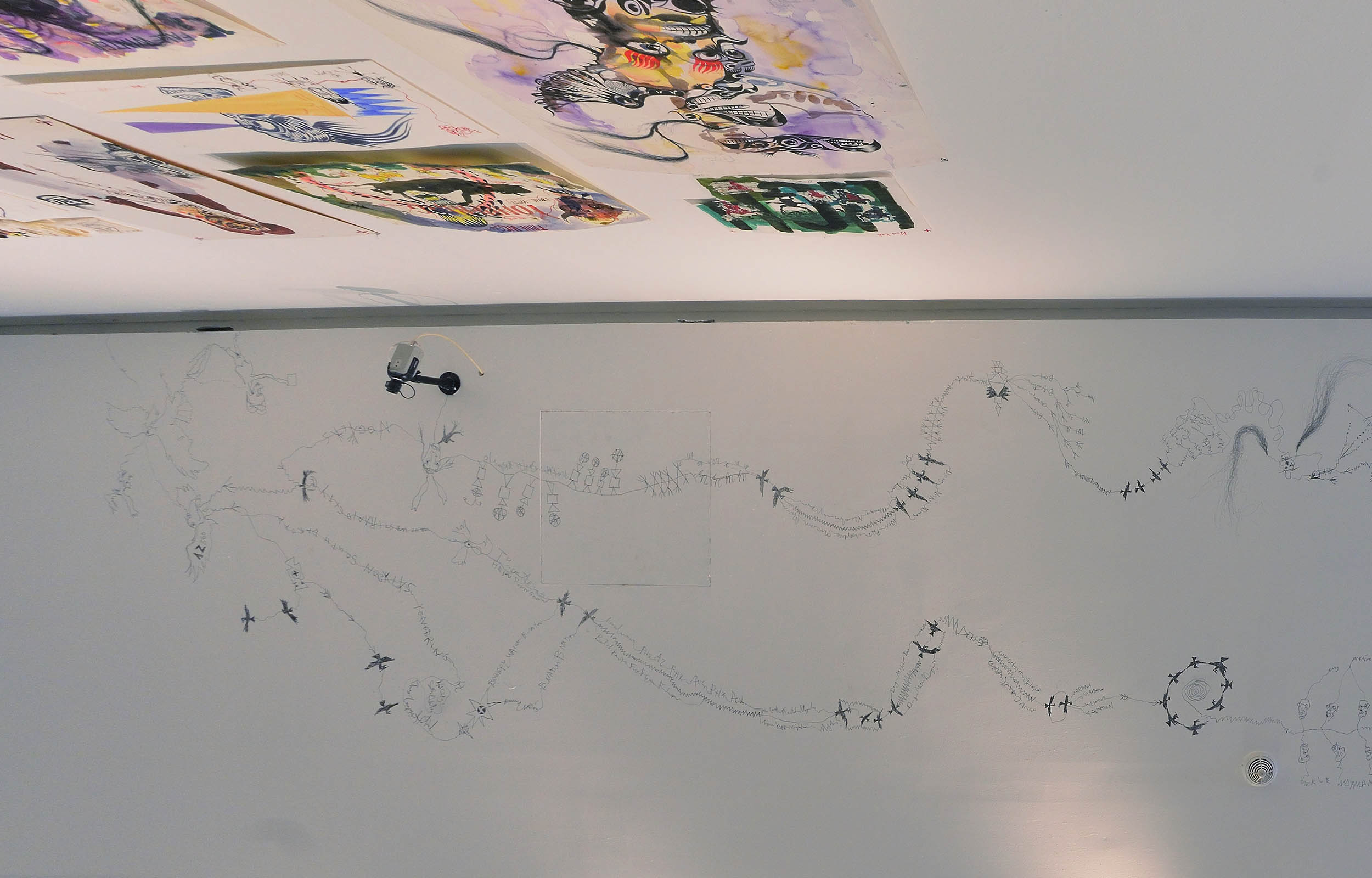
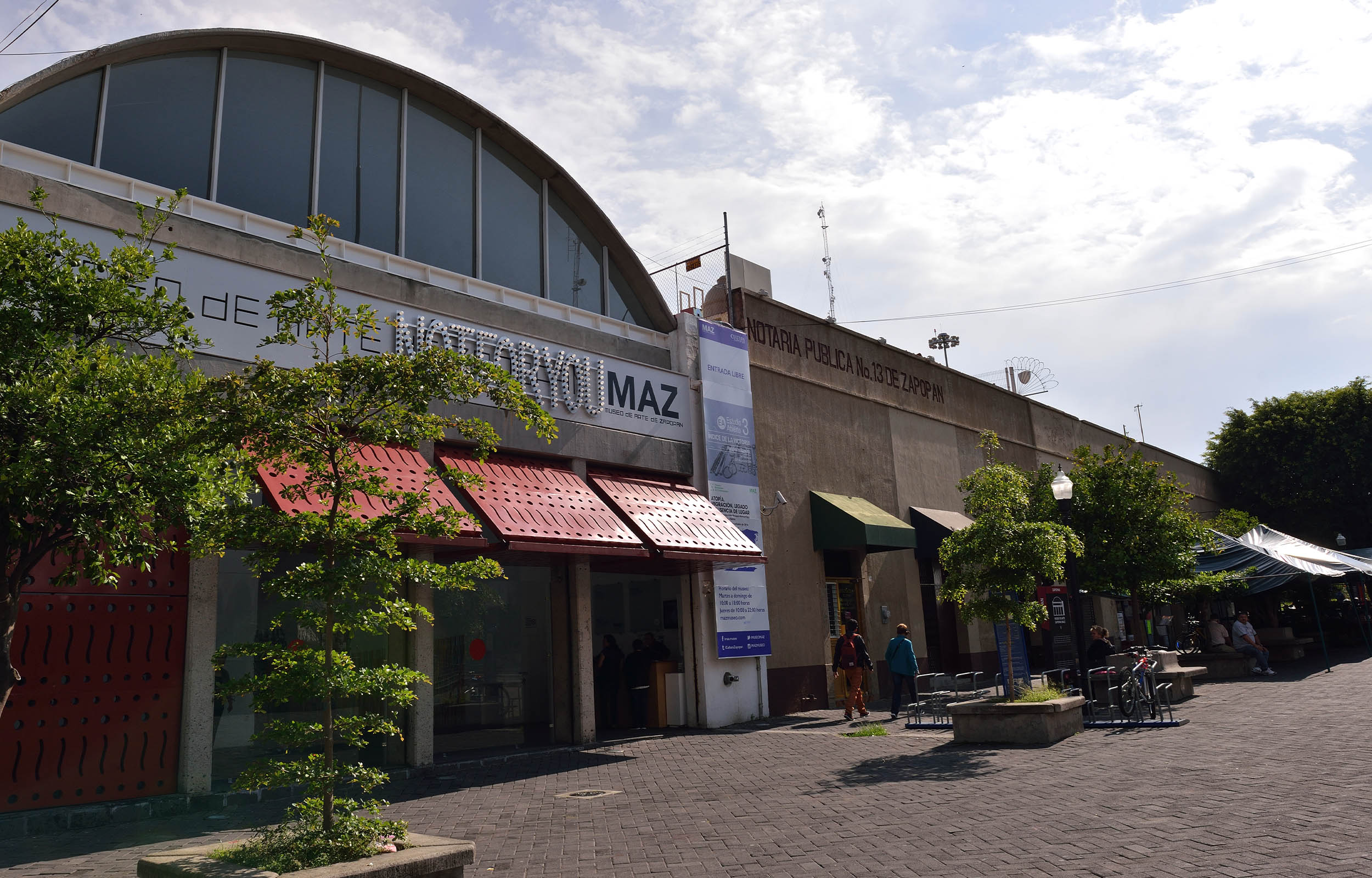
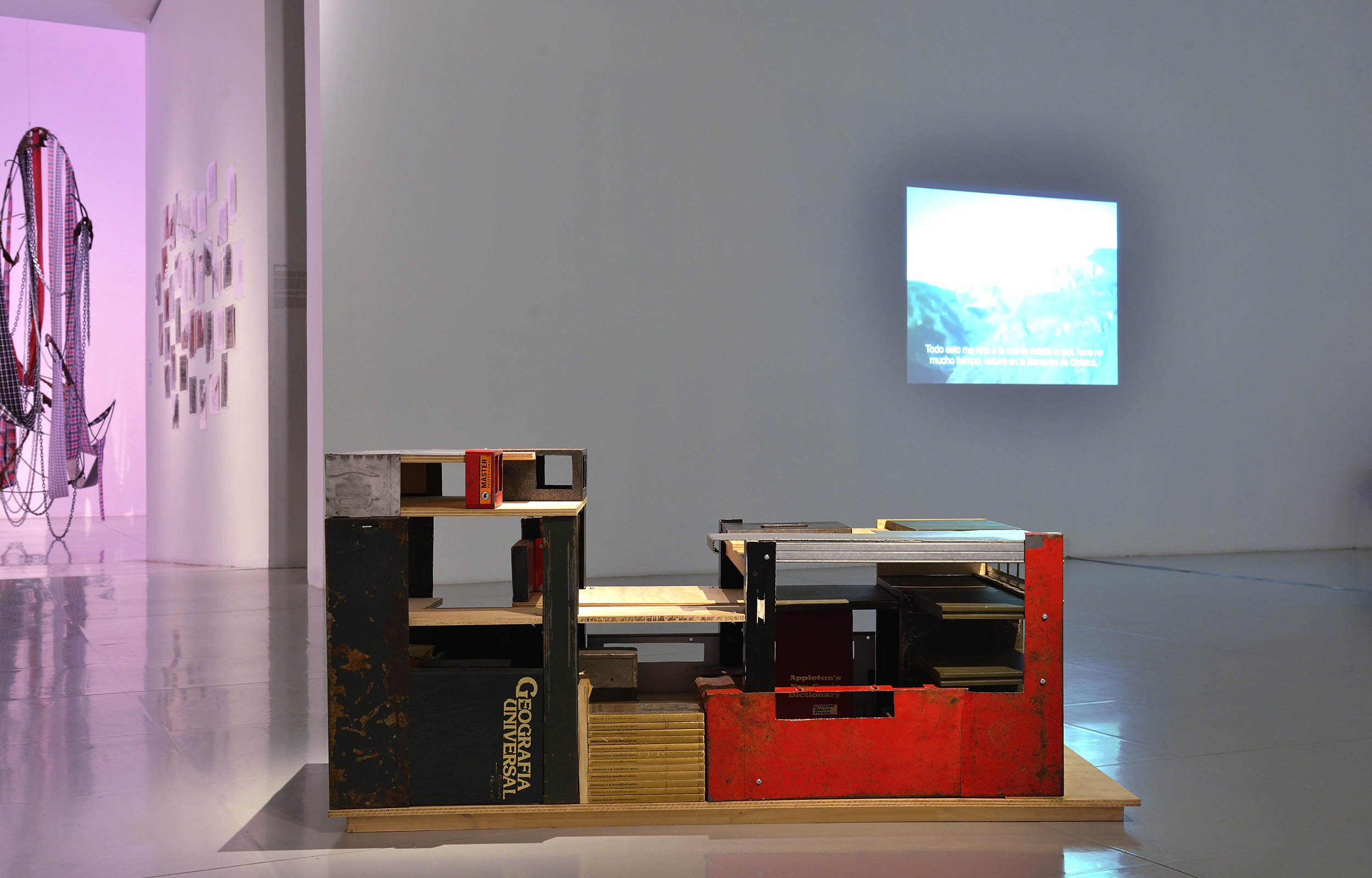
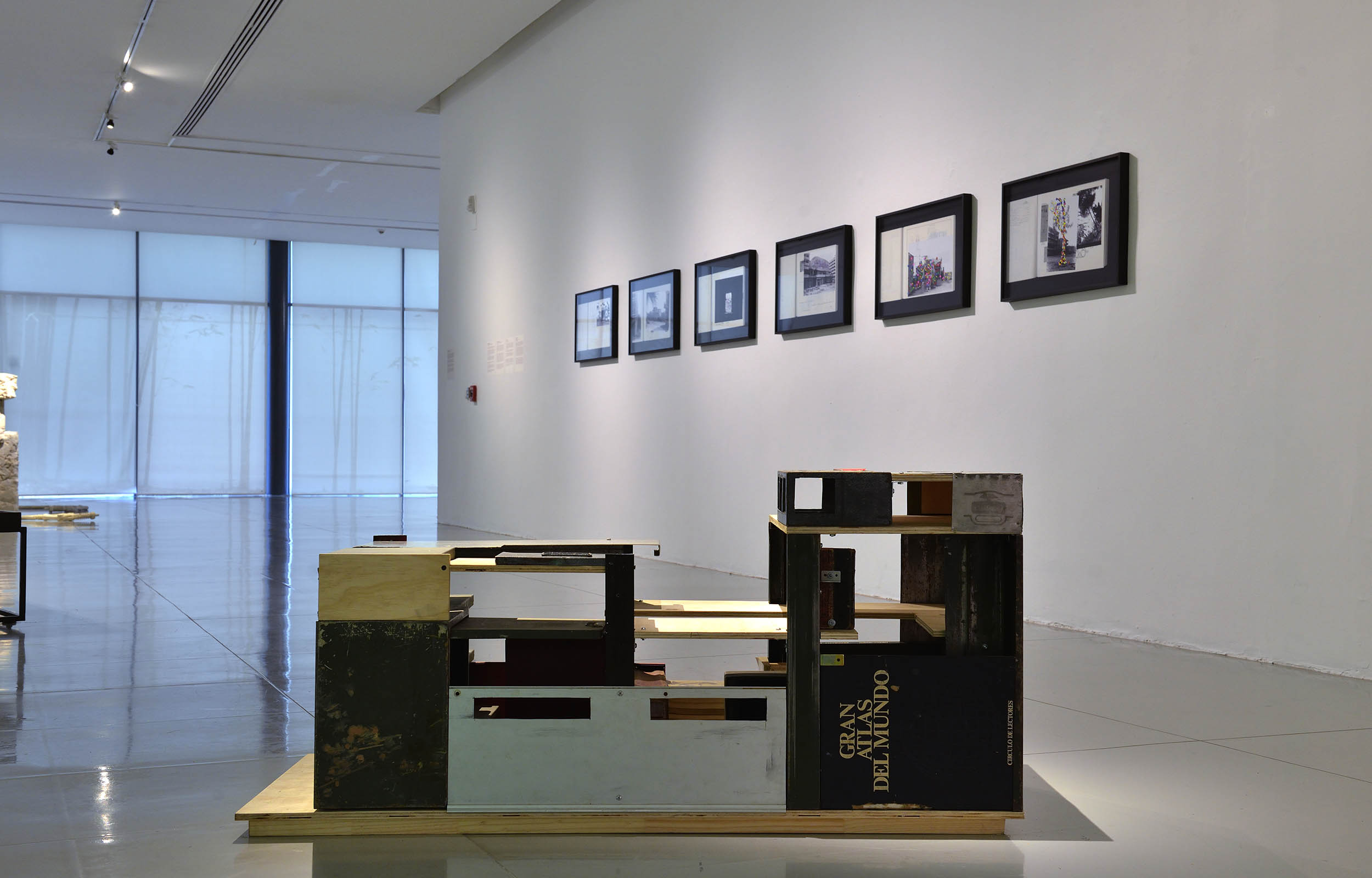
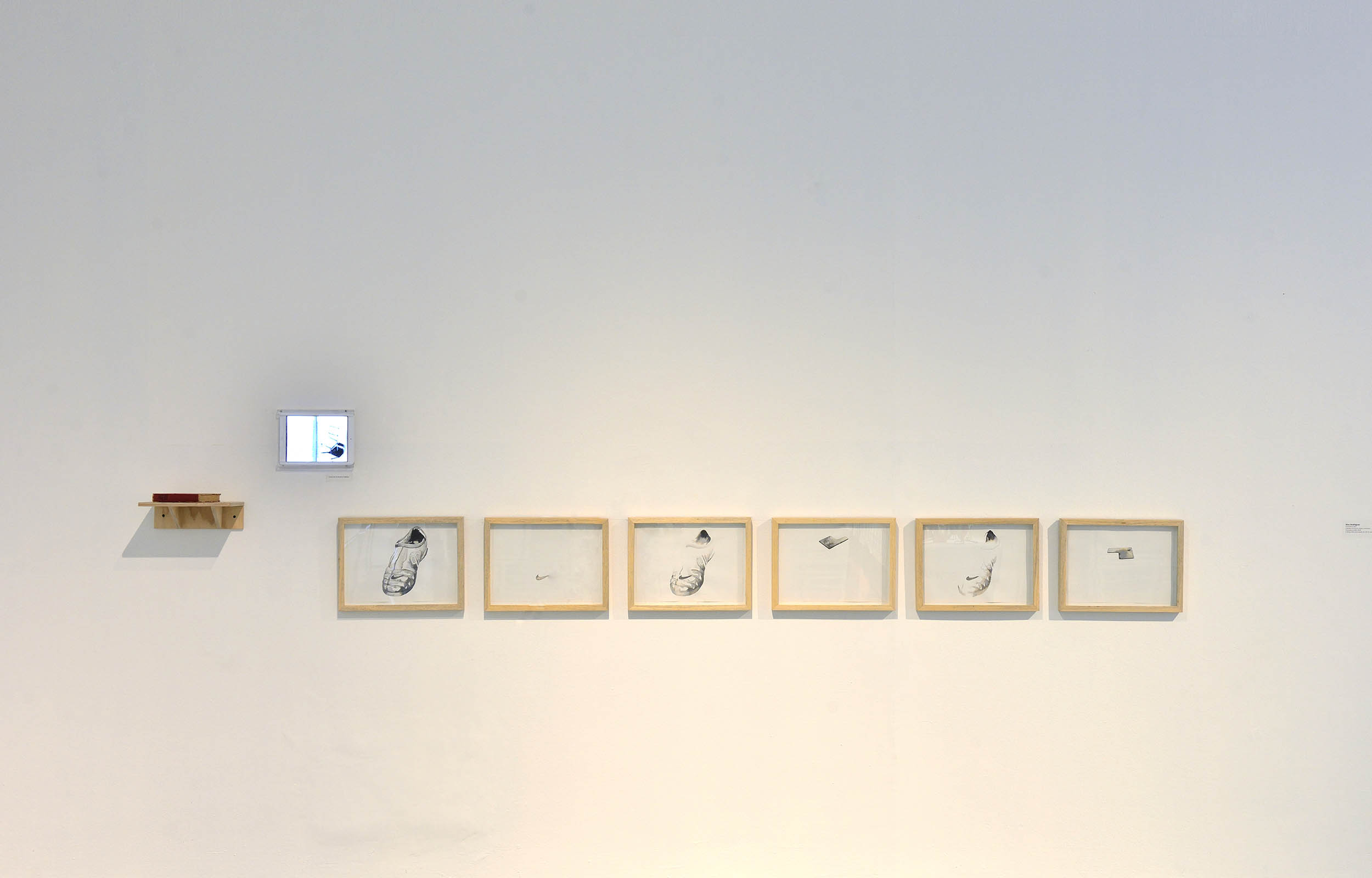
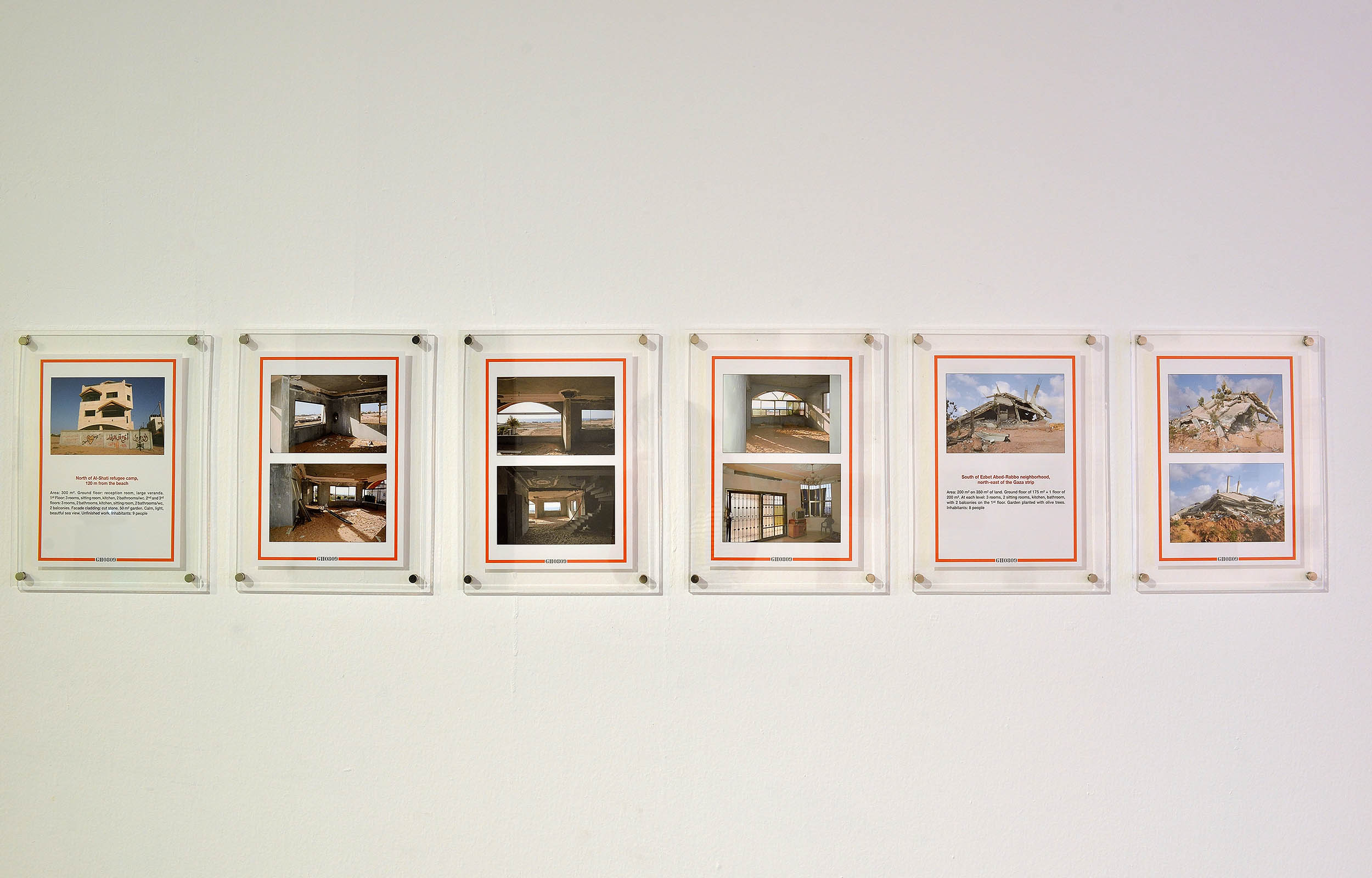
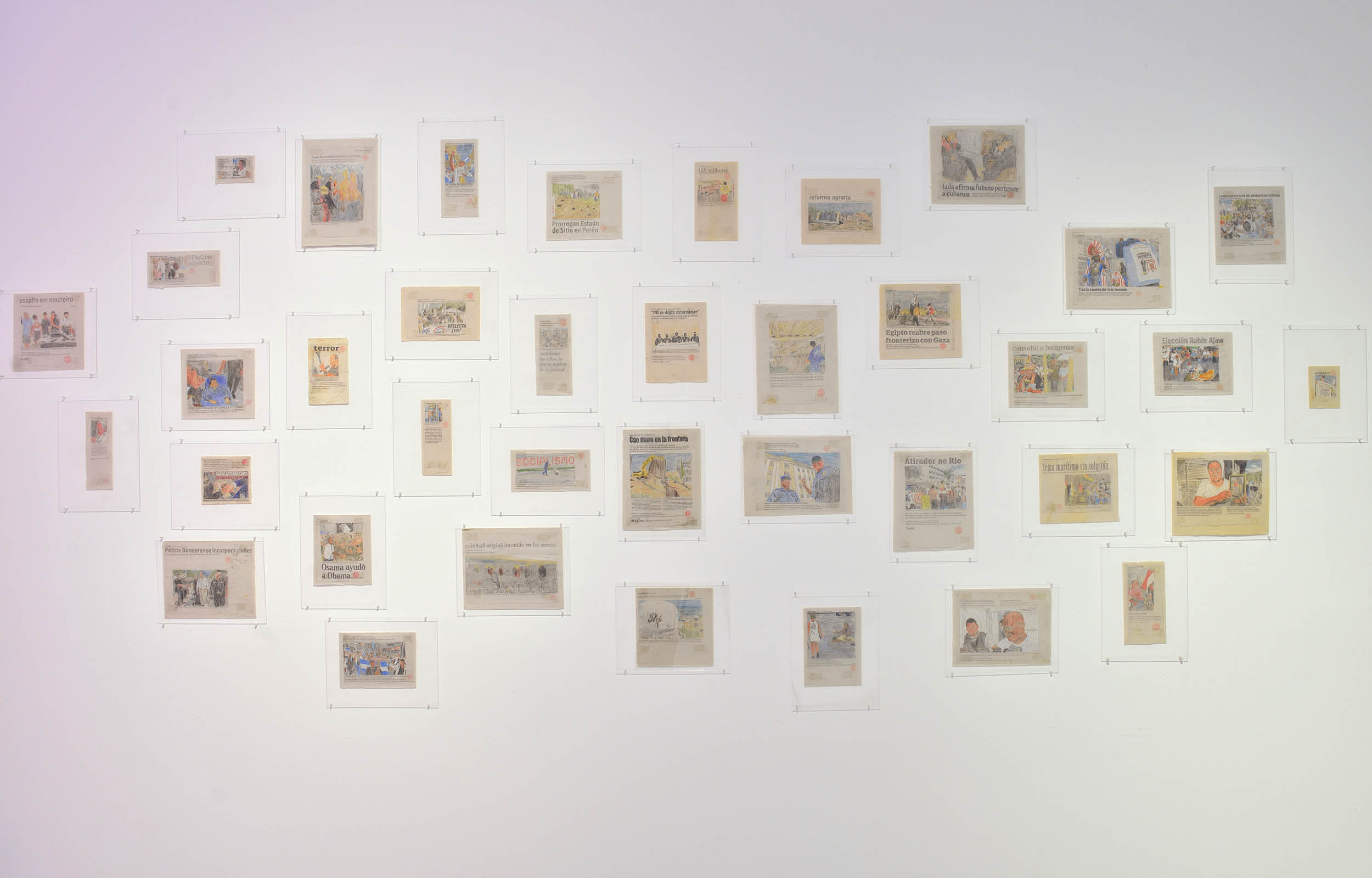

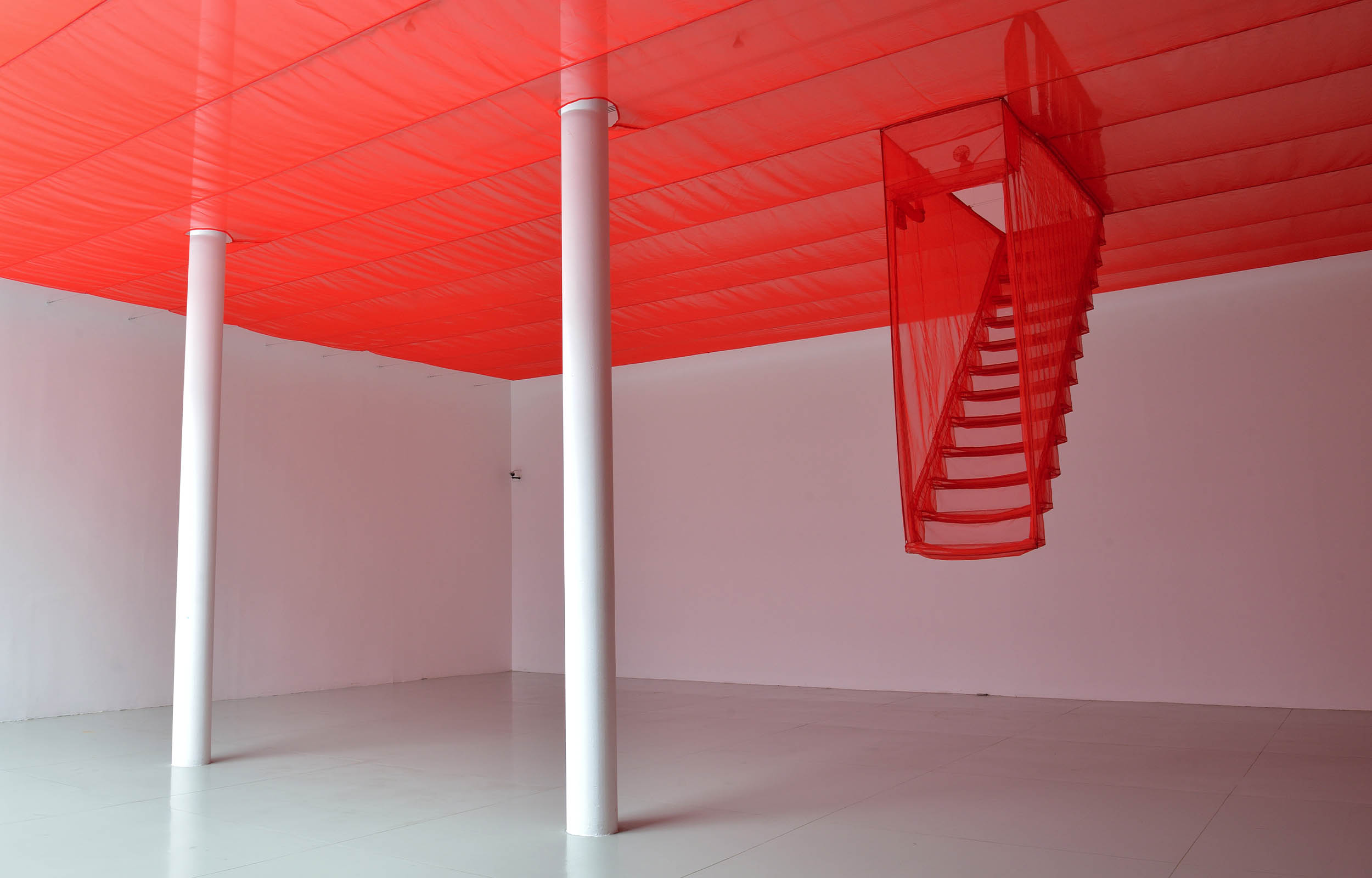
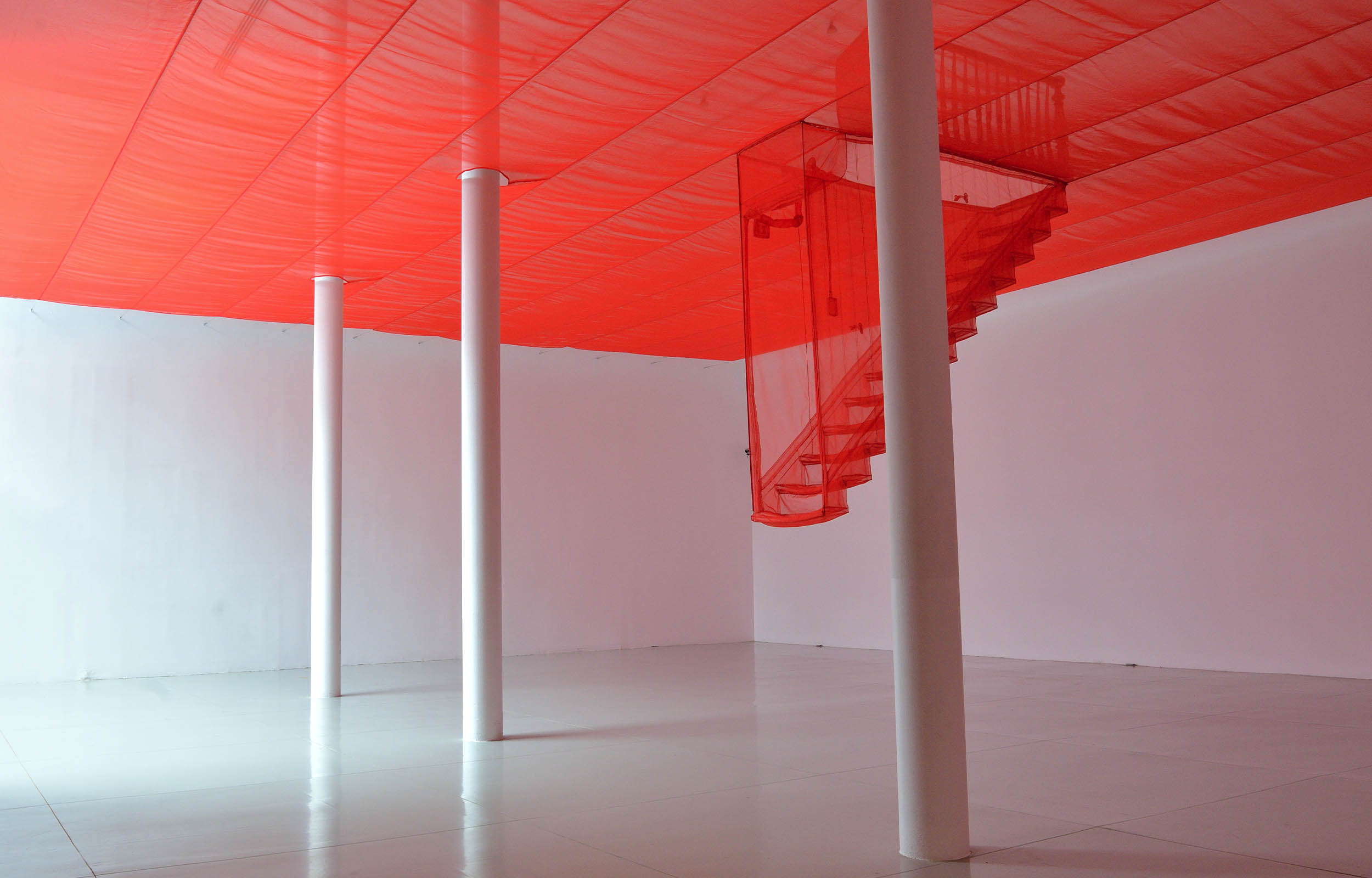
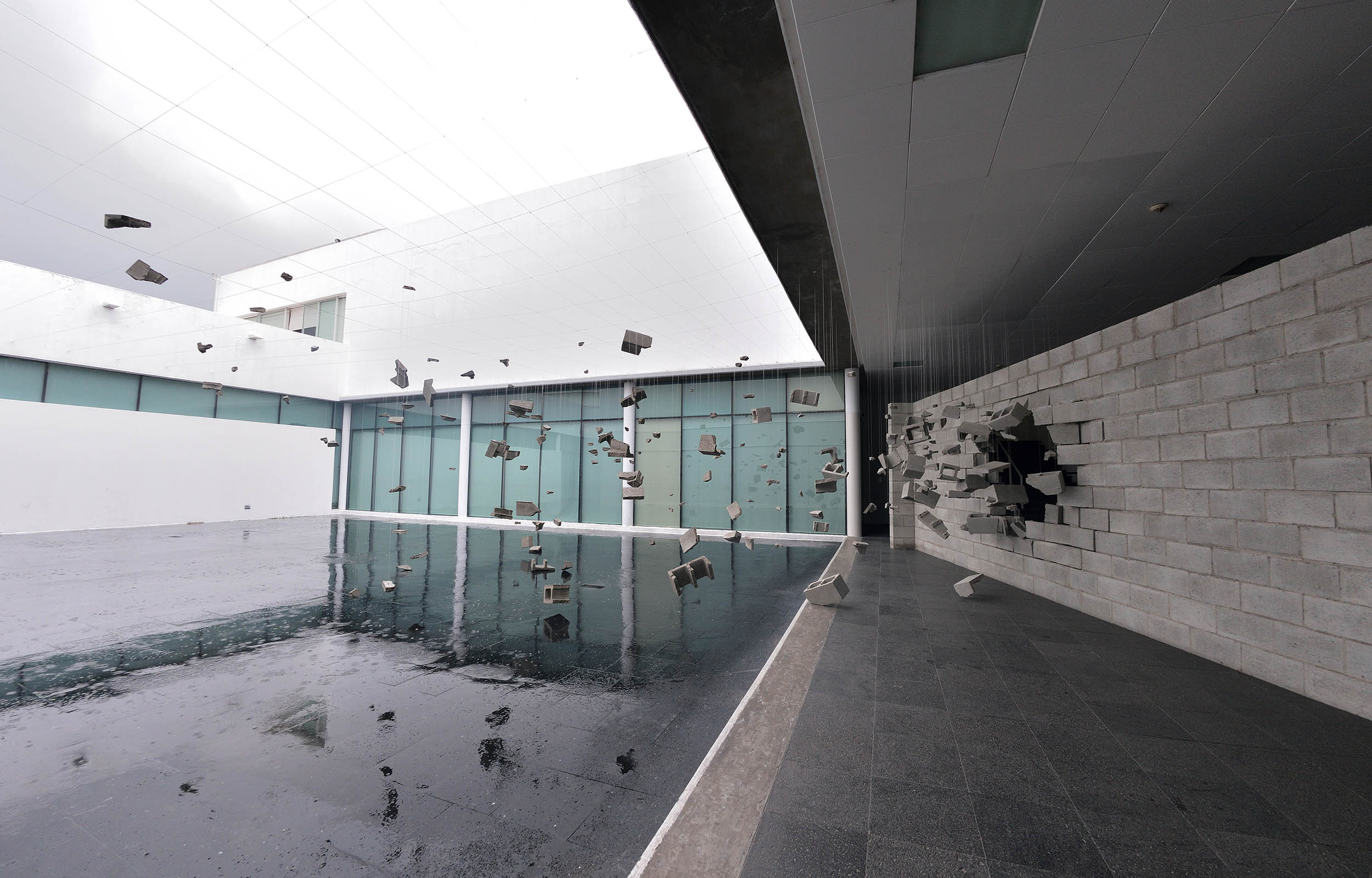

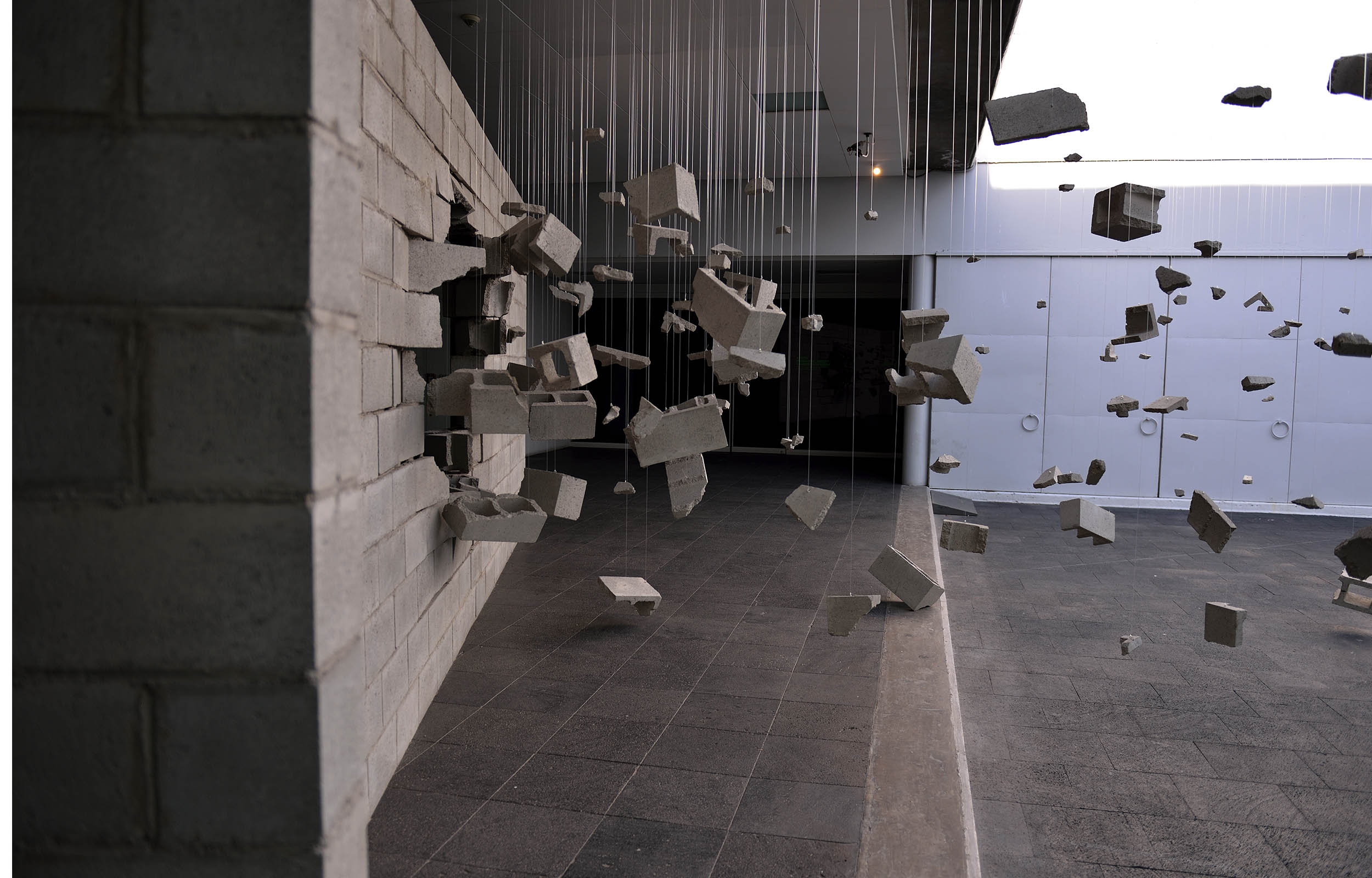
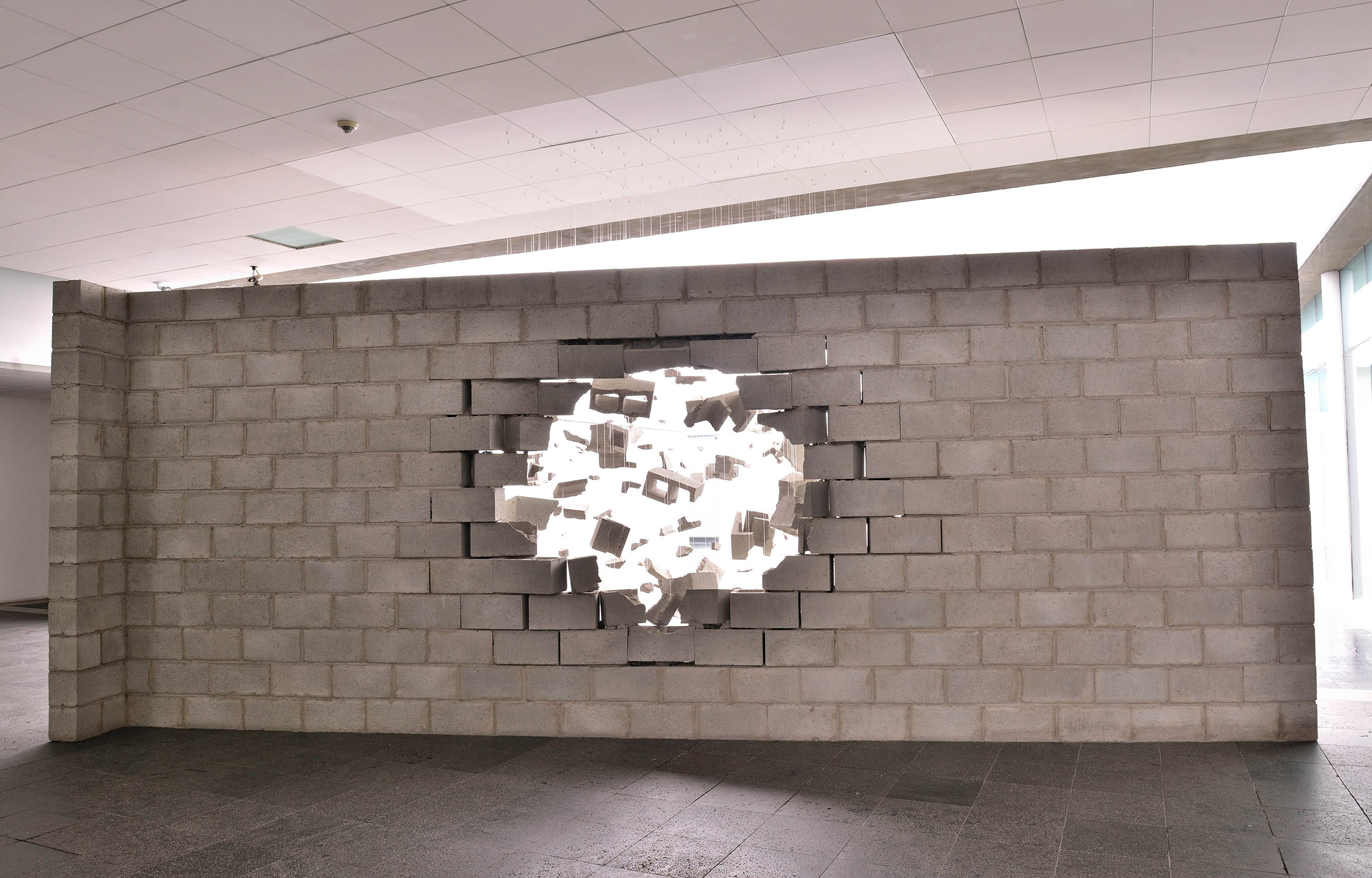
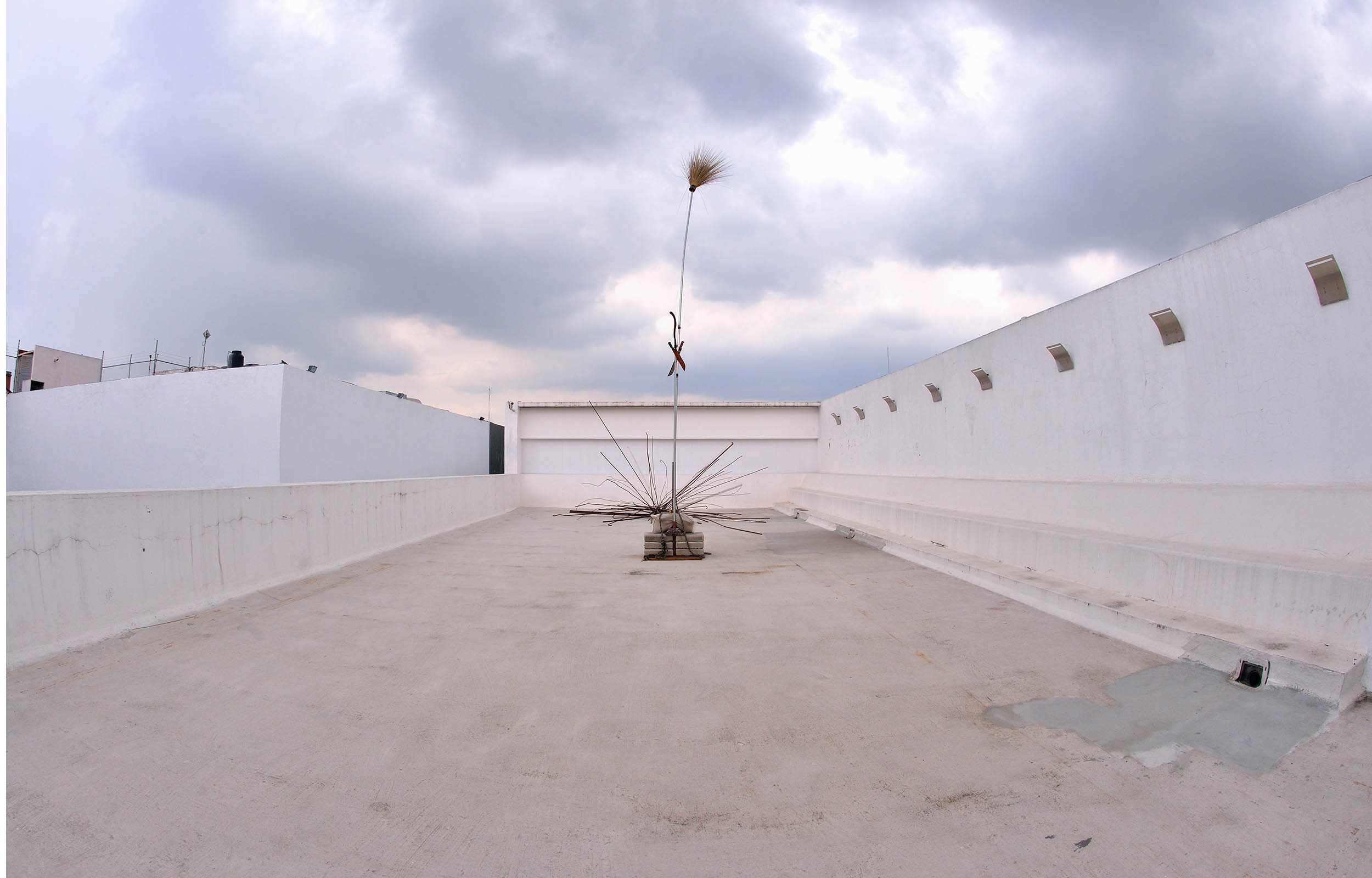
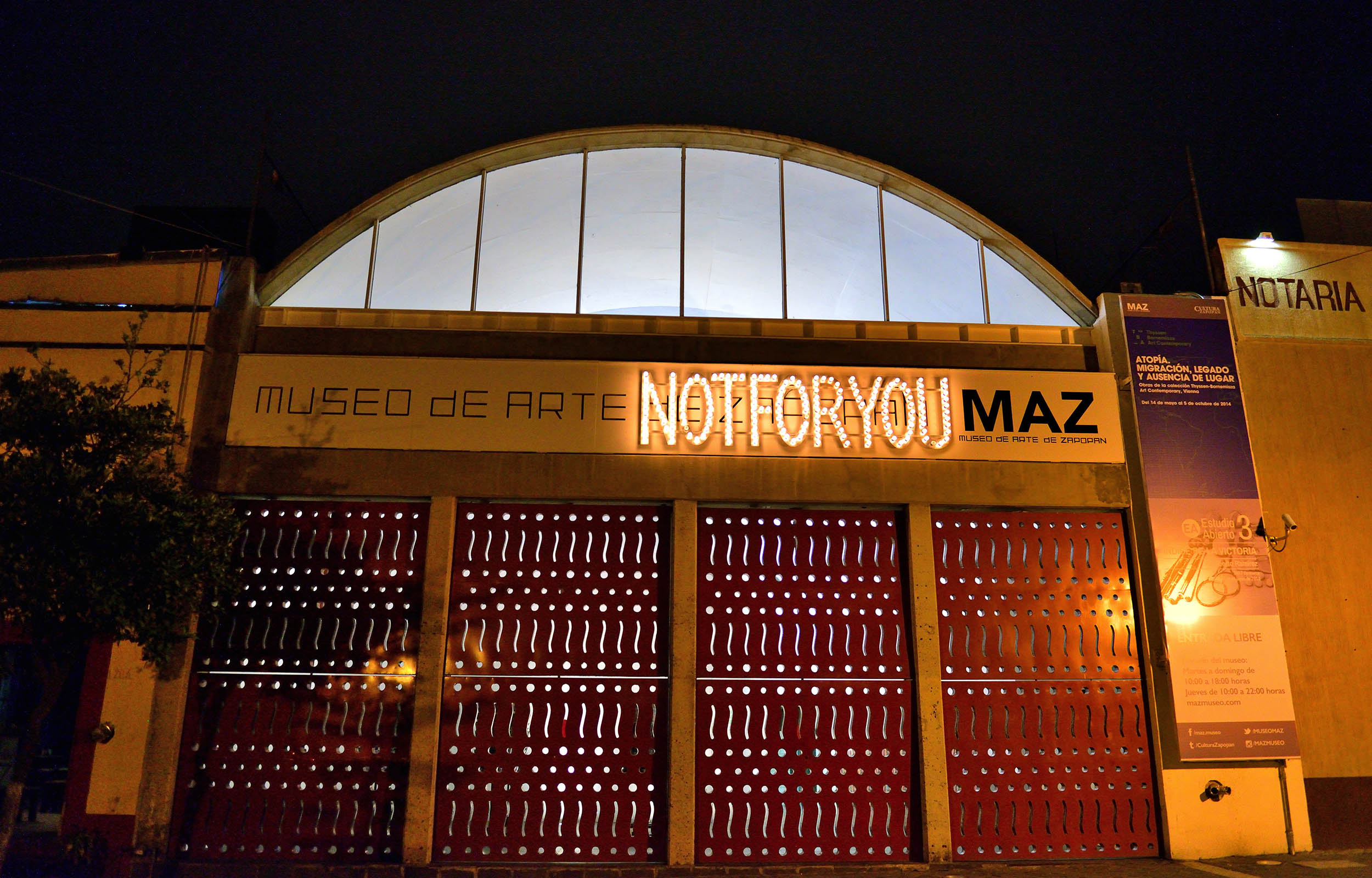
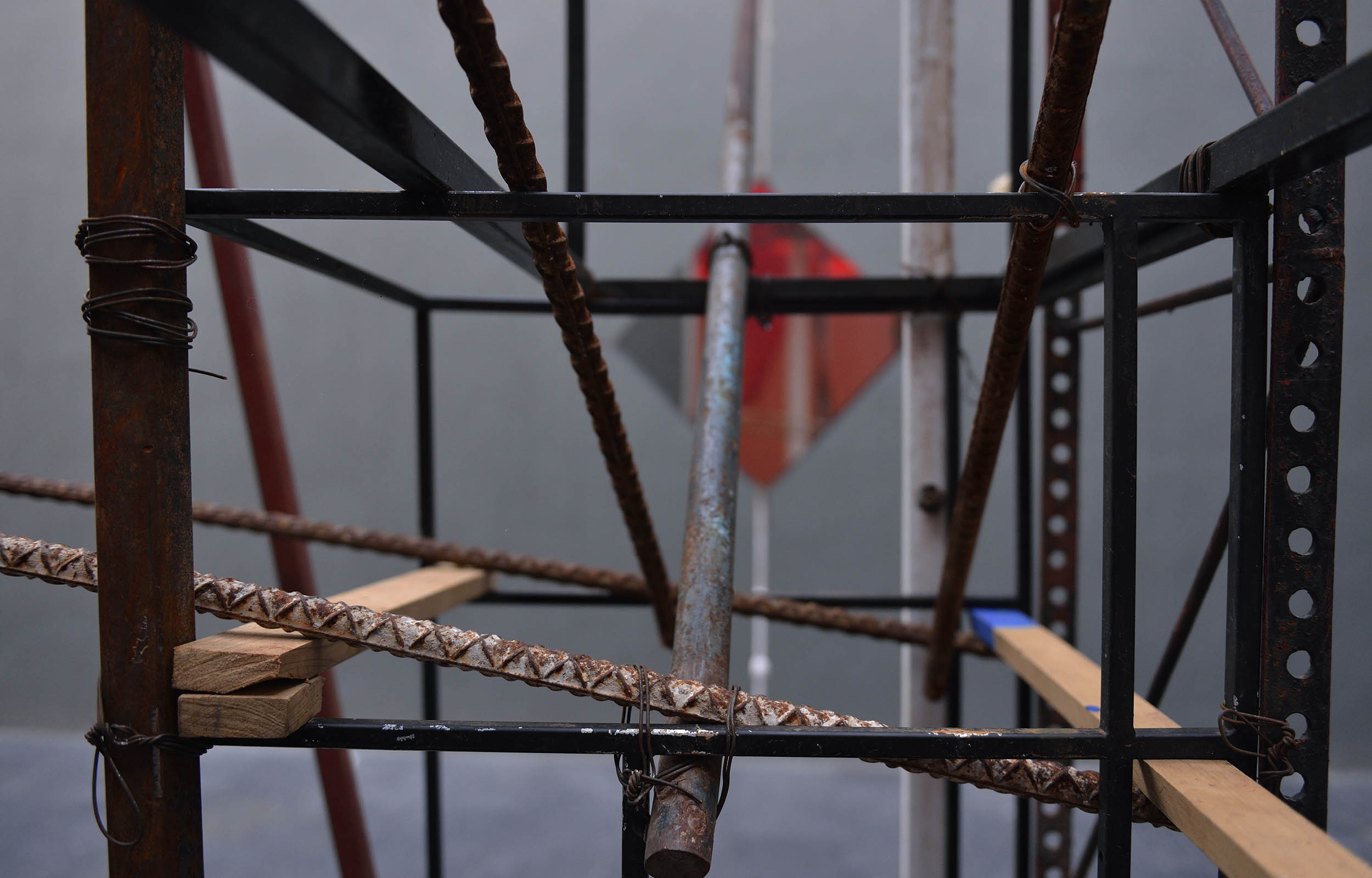
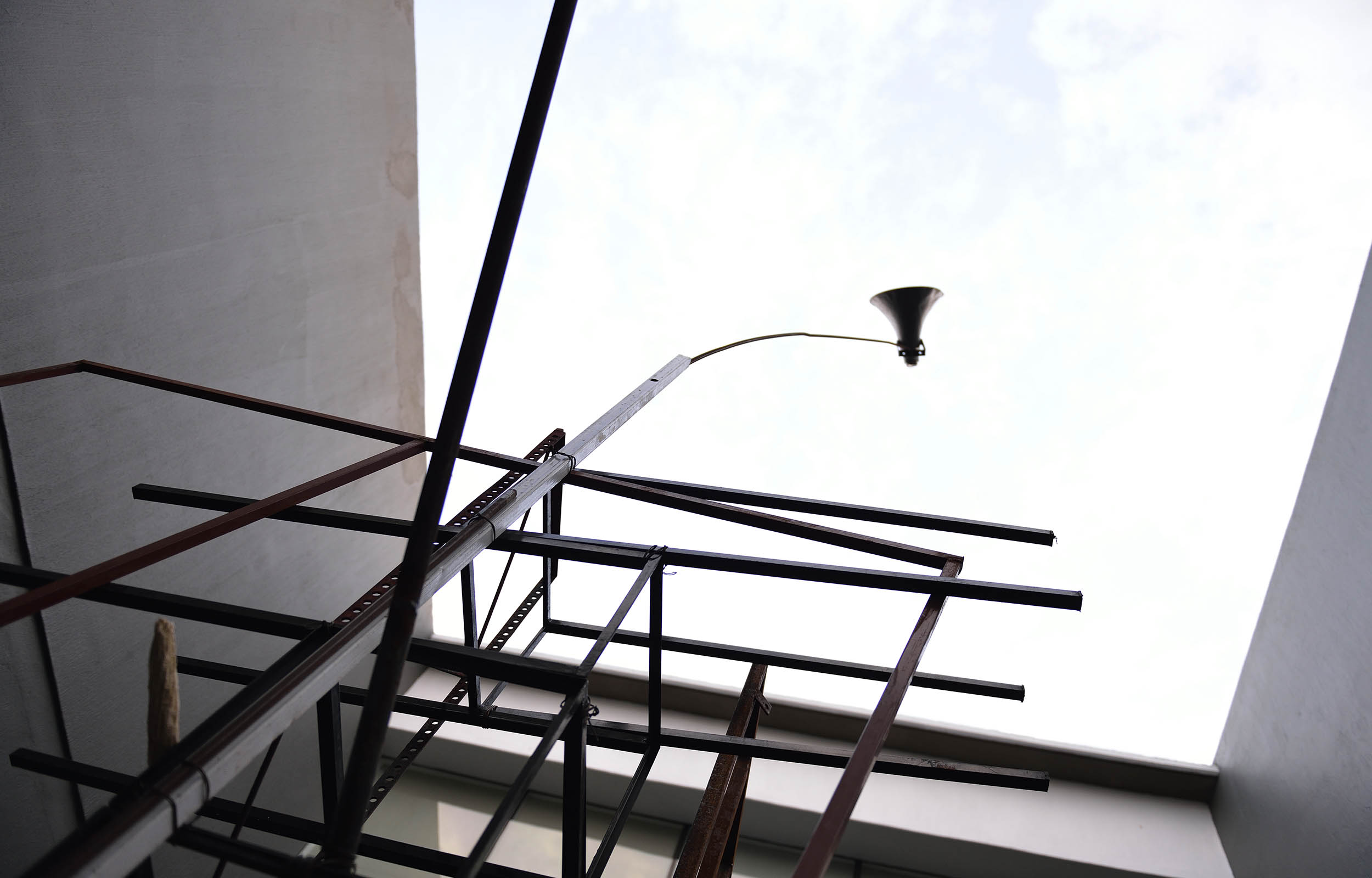
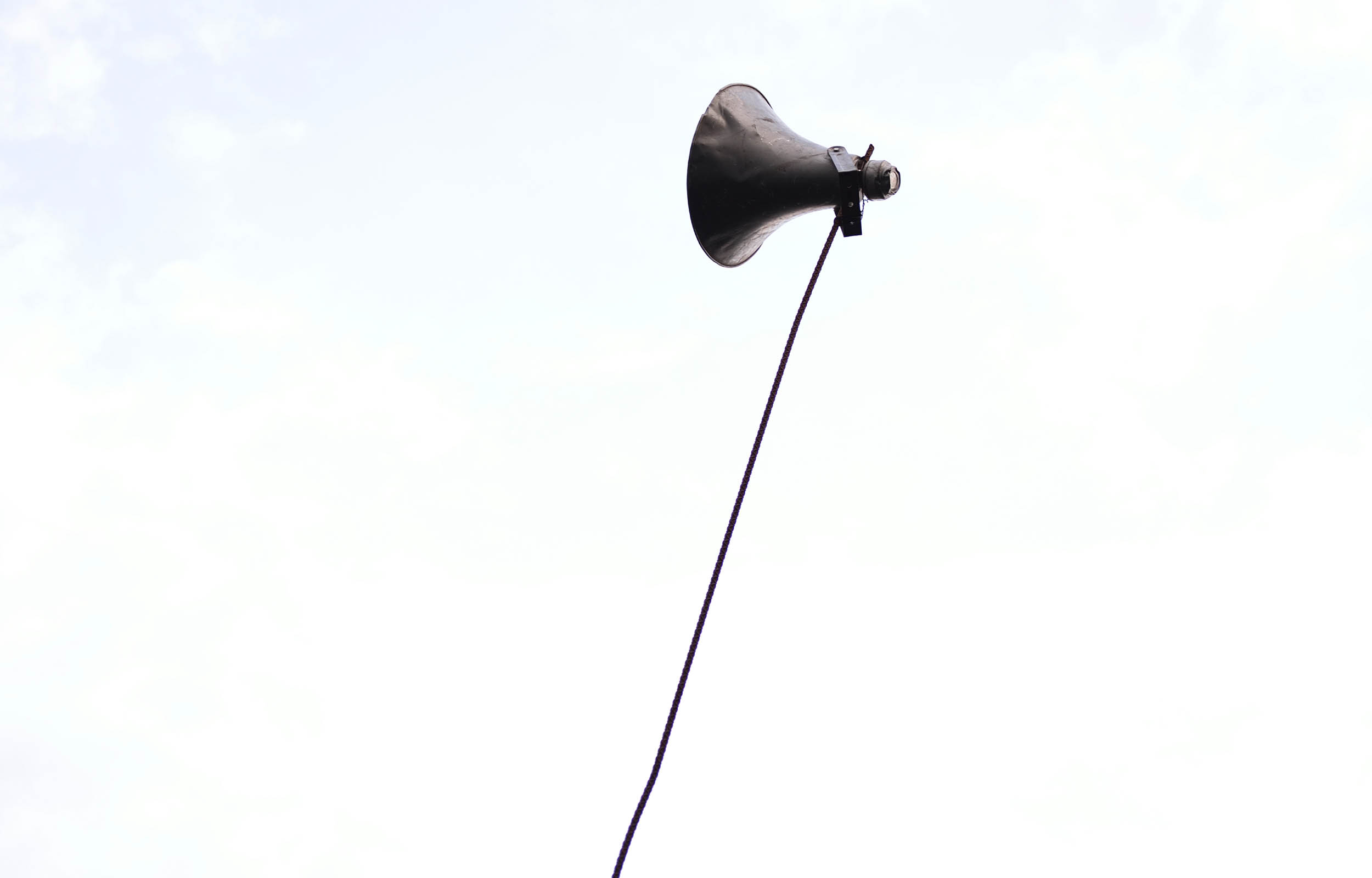
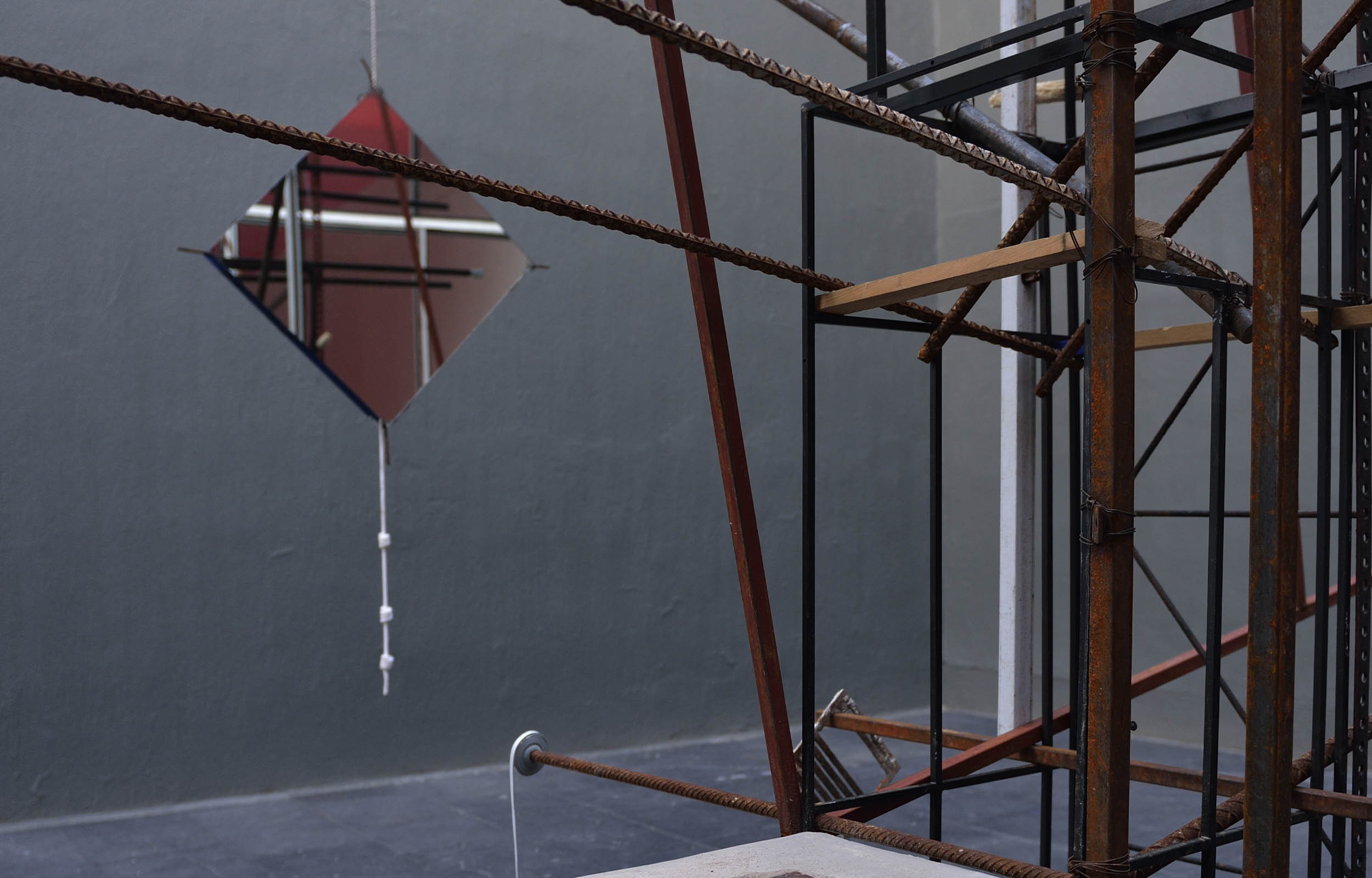
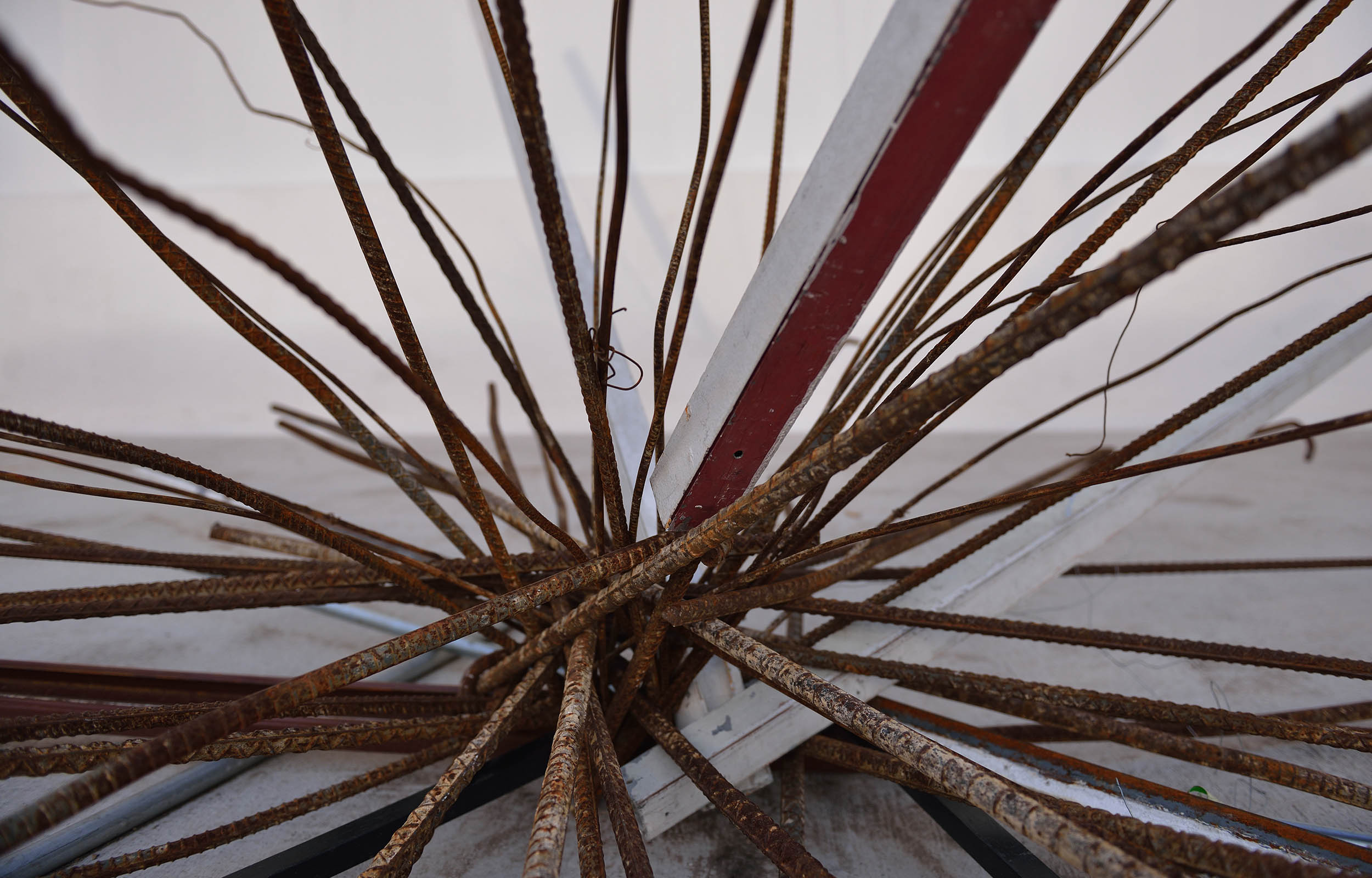
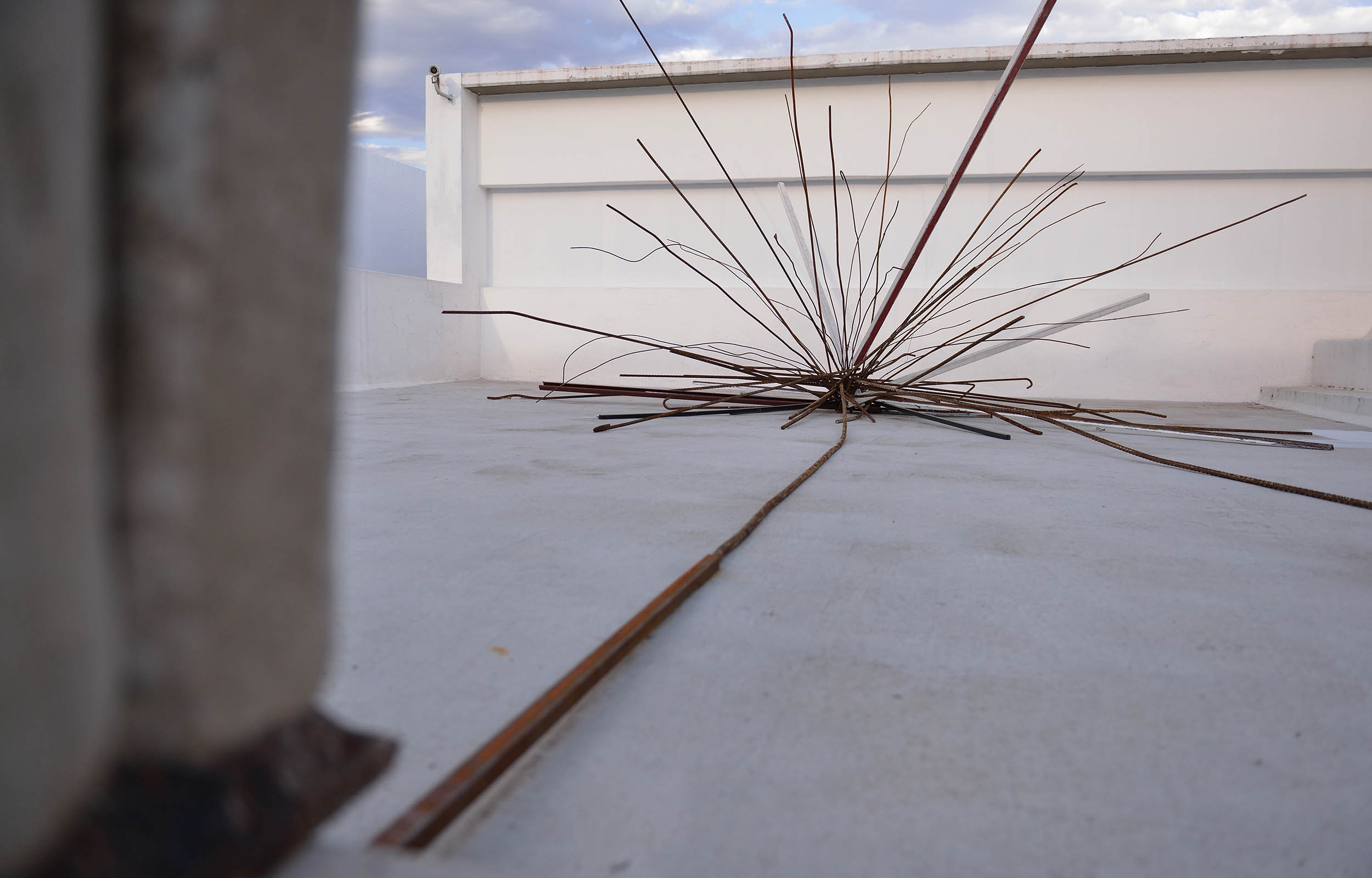
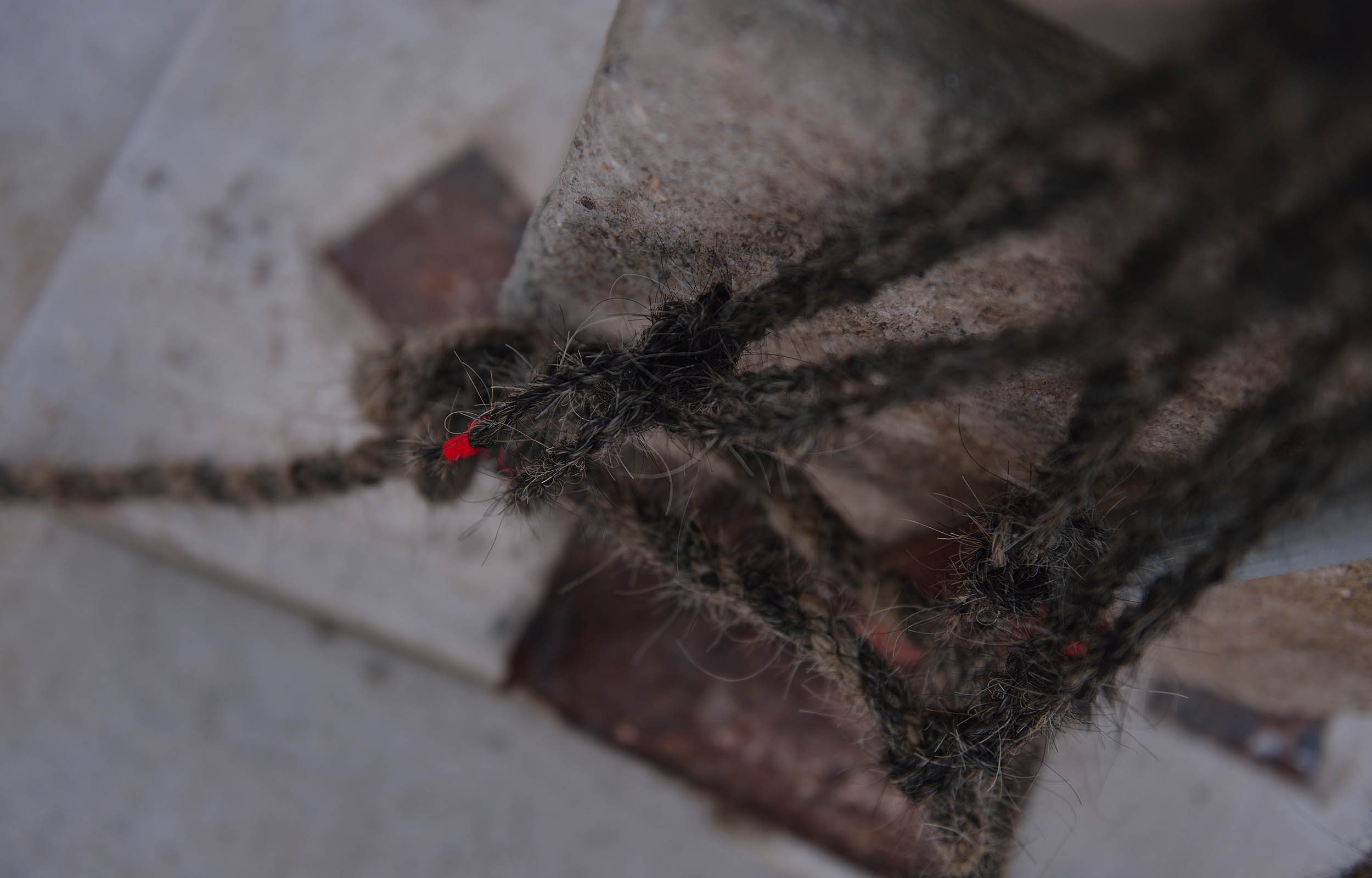
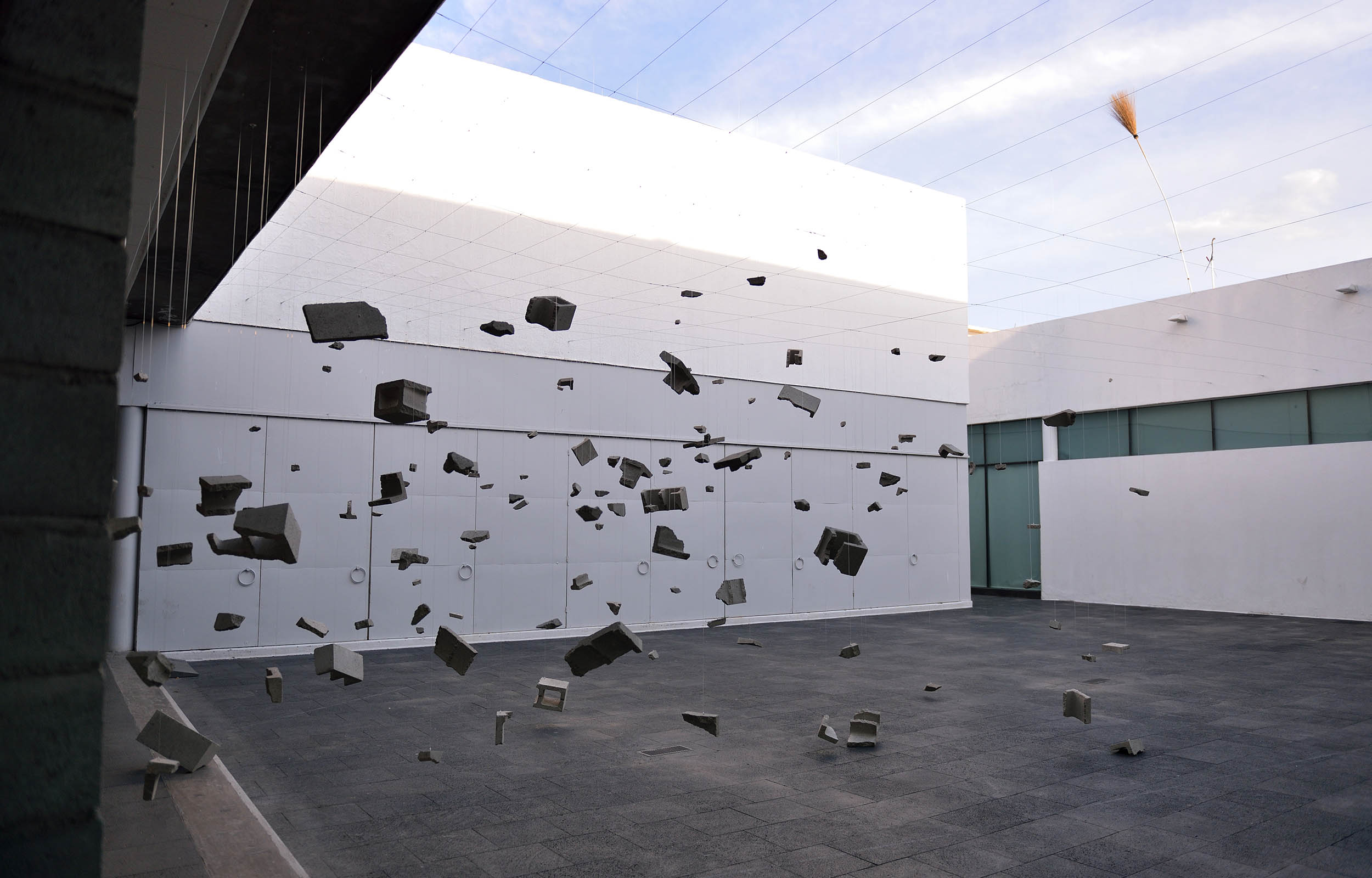
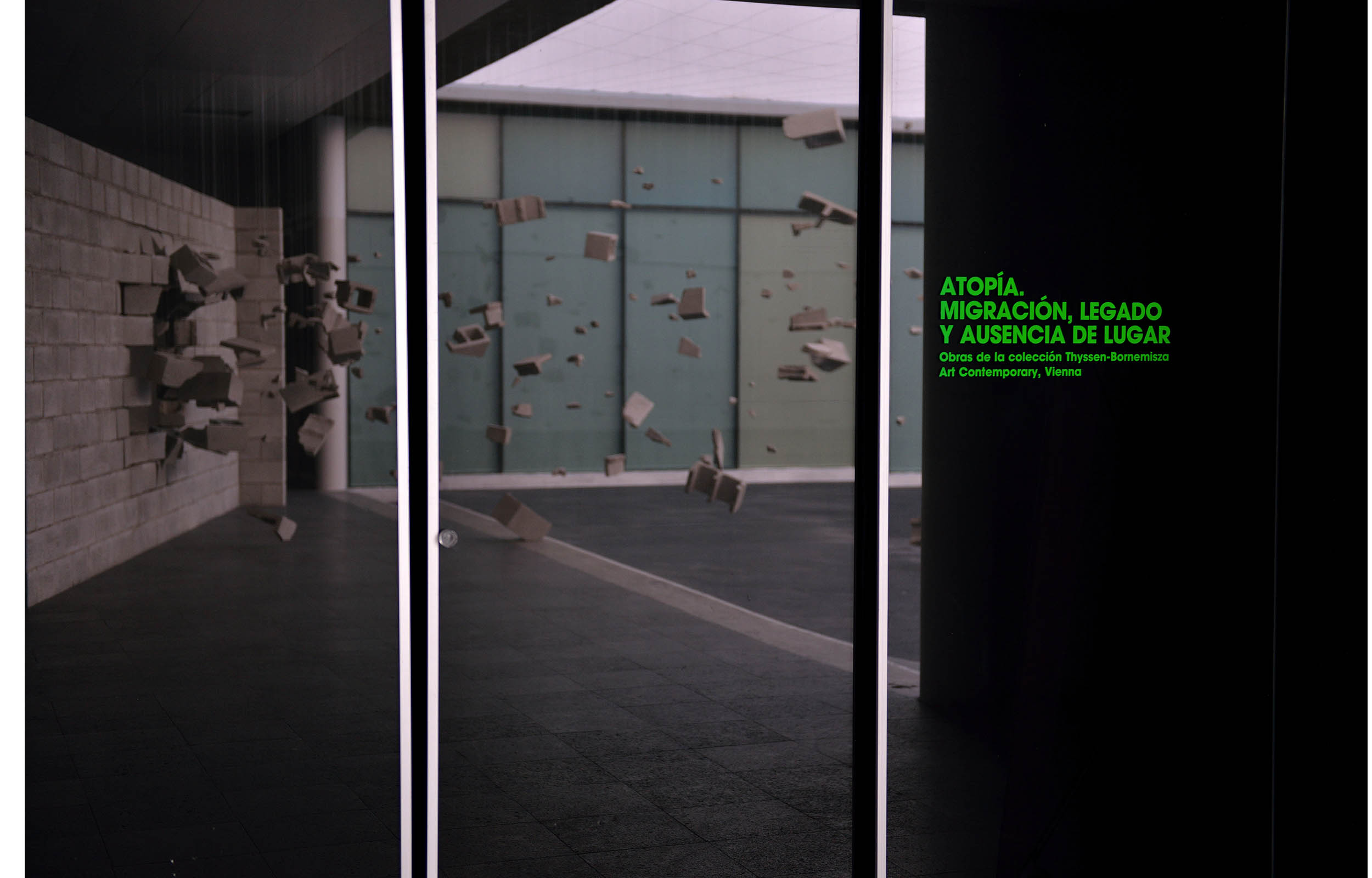
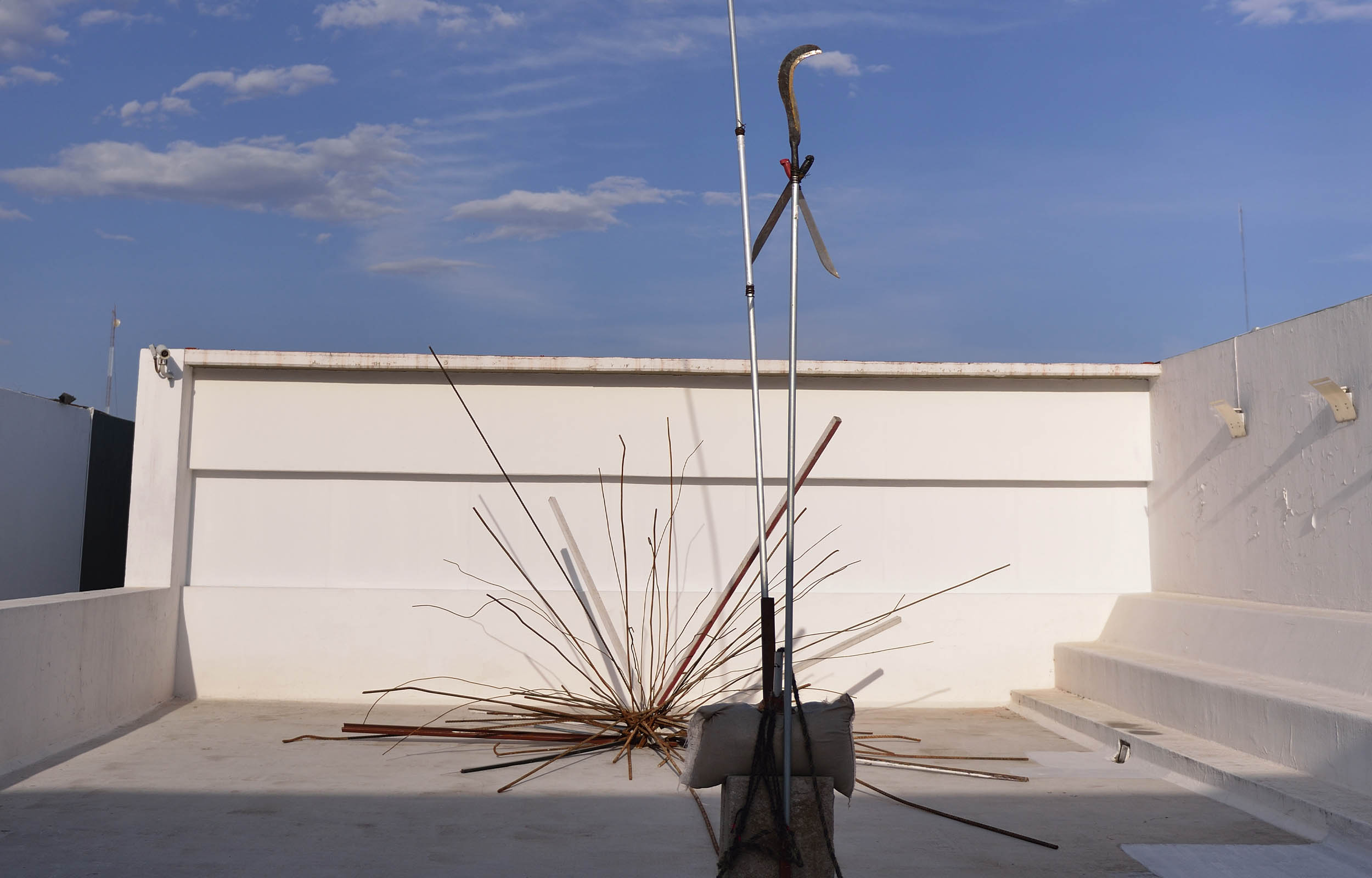
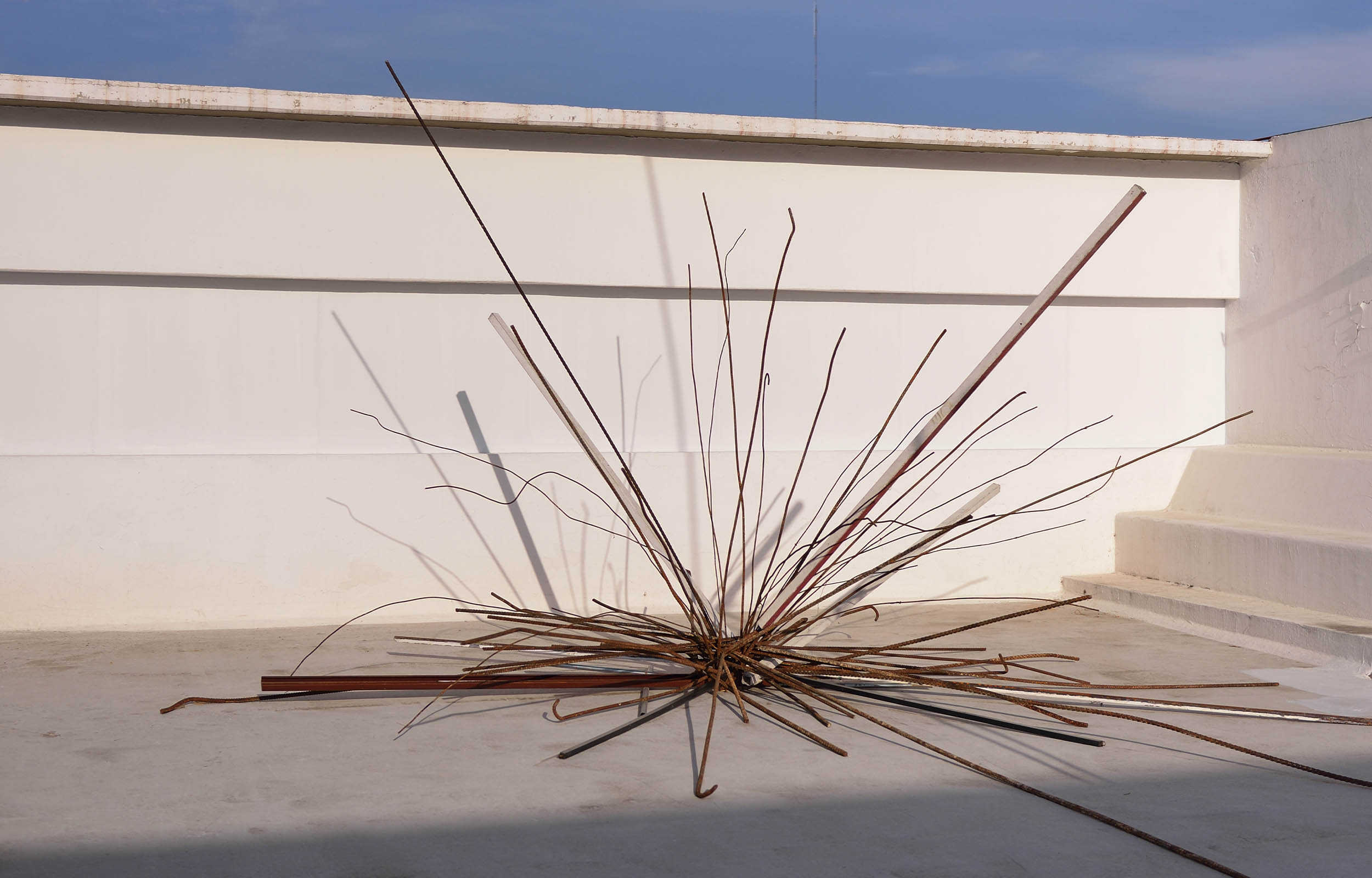
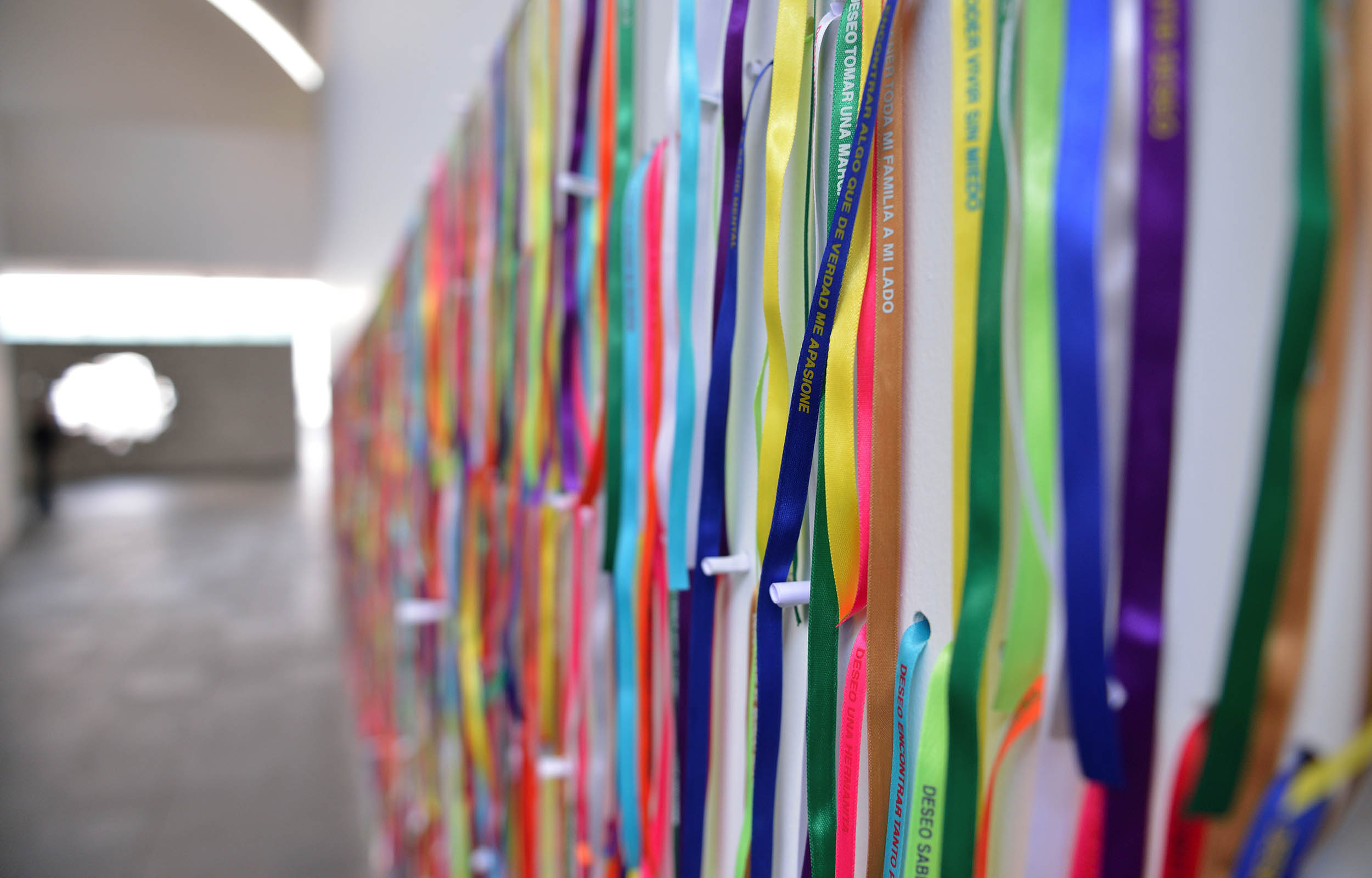
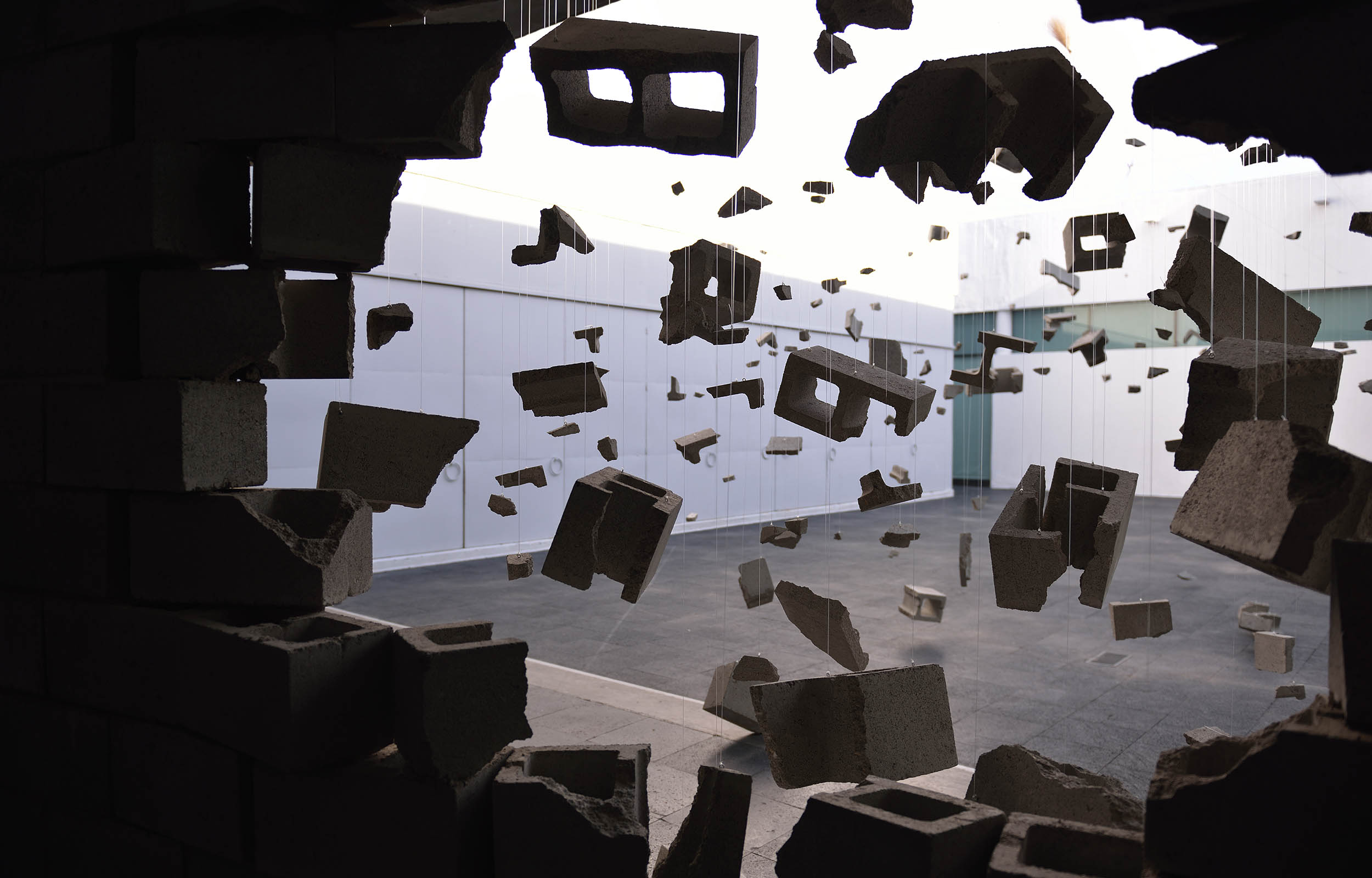
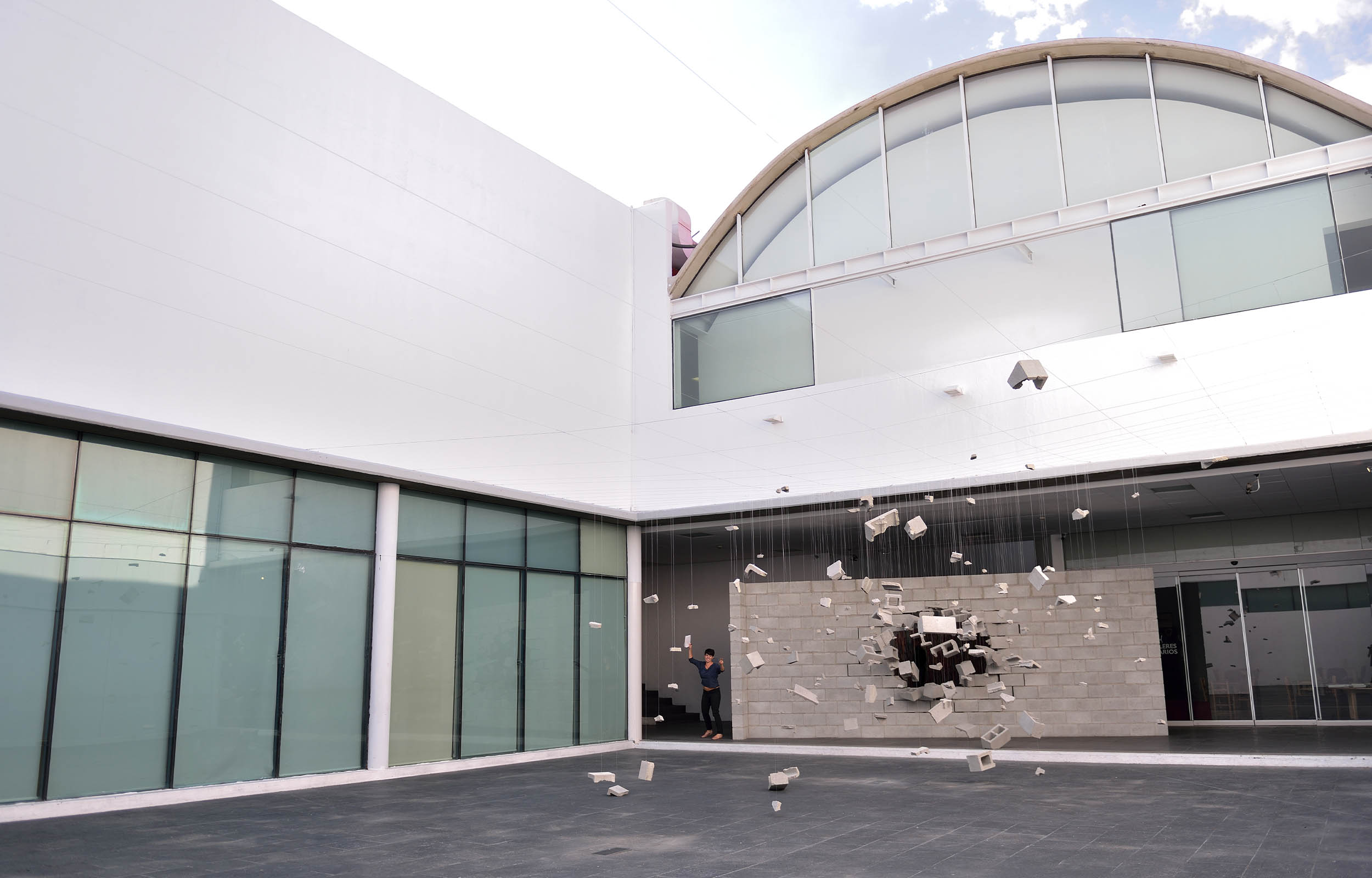
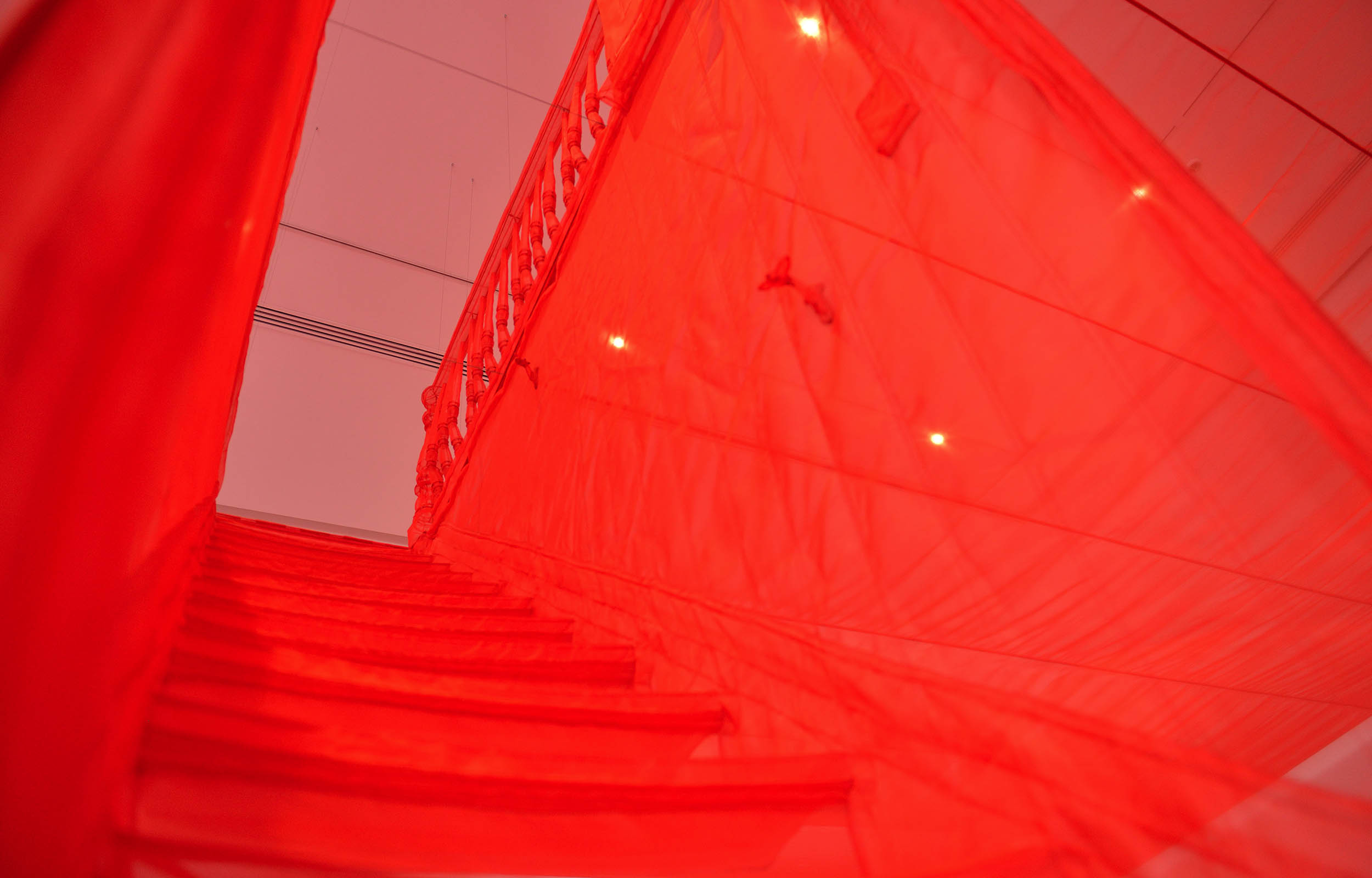
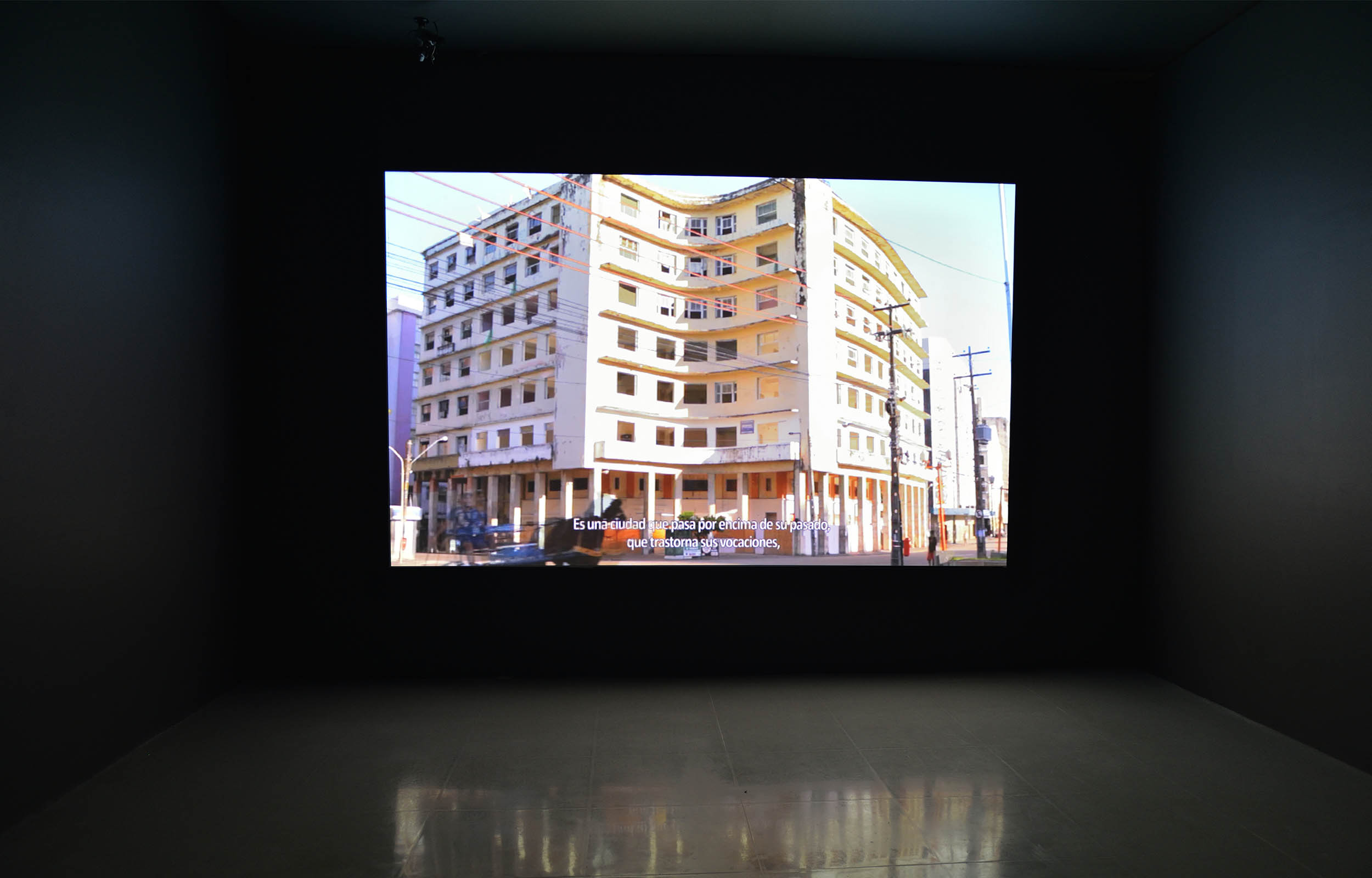
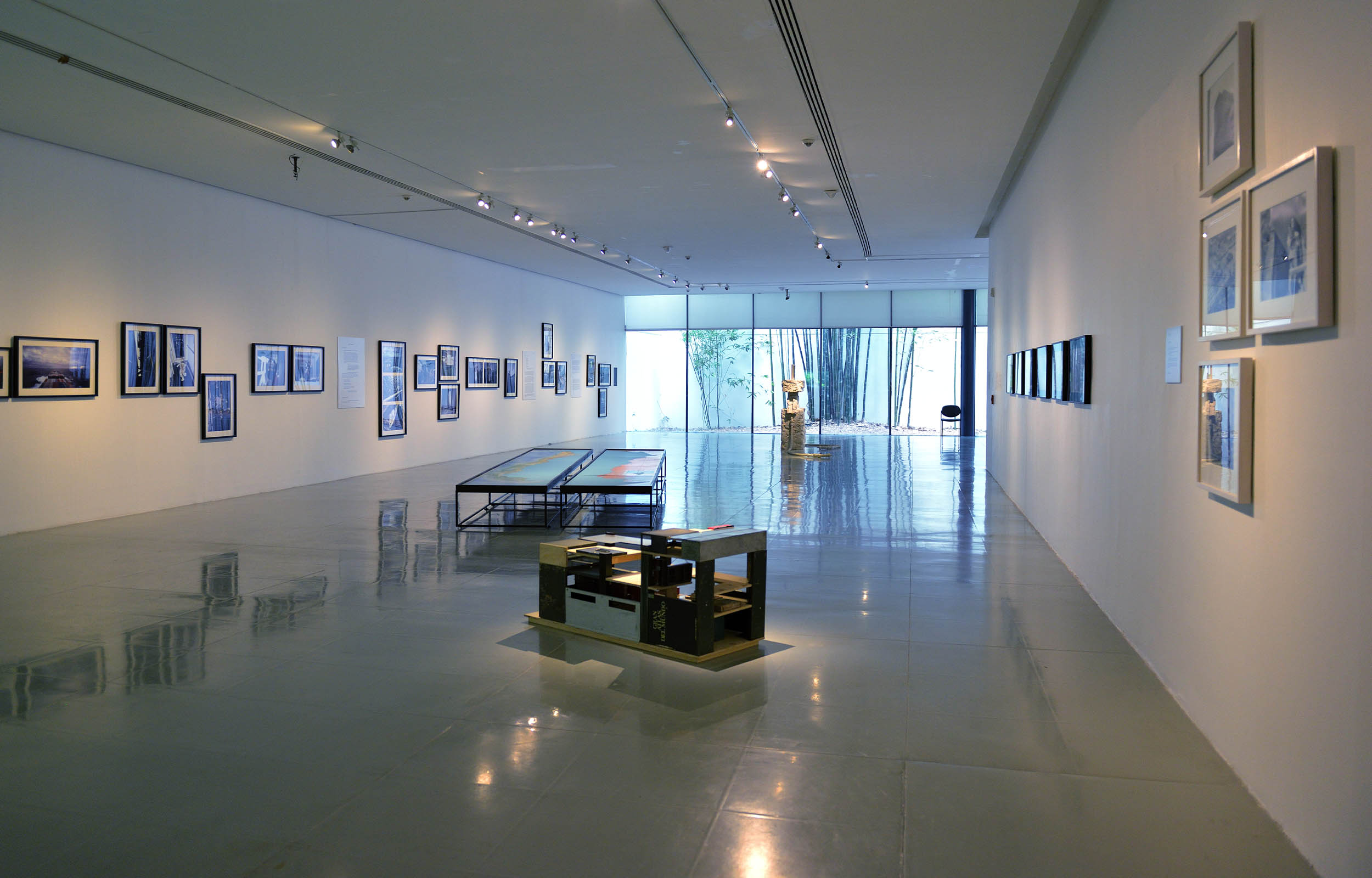
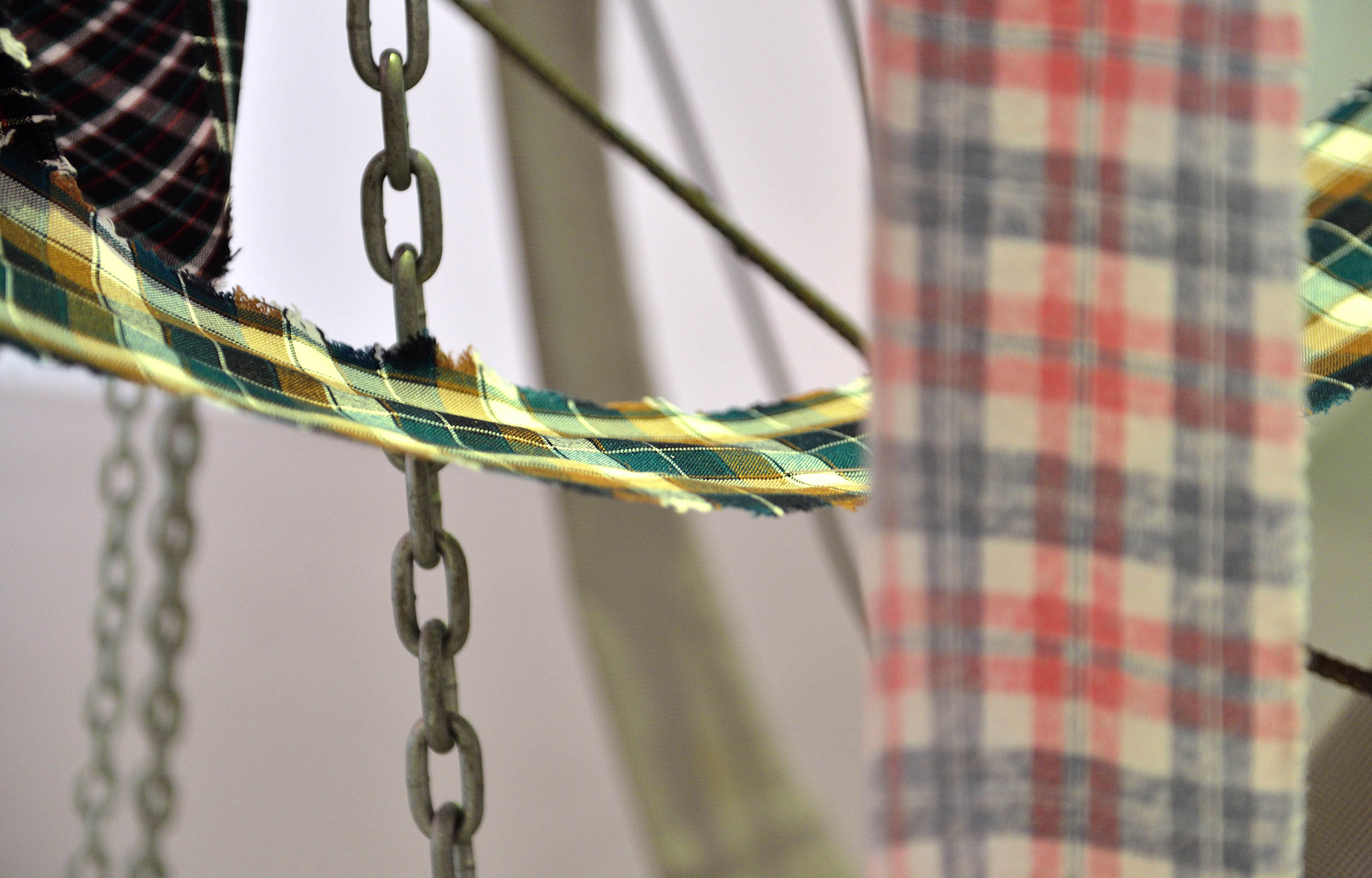
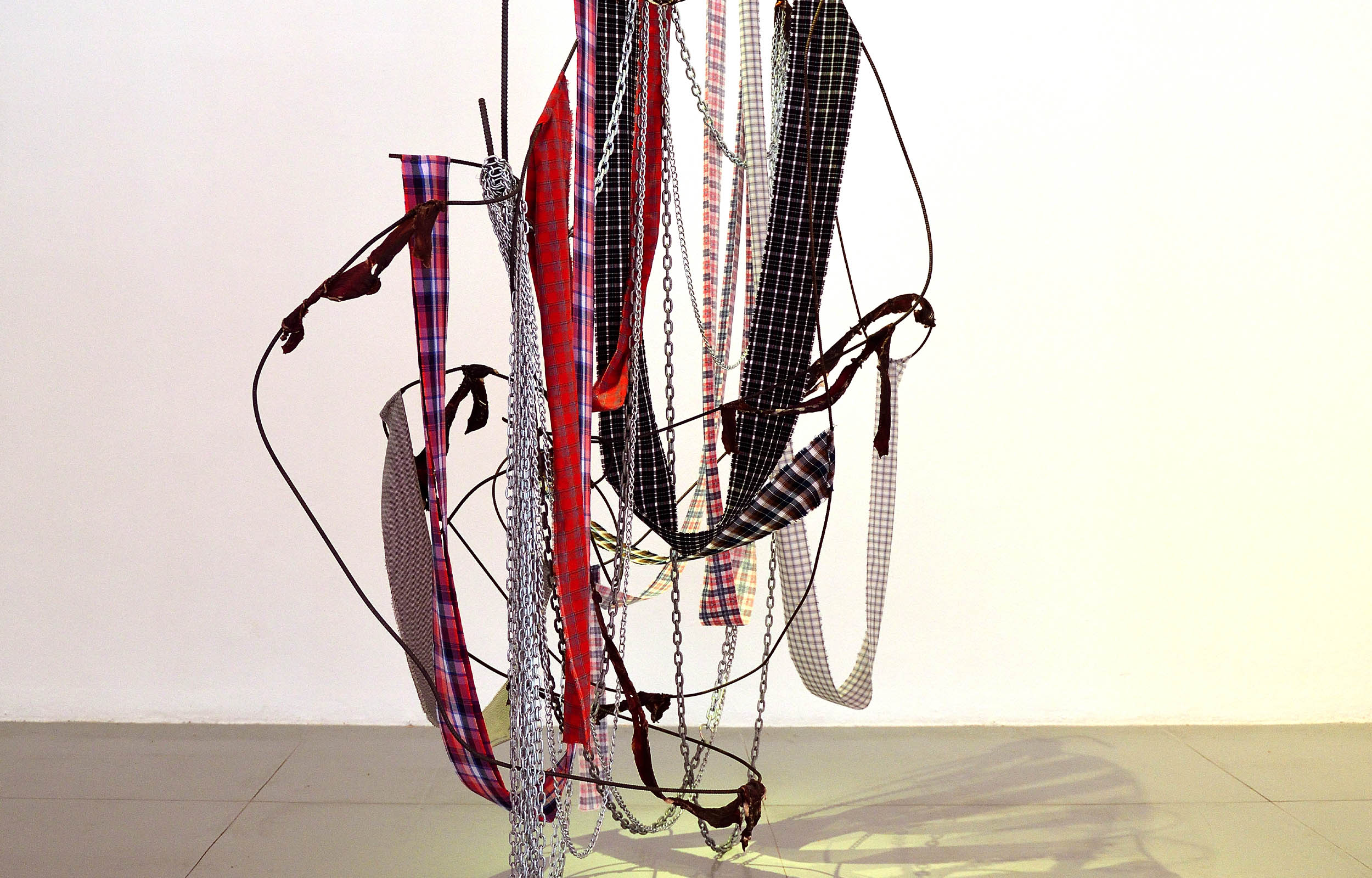
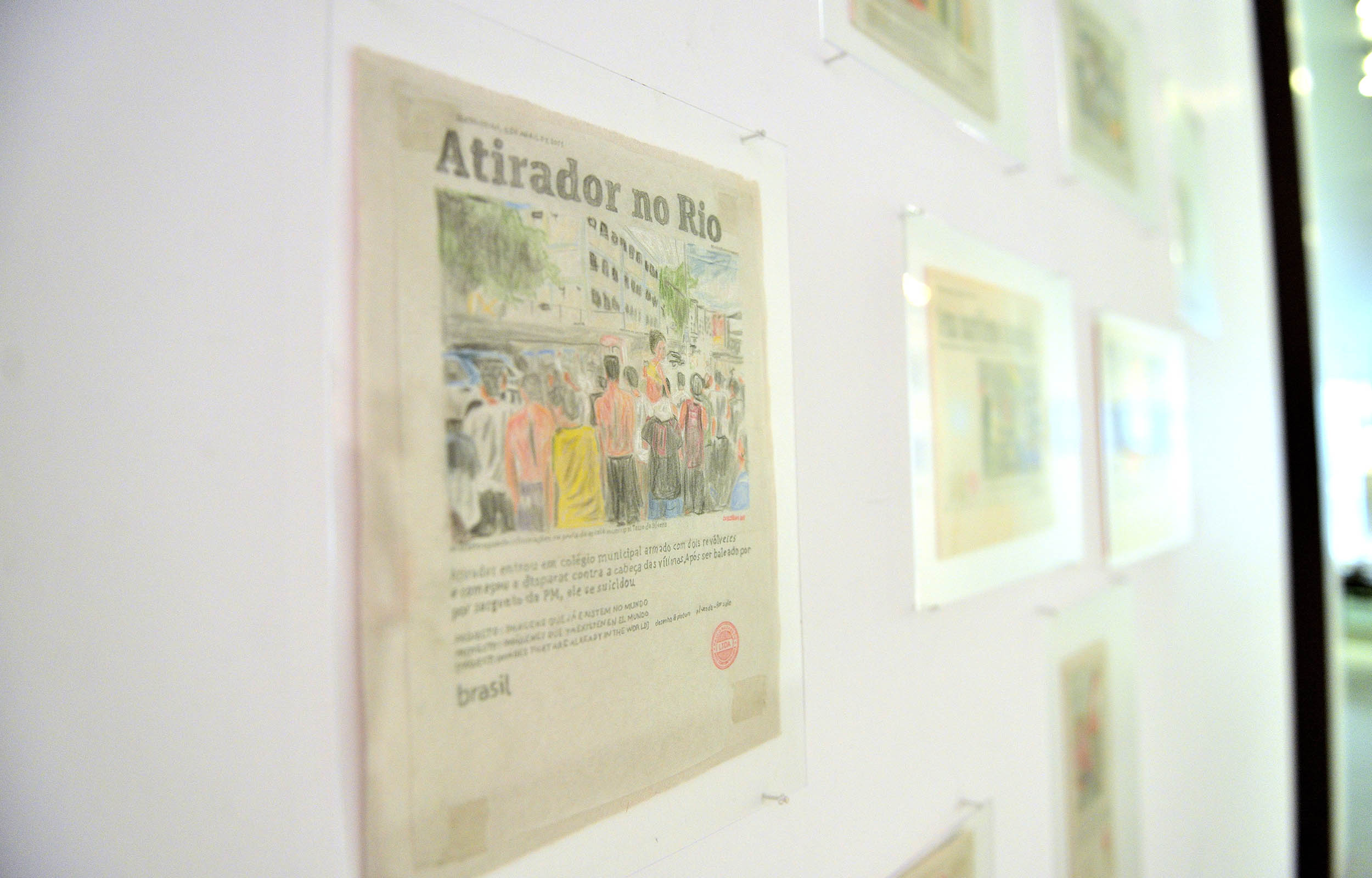

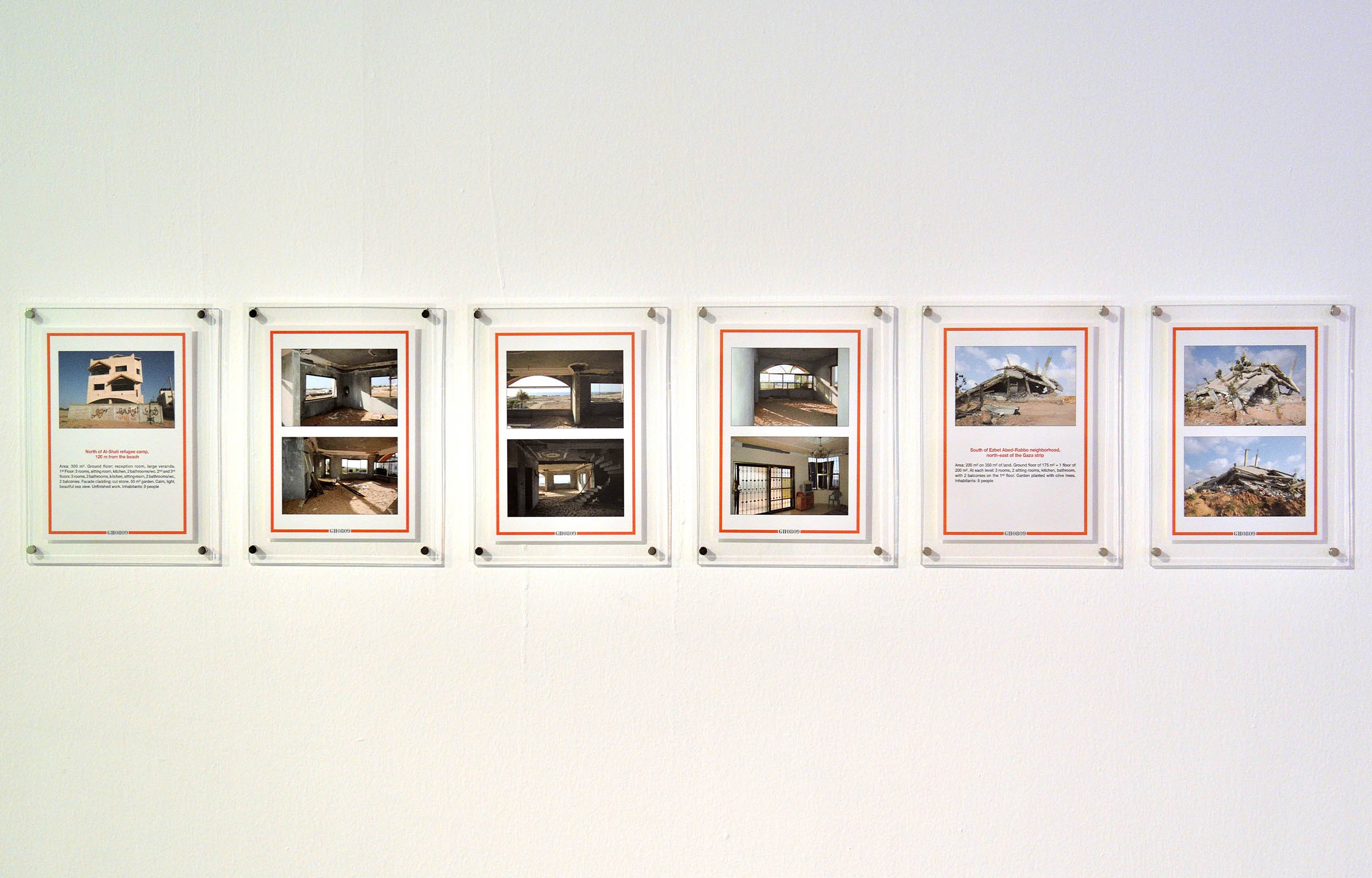
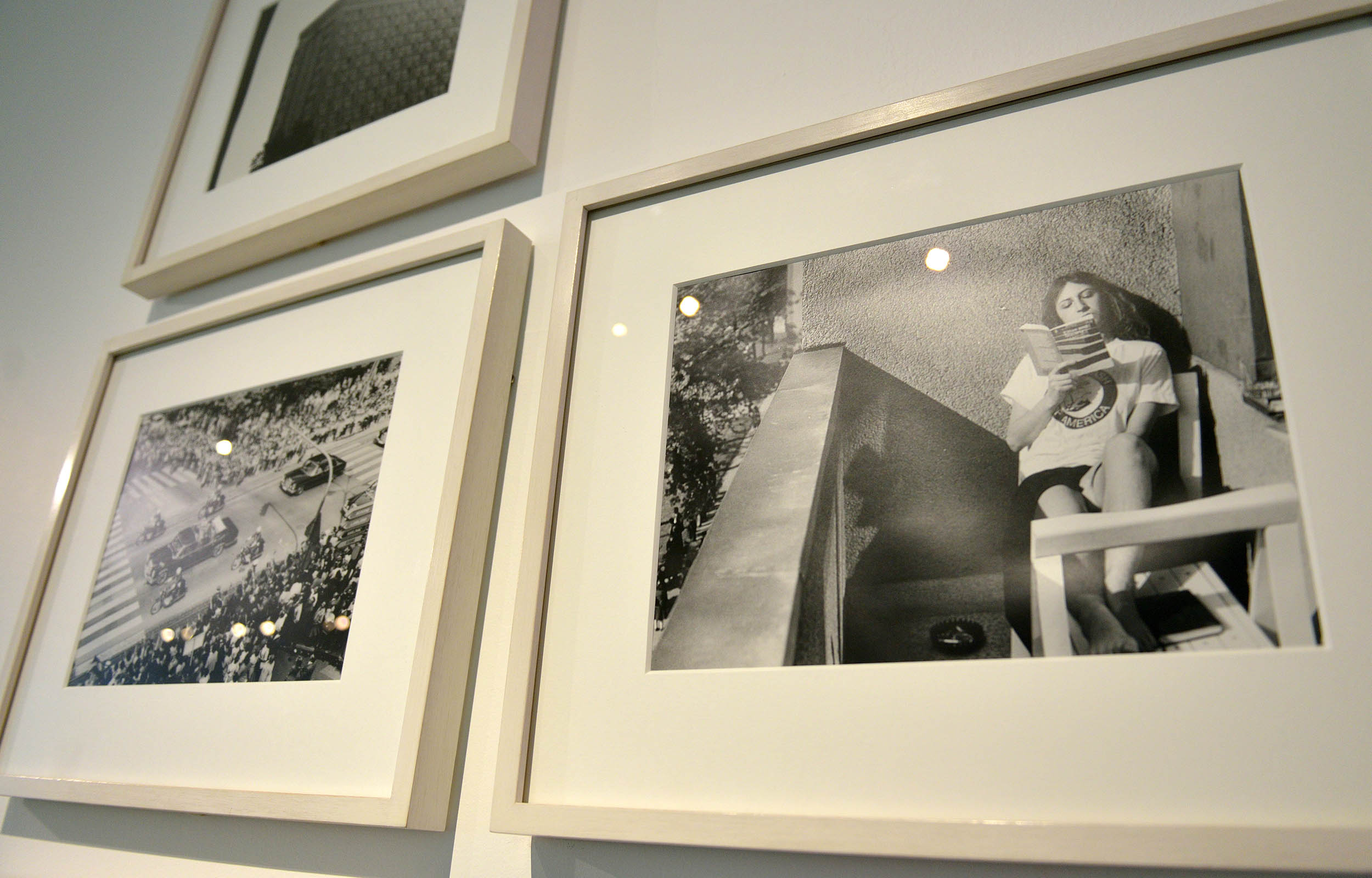
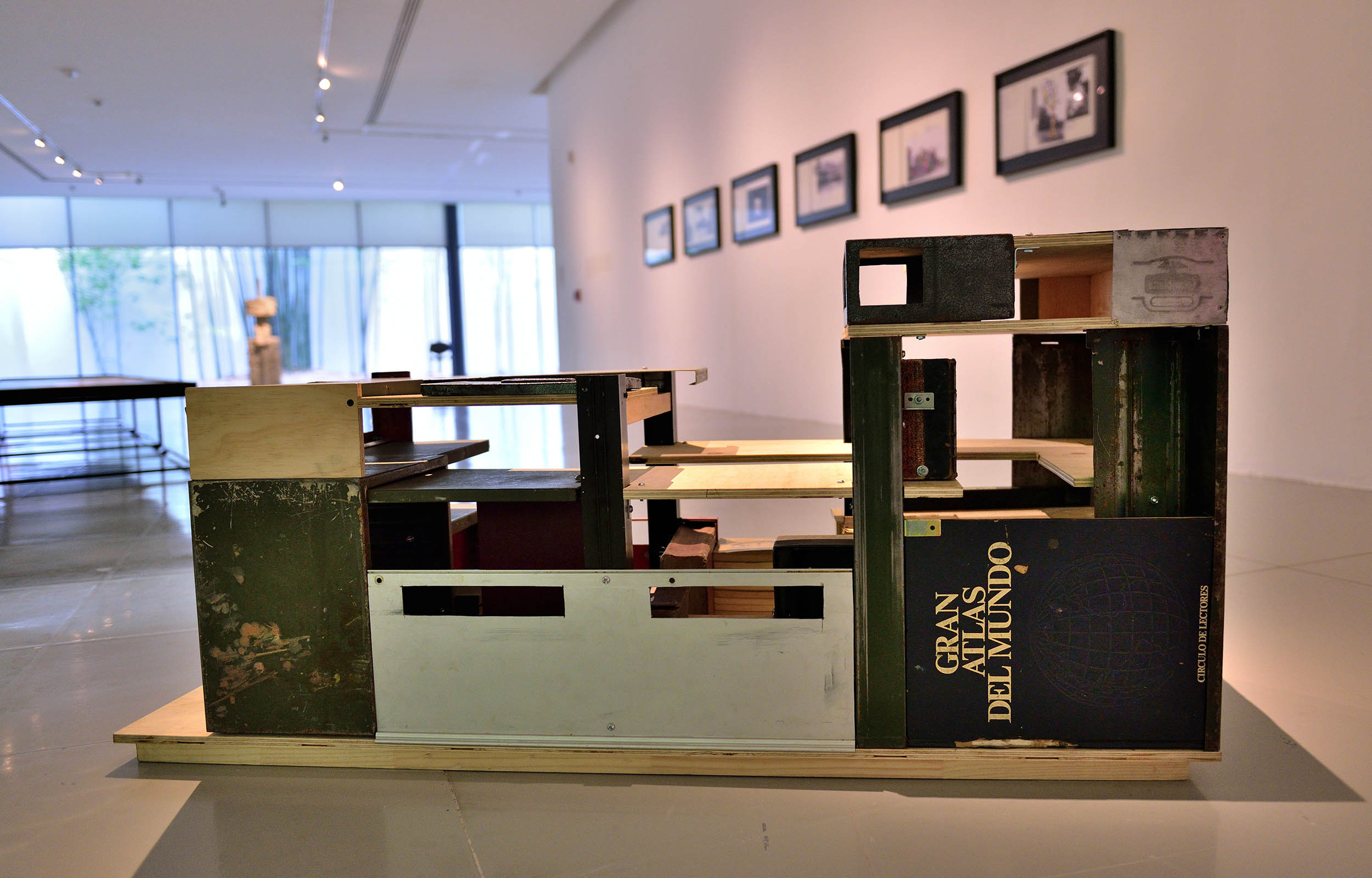
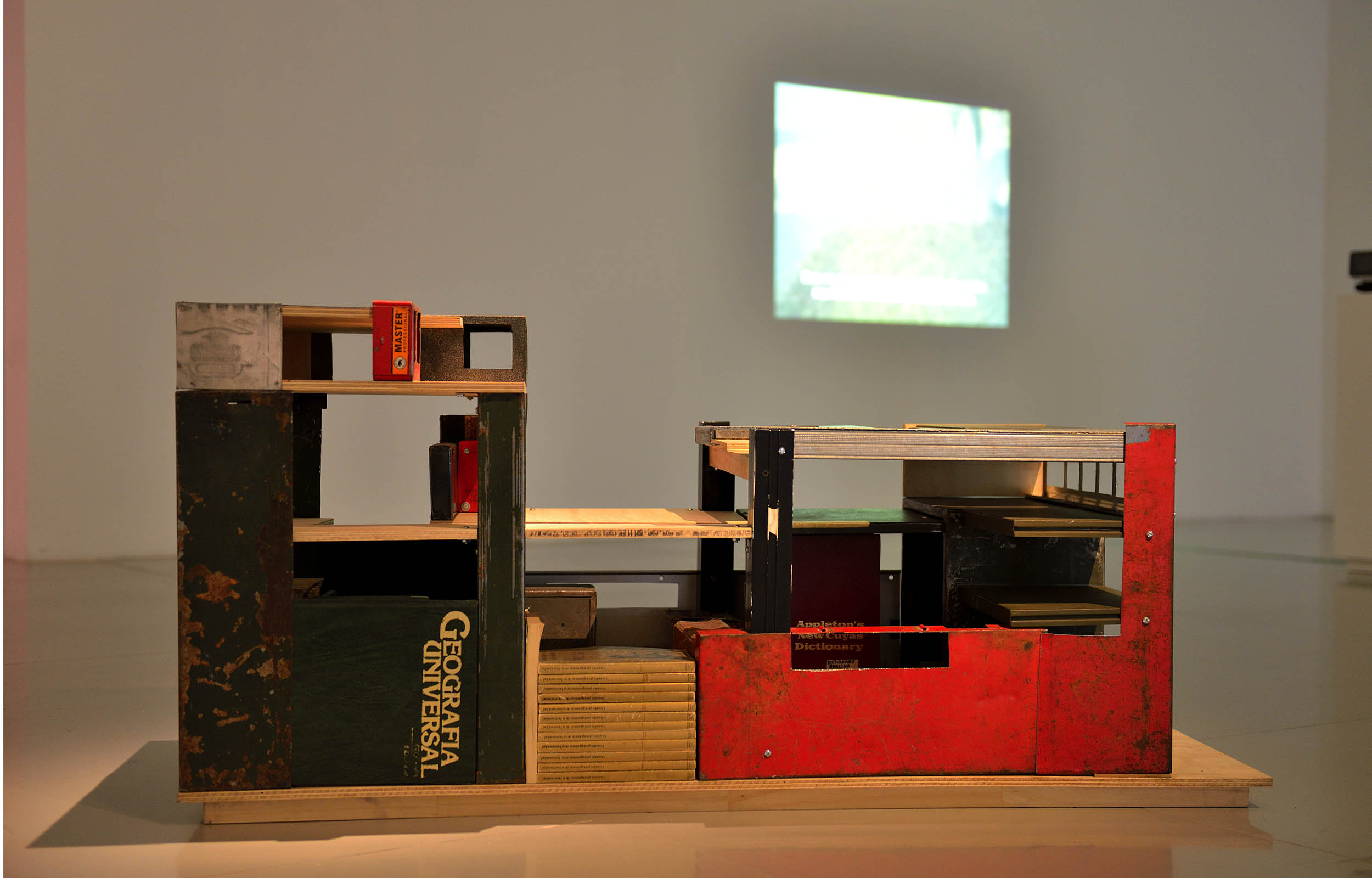
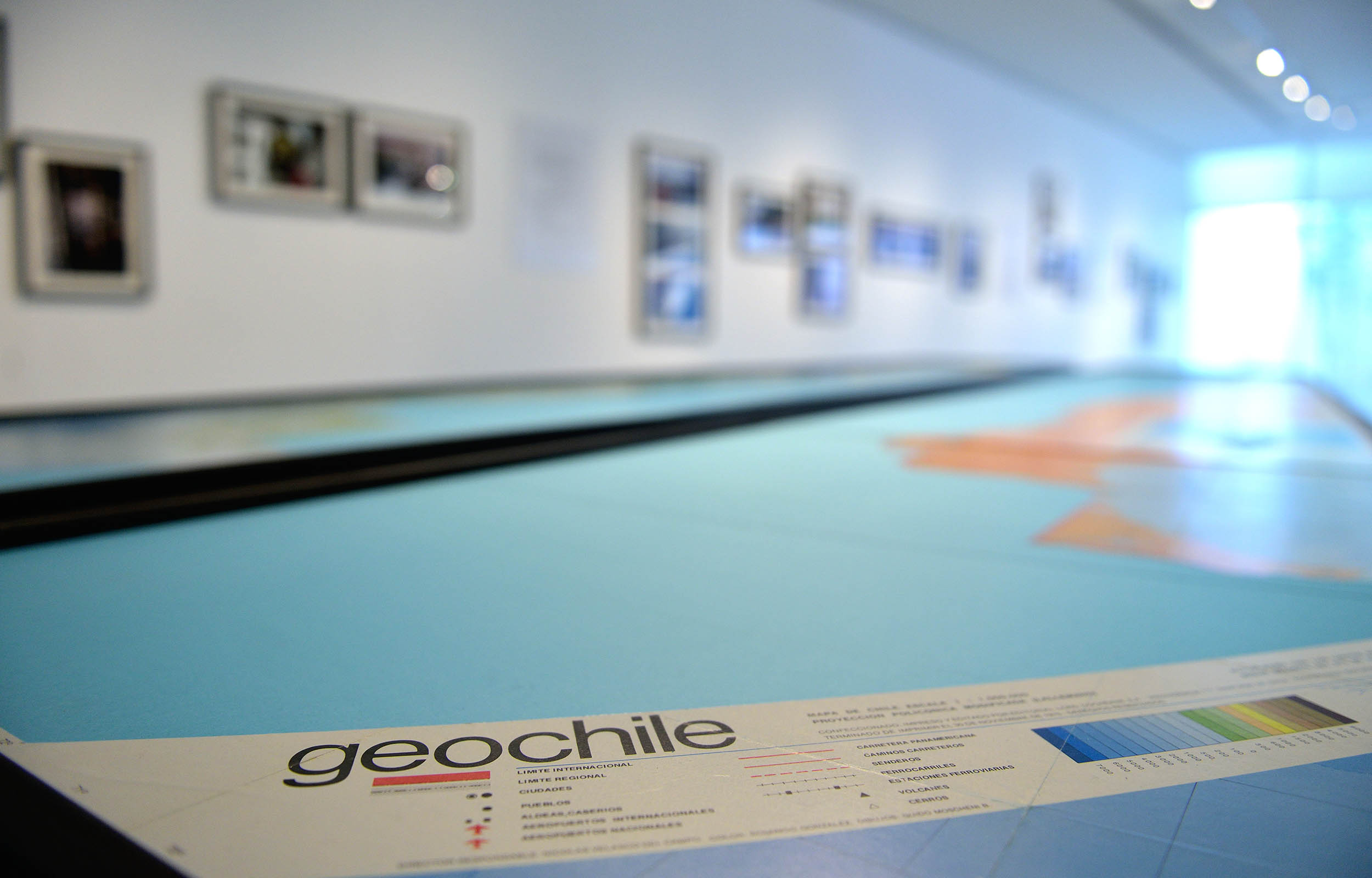
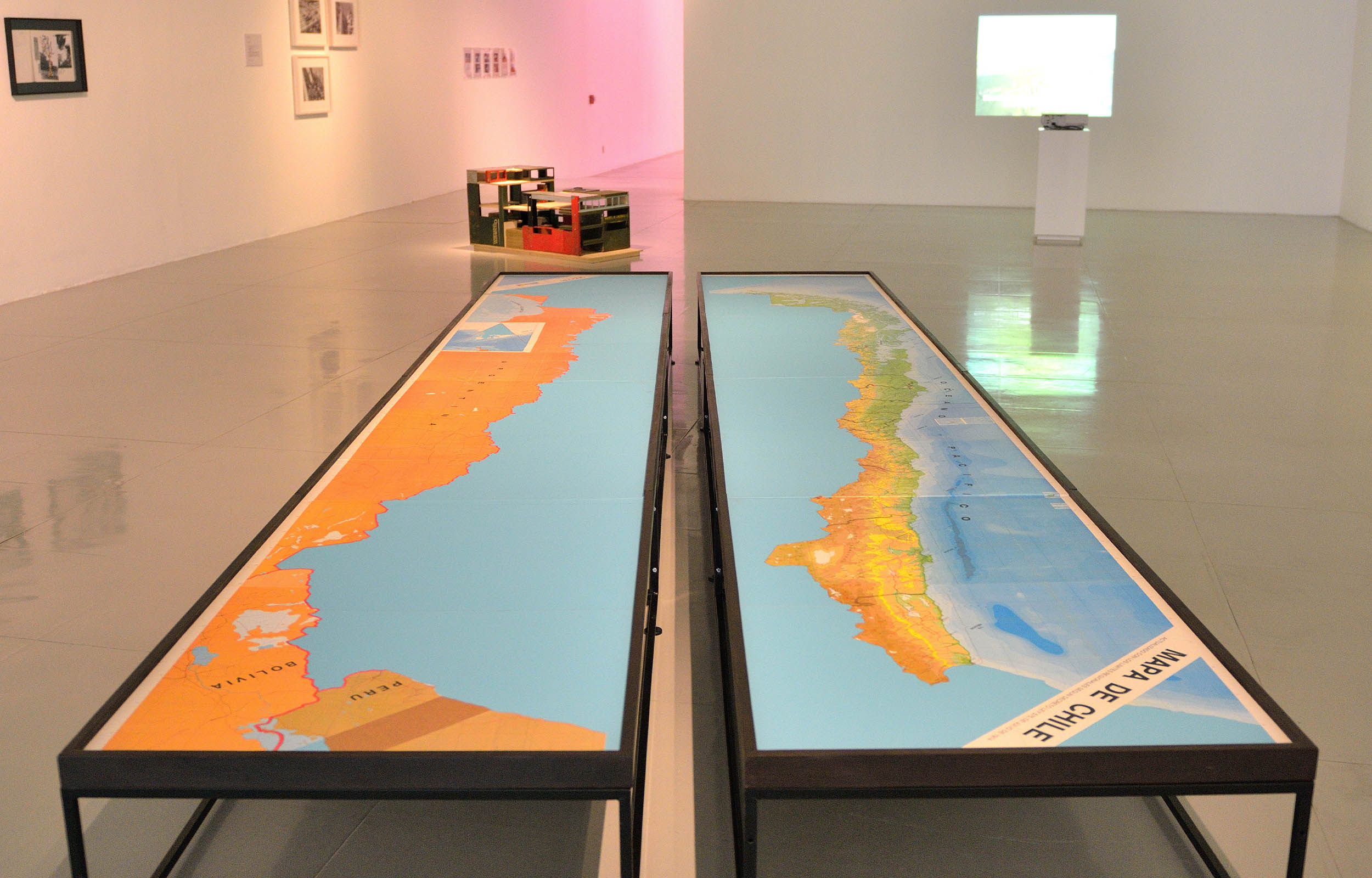
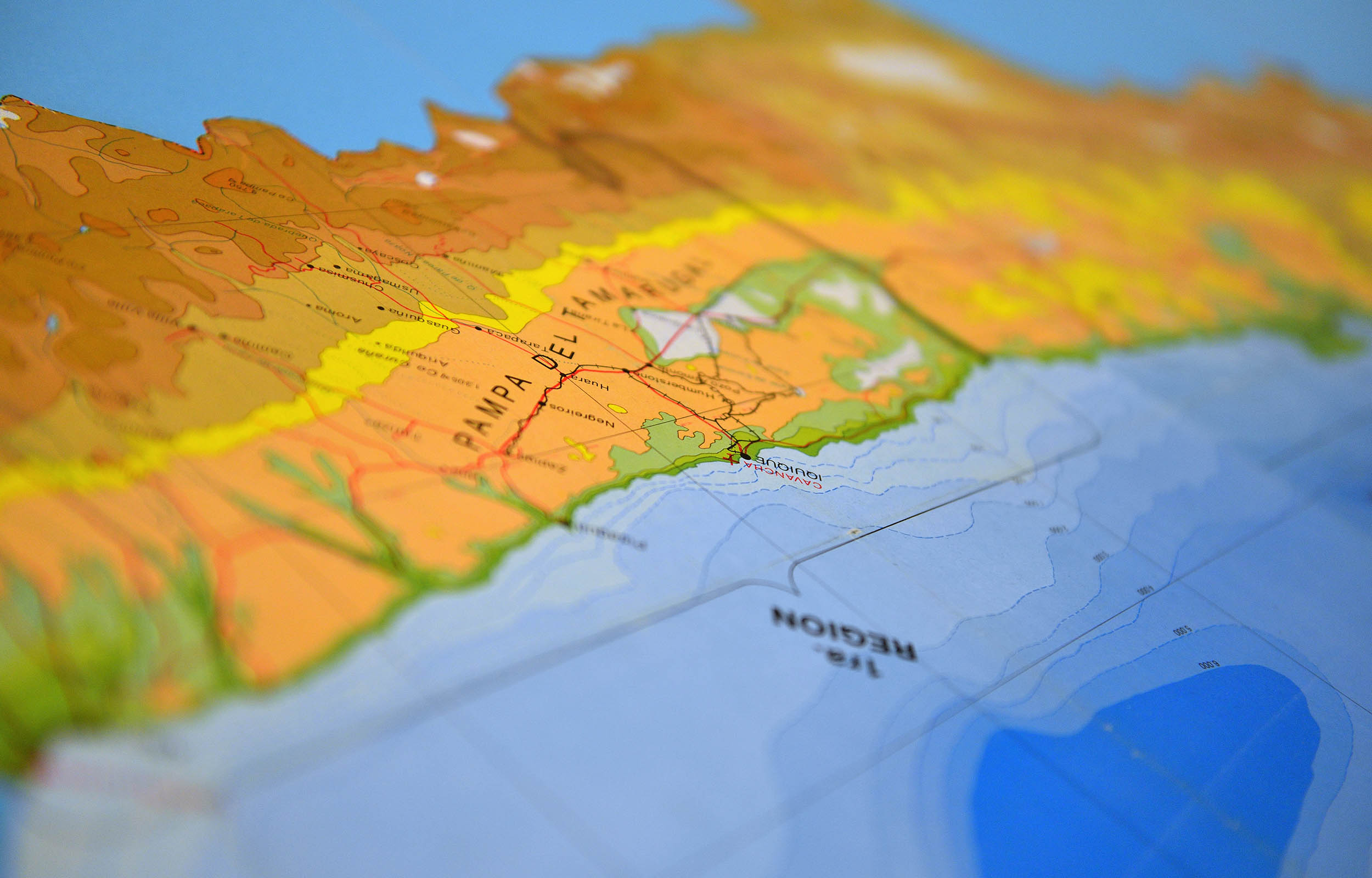
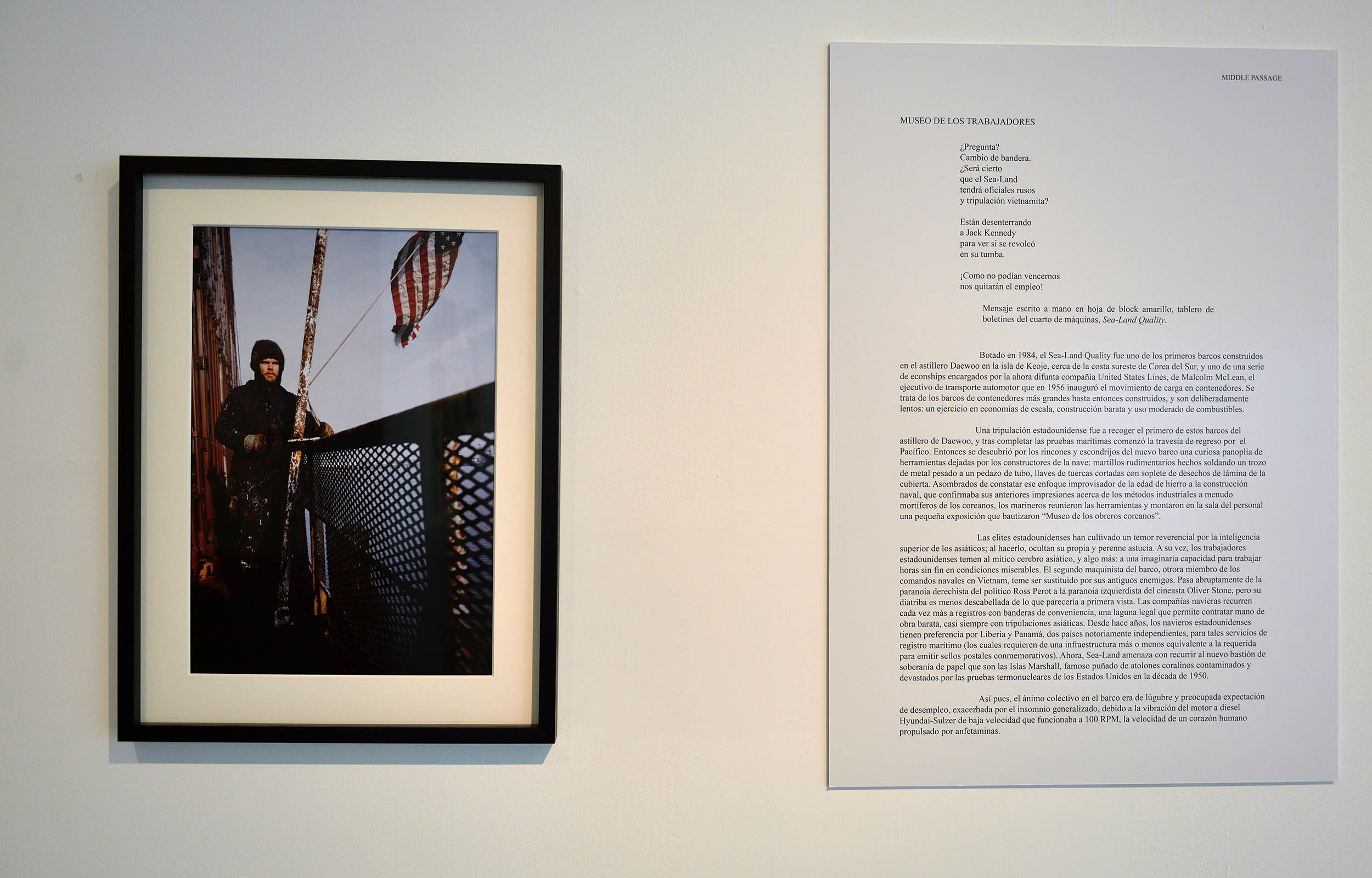
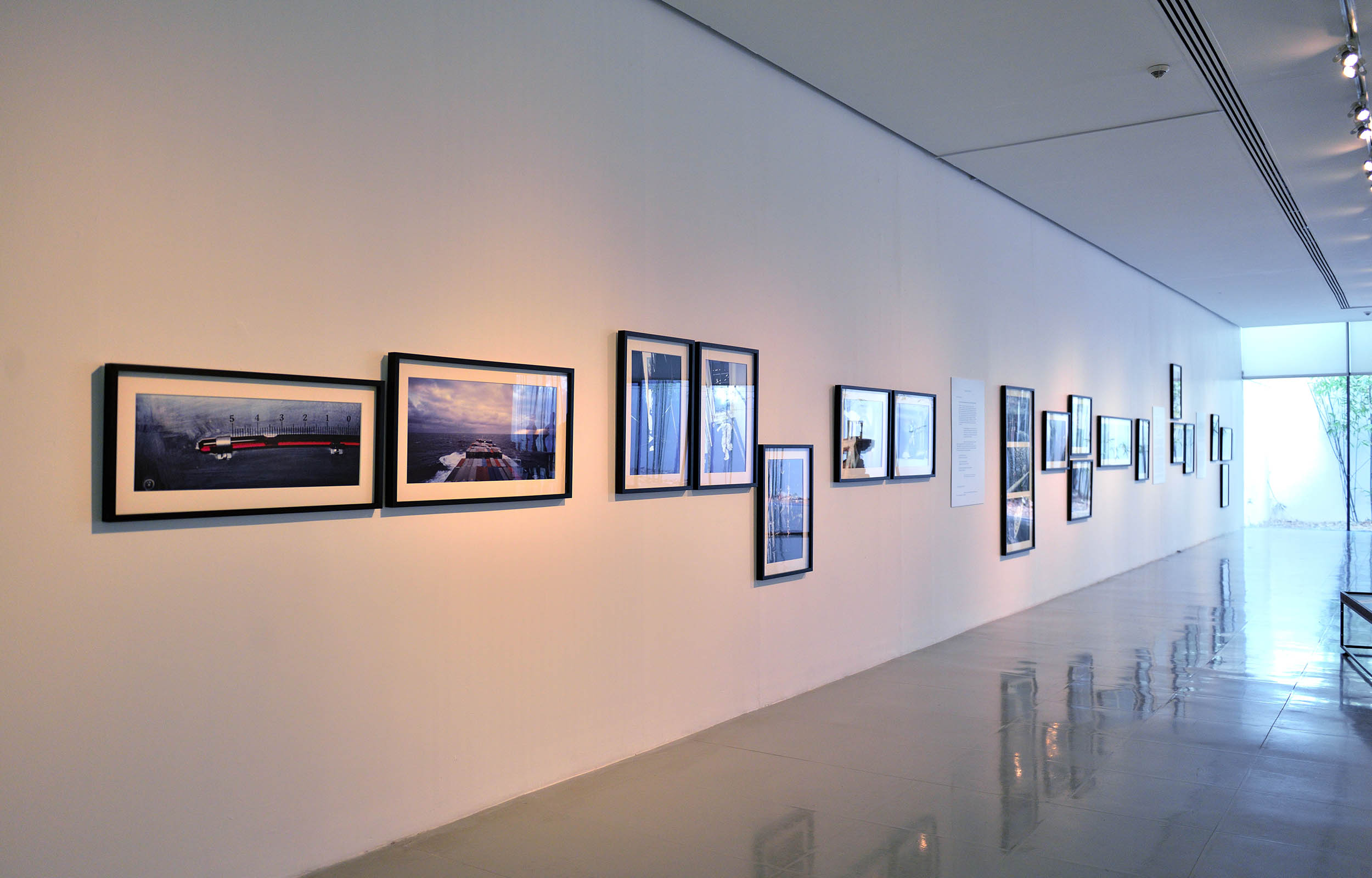
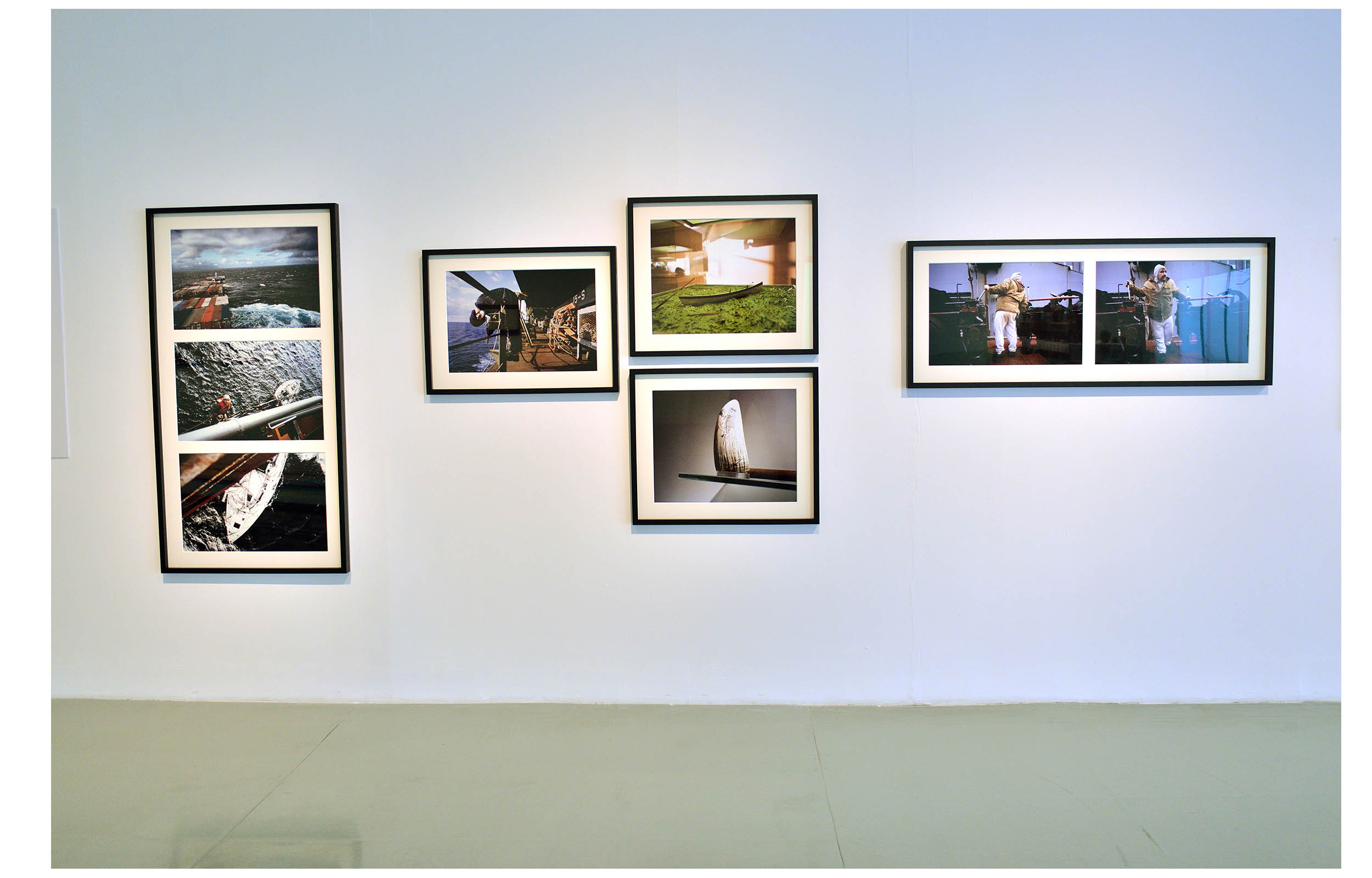
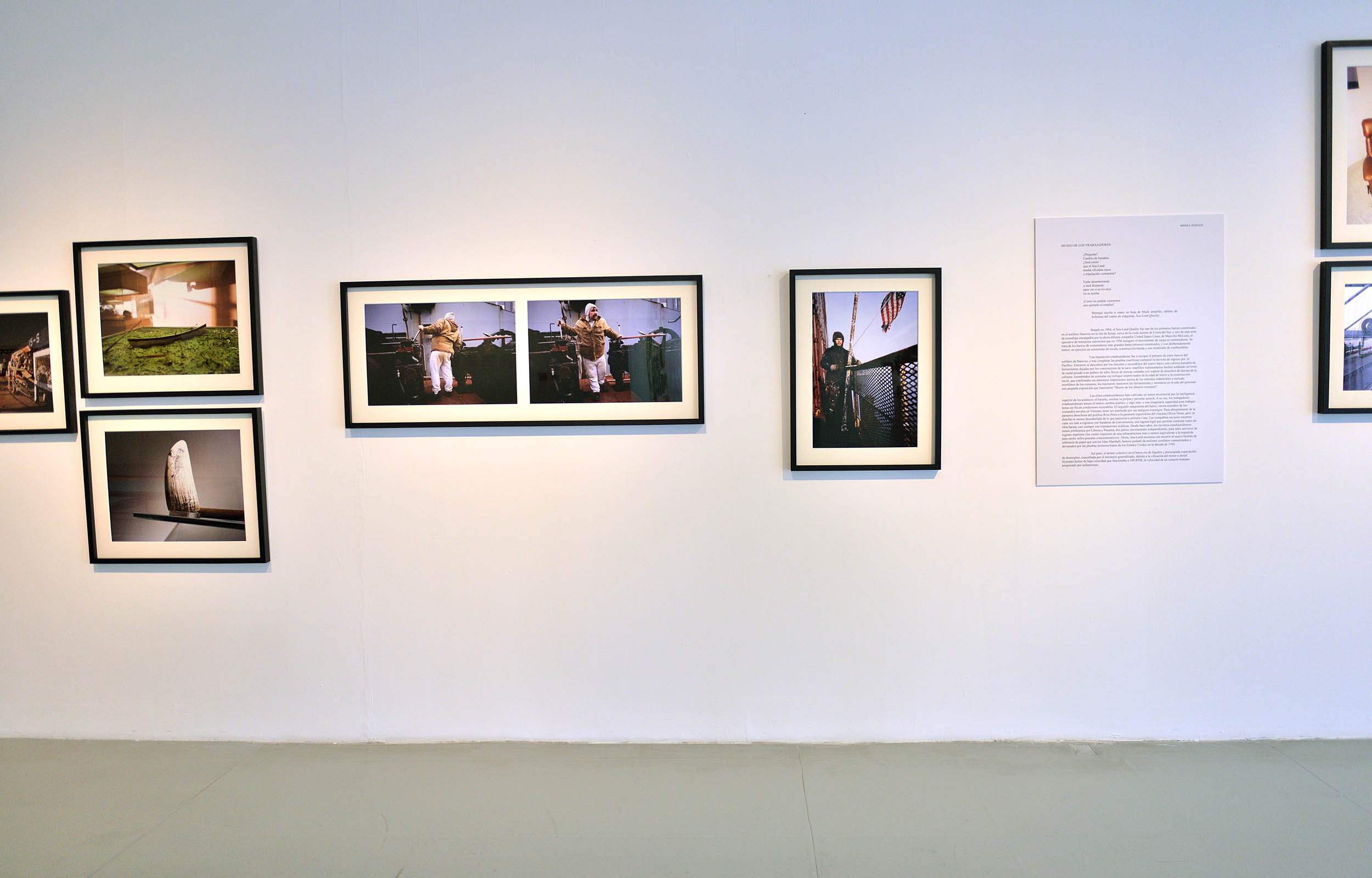
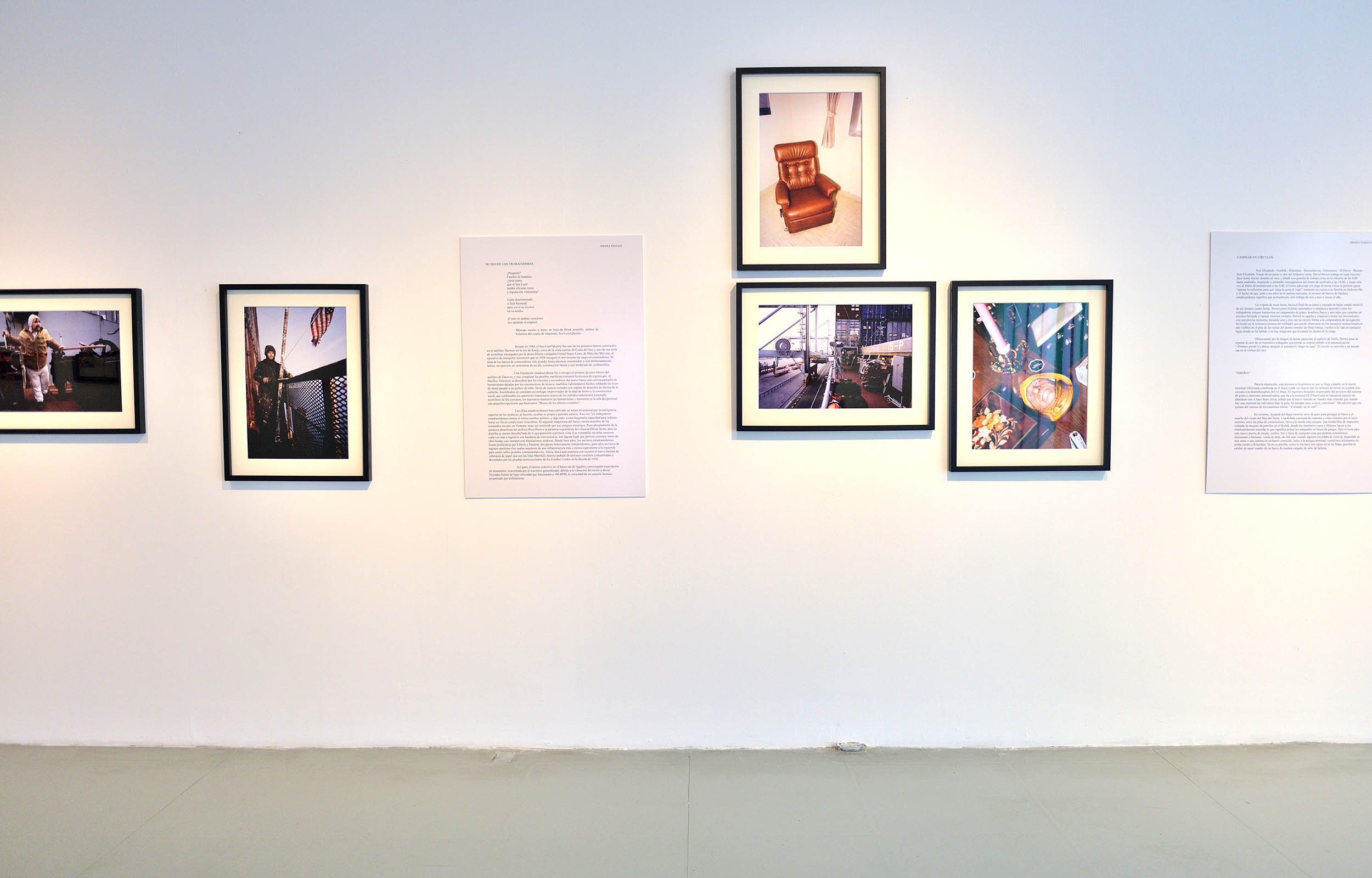
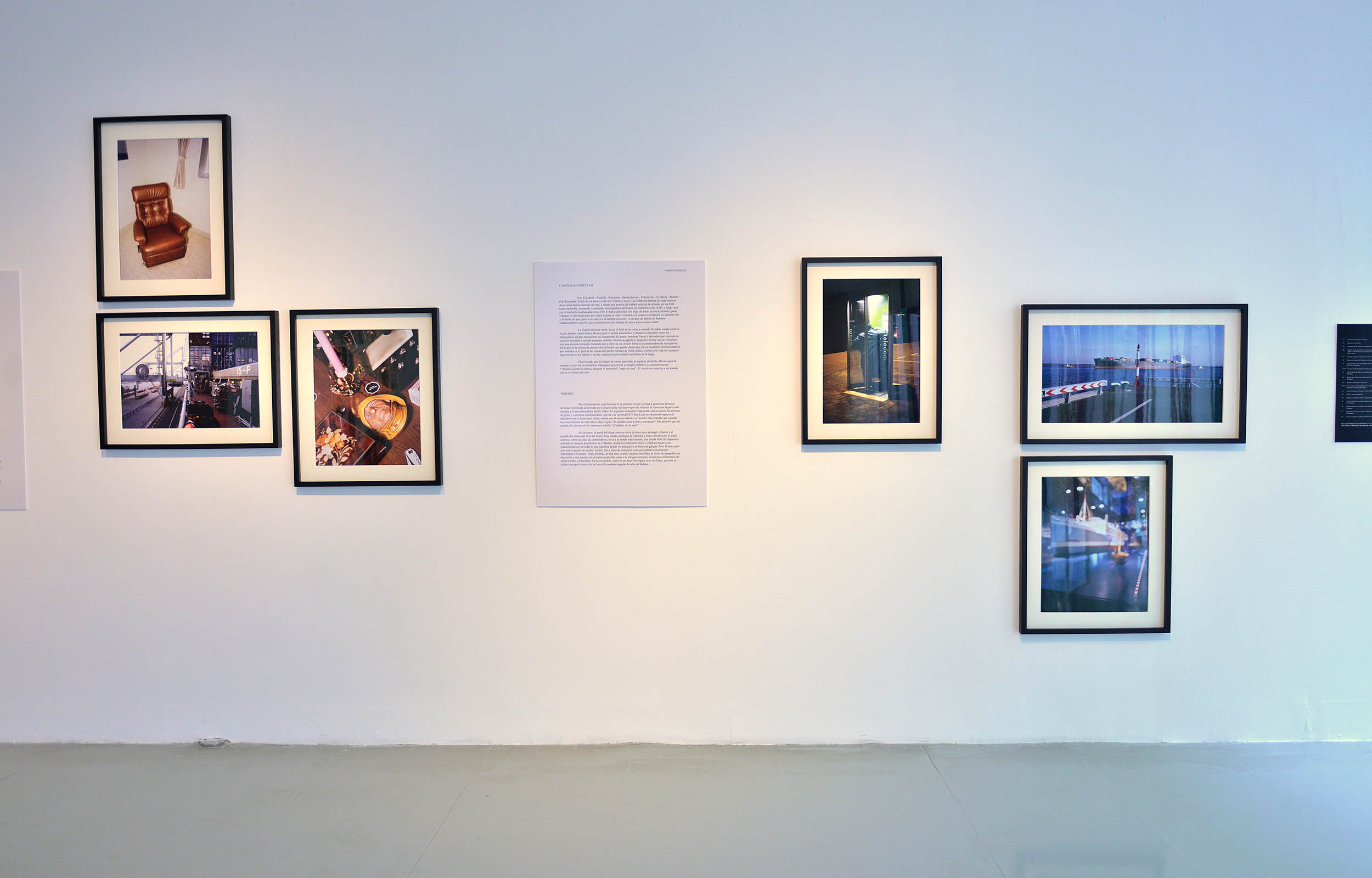
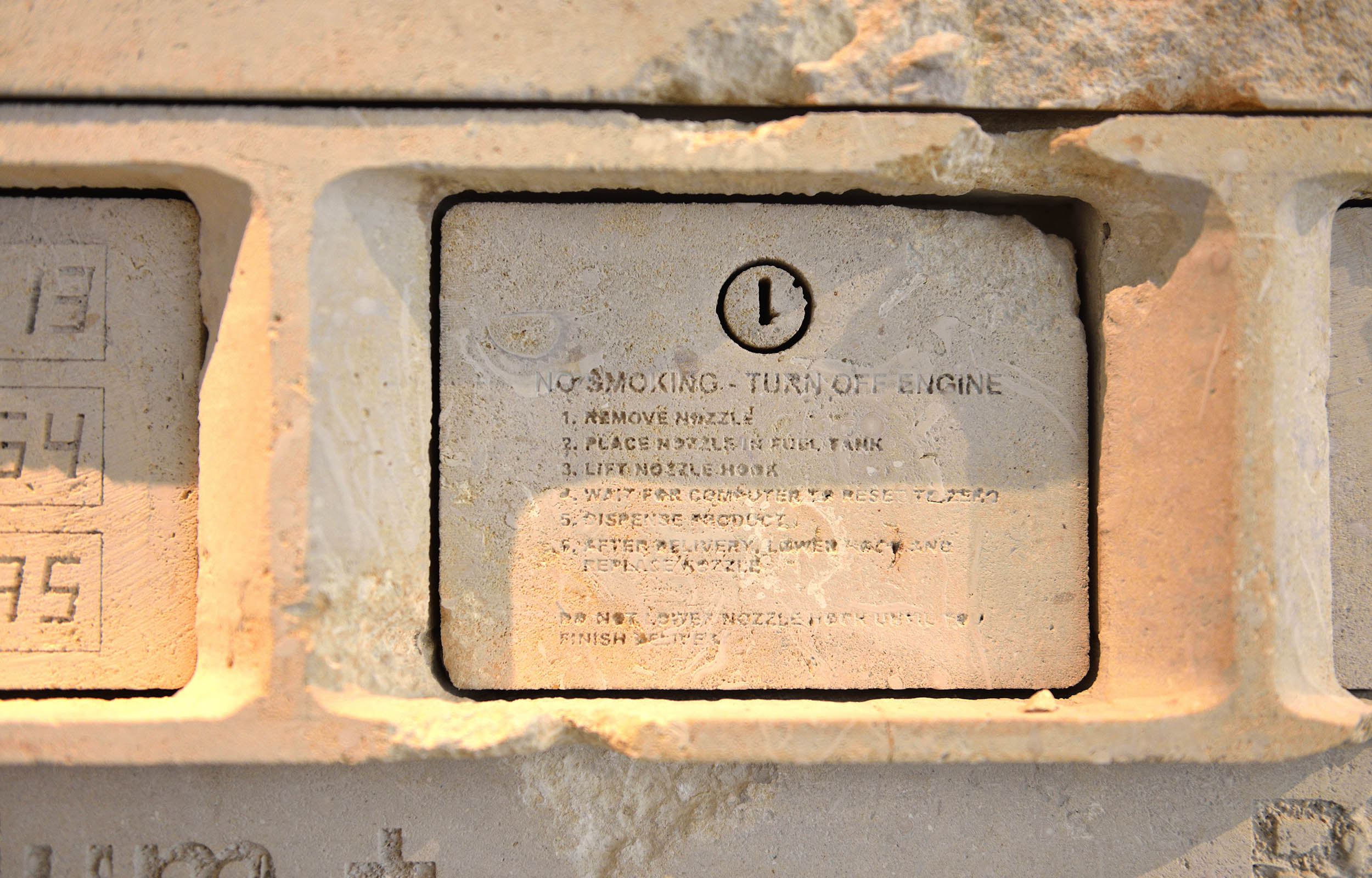
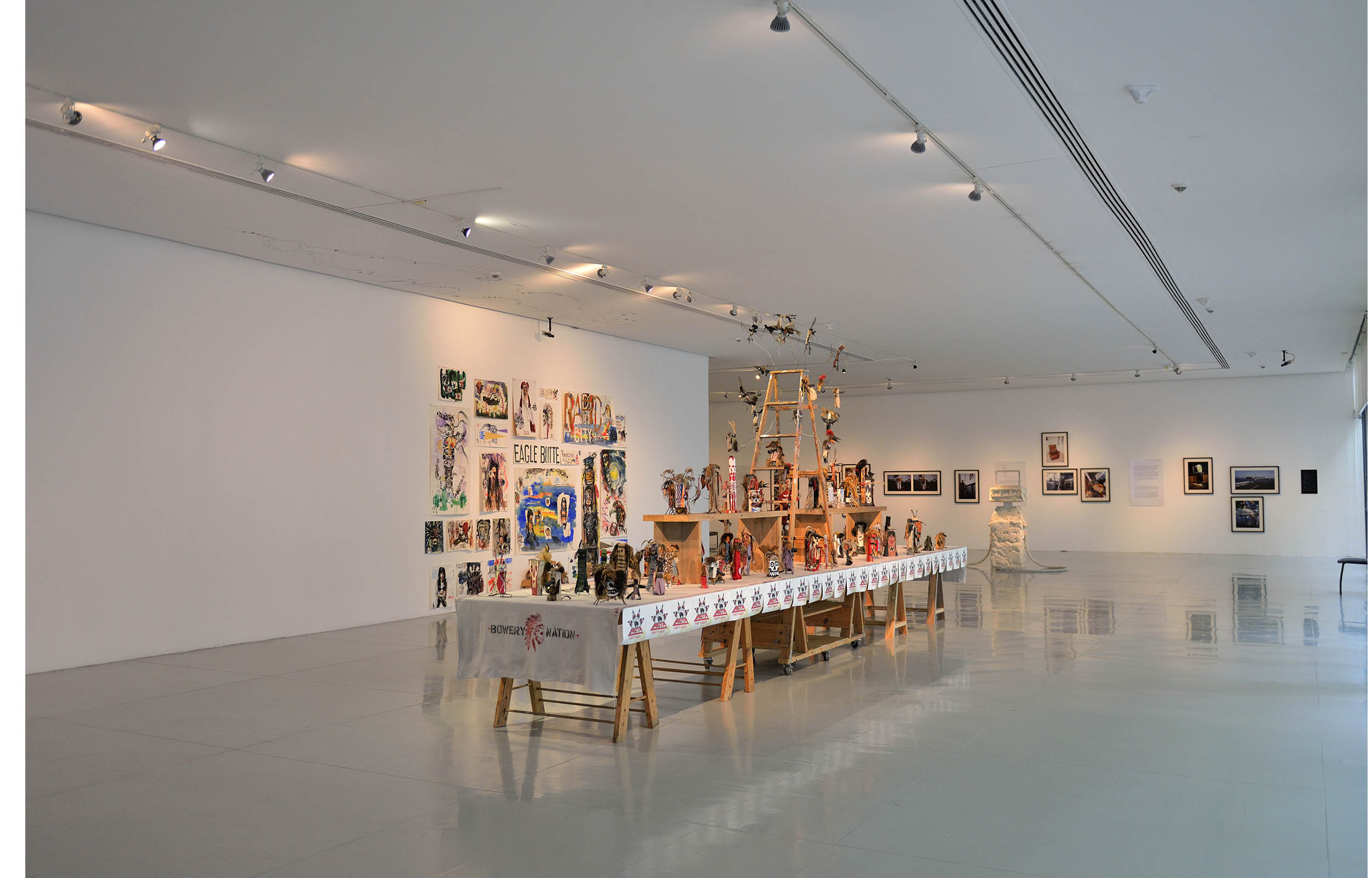
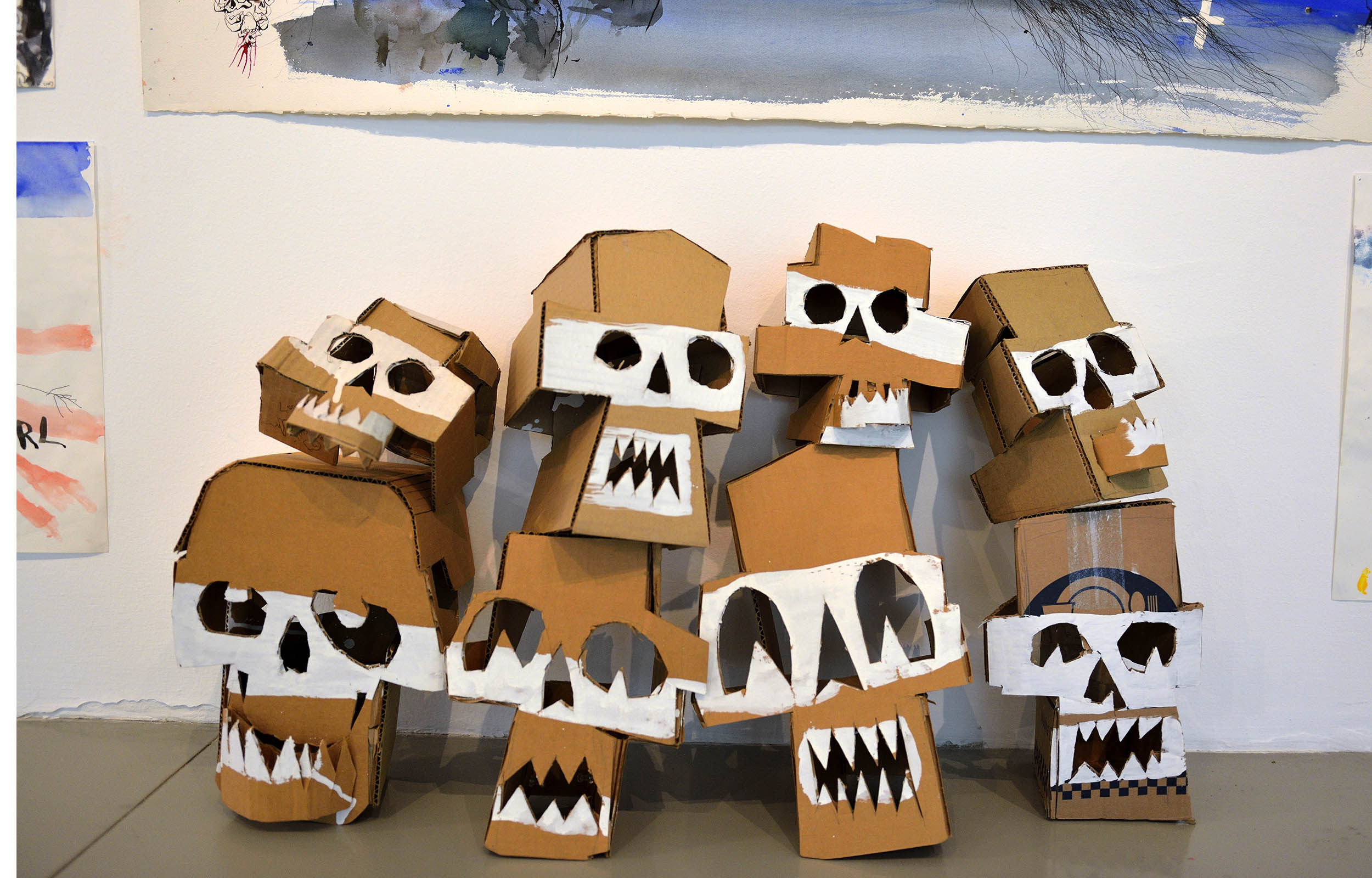
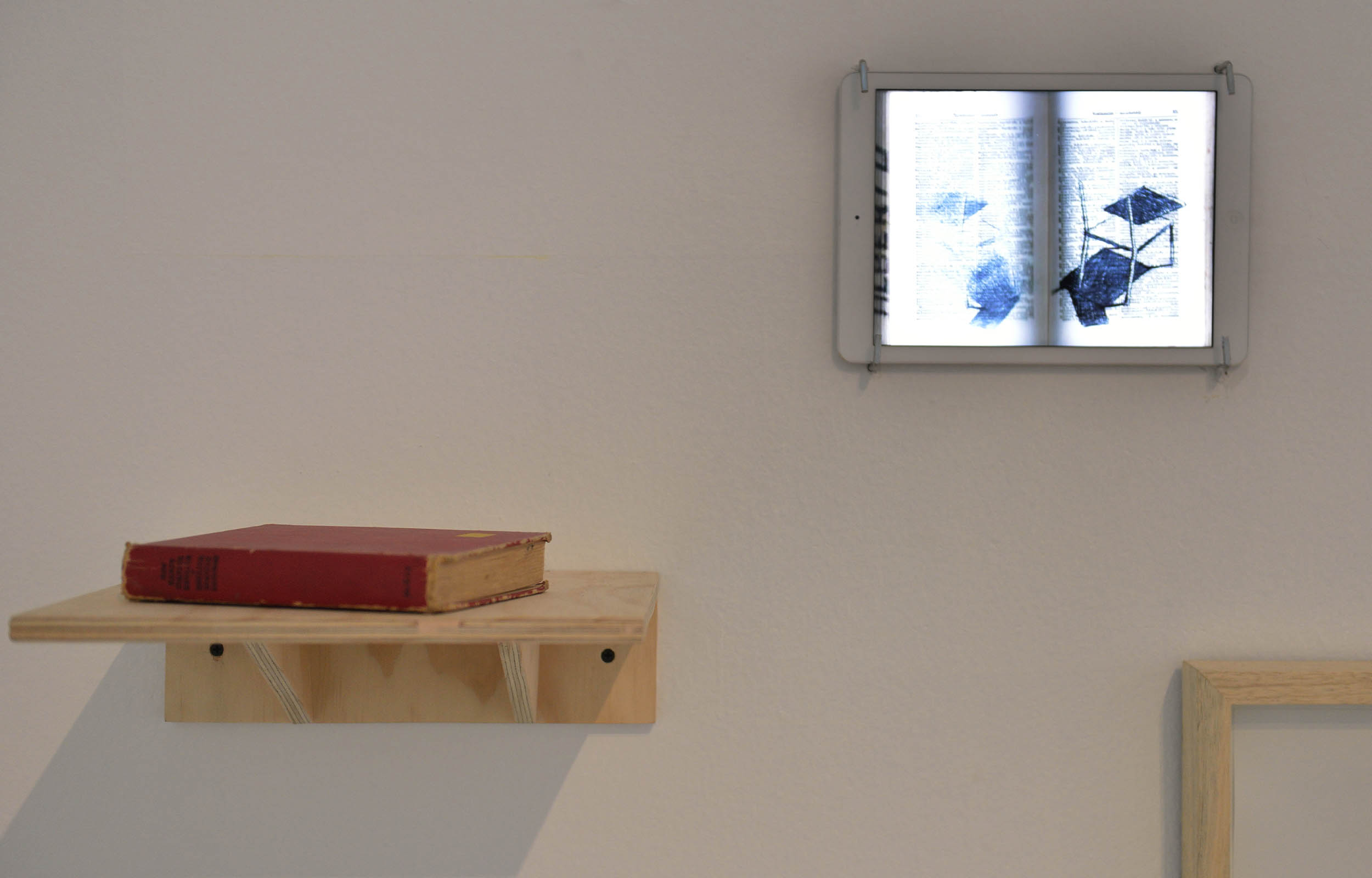
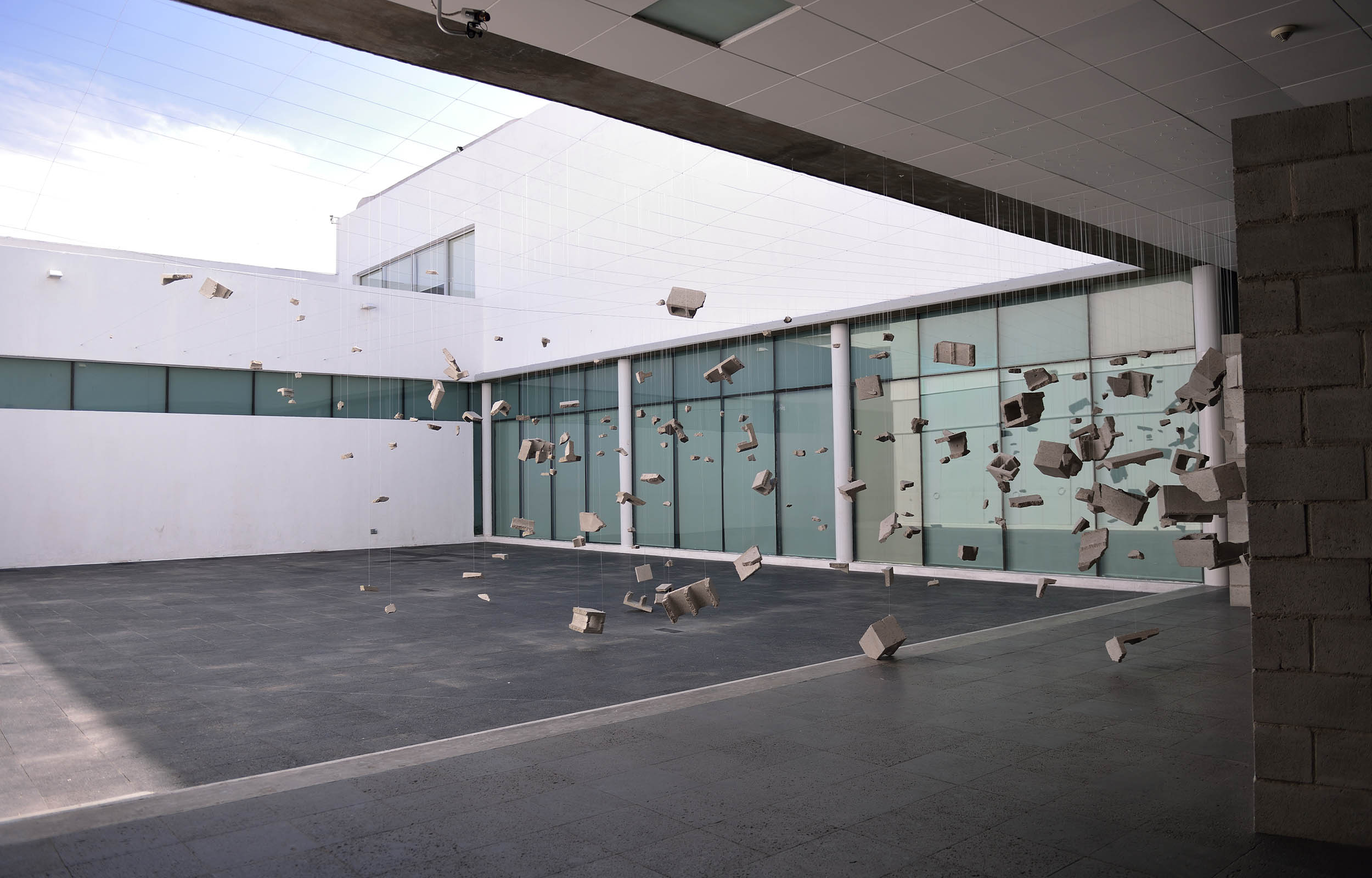
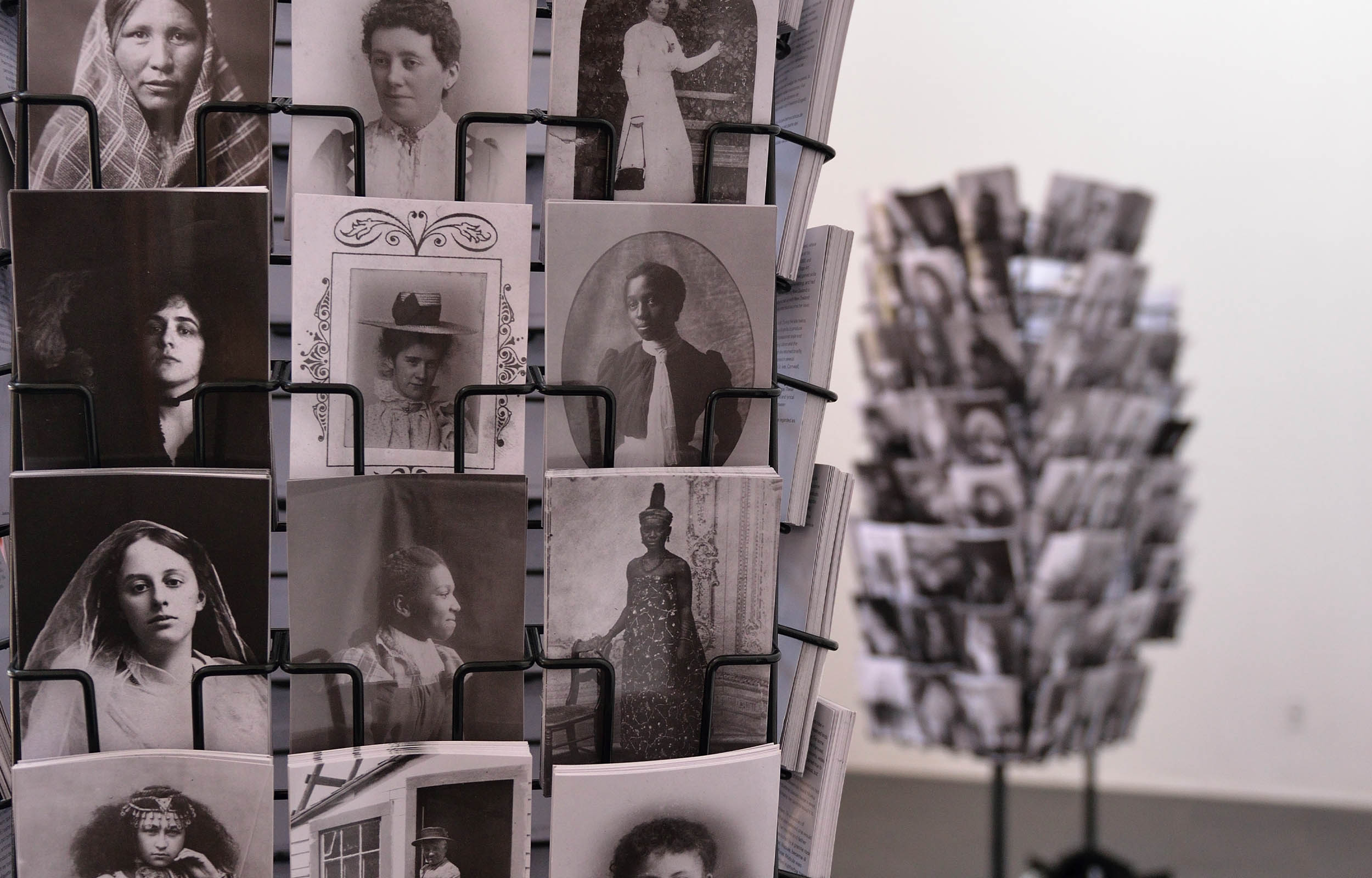
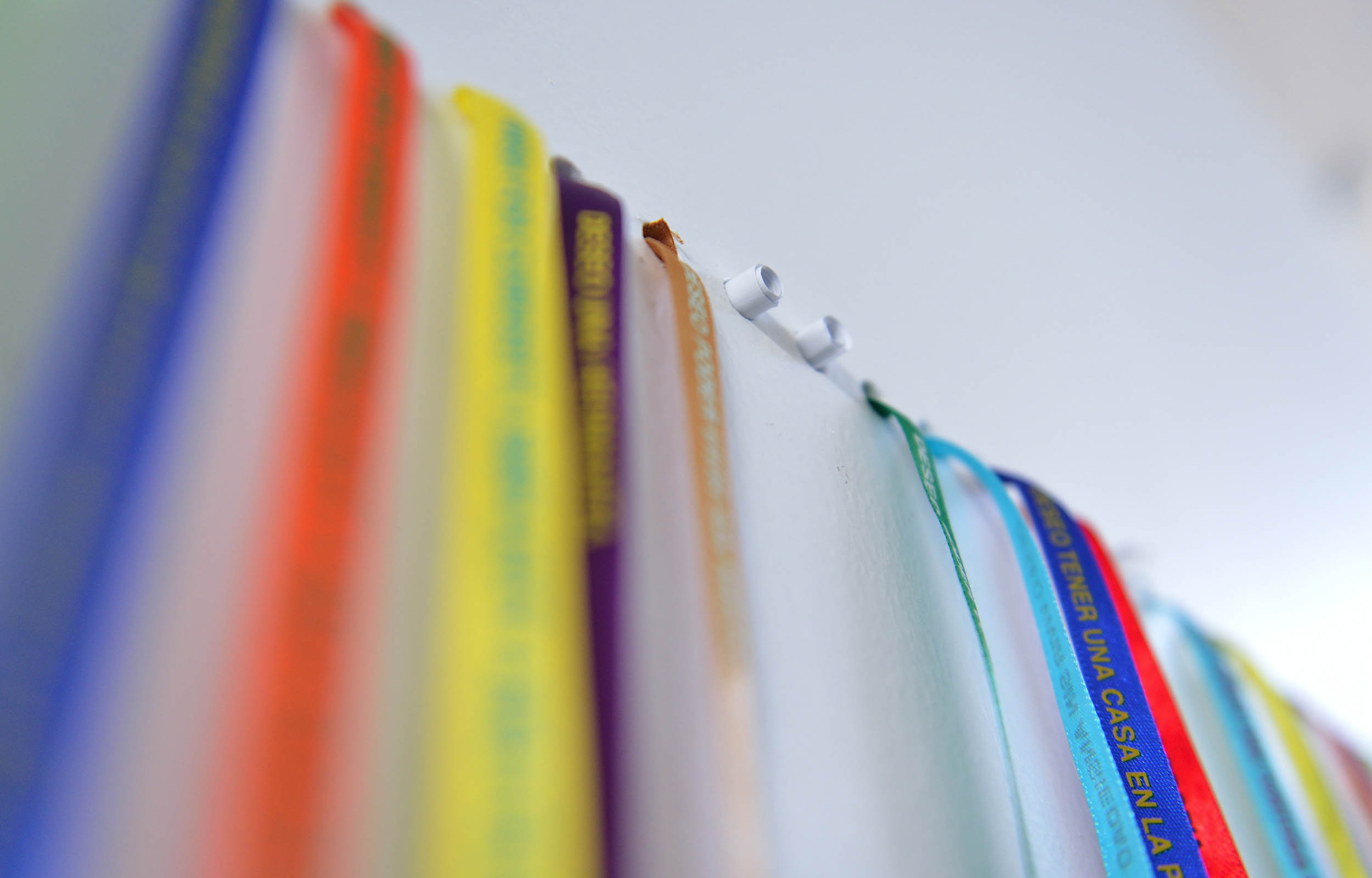
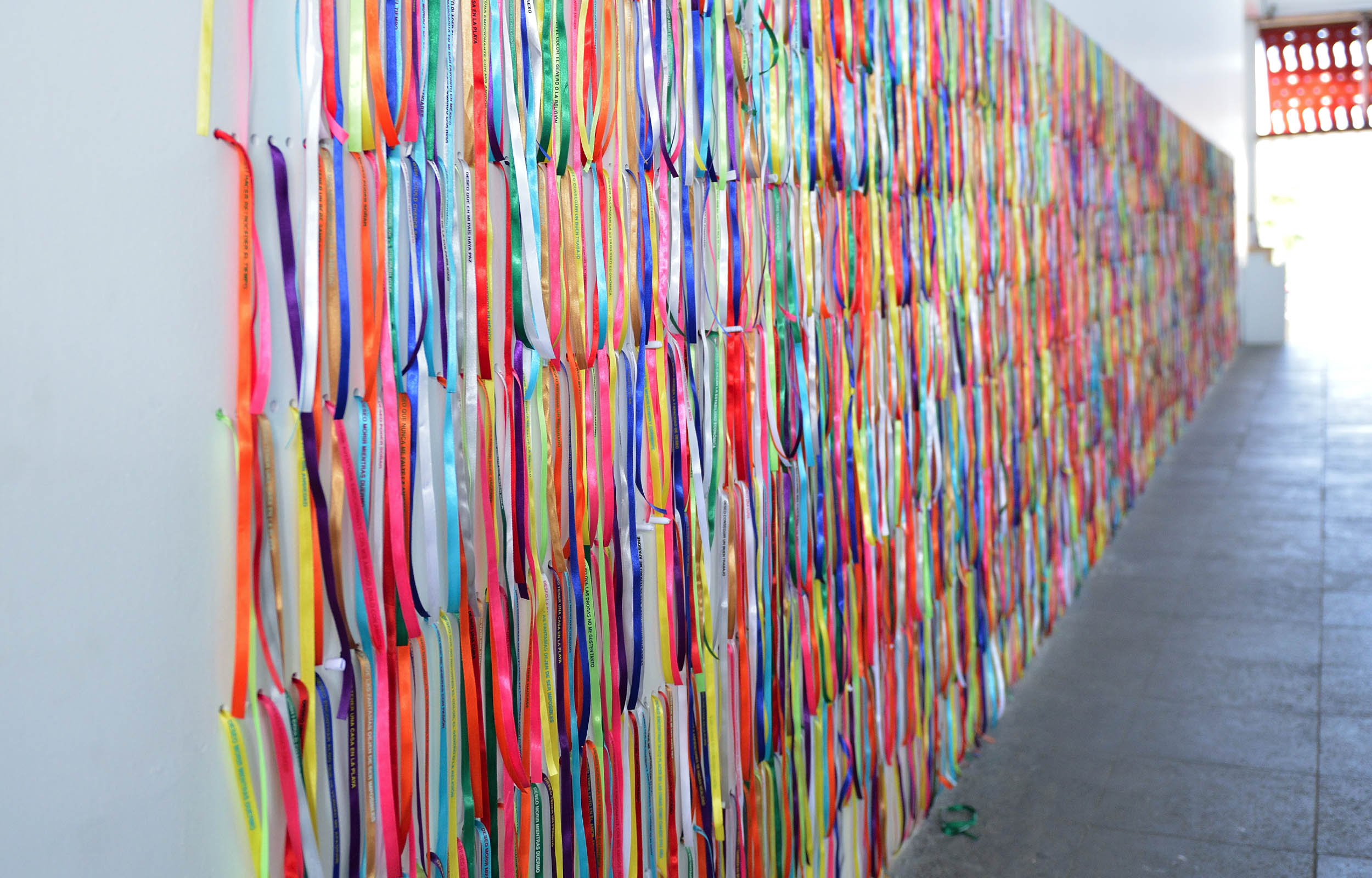
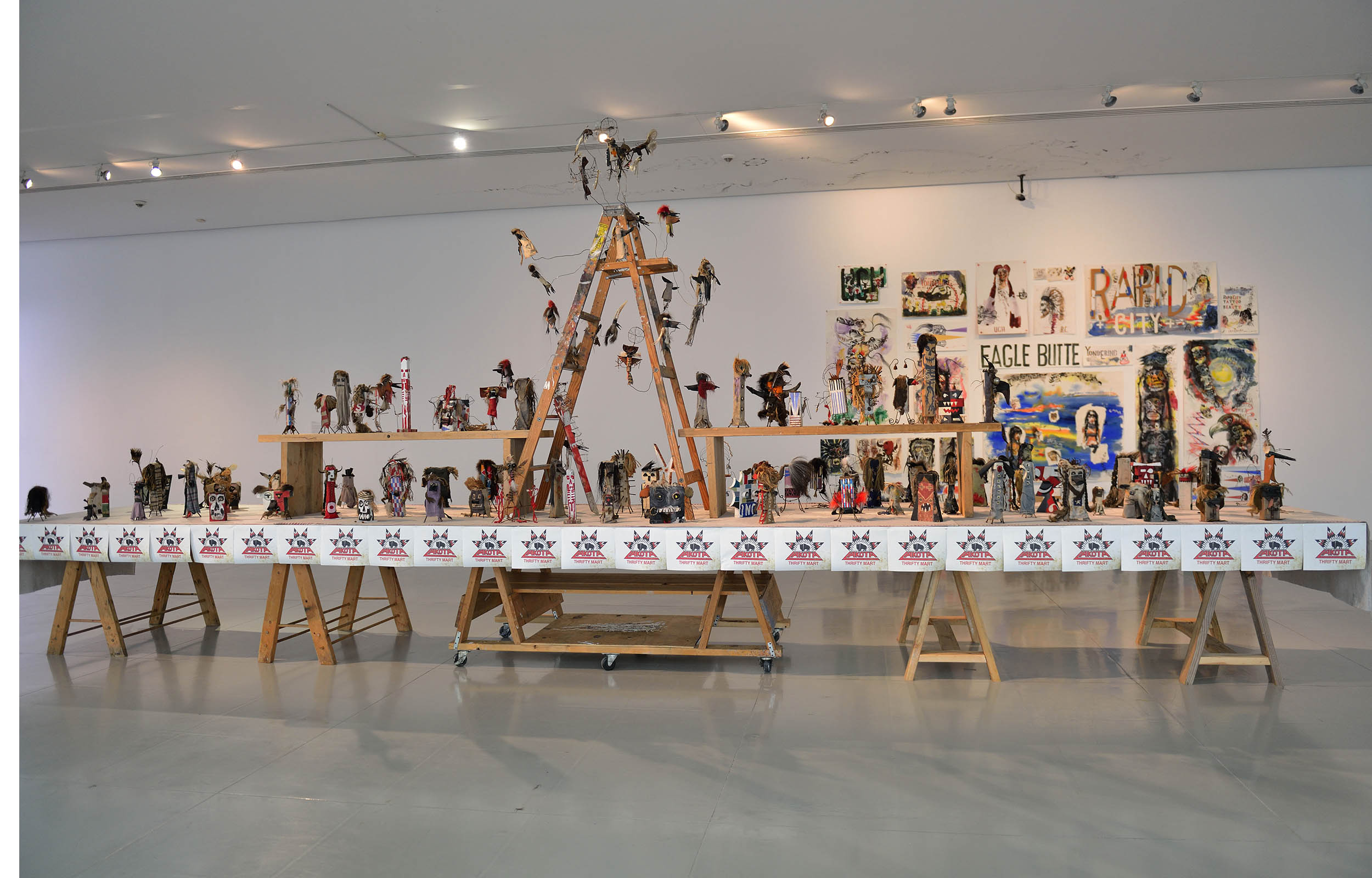
ATOPIA. MIGRATION, HERITAGE AND PLACELESSNESS | Works from the Thyssen-Bornemisza Art Contemporary Collection, Vienna
From May 14 to October 5, 2014
Curators: Viviana Kuri and Daniela Zyman
A new exhibition, developed in collaboration with MAZ, Guadalajara with a selection of artworks from TBA21’s collection of contemporary art, traces a growing interest in place-specific narratives, dealing symbolically with the gaps and slippages between topos and atopos, space and non-space, the global and the specific practices of cultural in-betweens and hybridization. TBA21 is an institution of contemporary art, based in Vienna Austria and founded in 2002 by Francesca von Habsburg, dedicated to the production, commissioning and dissemination of contemporary art from around the world. A selection of the collection, with a strong focus on artists from Latin America, is presented for the first time in the Americas.
Atopia, a word mainly used in medicine and philosophy, literally means placelessness, out of place, unclassifiable and of high originality. It is, in its traditional use, at the same time, a category of otherness, difference, expulsion and exclusion, as it is a reference to the ineffable, the pristine, and the absolute. It is in this double connotation, in which the term becomes a productive figure for thinking in addressing the various ways in which artists have dealt with ideas of place, geography, migration, heritage, translation, the crossing of national, social and cultural borders. The atopic is here but not here, it is a position which denies location, perhaps an attitude that relates to an “original” cultural or social experience but at the same time diffuses it or remains at distance.
Thus the exhibition focuses on the practices and representations of the ways in which artists have accessed, rehearsed, participated in and negotiated concepts of “place” or “place of origin,” their past, heritage, and cultural ambiguities, with all the dilemmas such notions provoke. Origin / locality is not a neutral point of reference. What seems to be just a geographic denotation, comes with an apparatus of definitions and is grounded in systems of authority. Geography and place-bound symbolisms incorporates a (very rigid) signifying system through which individuals and collectives register and express their identities. As “writing about the earth,” the science of geography has traditionally bridged human and physical science to map out places of presence and embodiment. Gradually the geographic denotation of space has shifted in favor of a more fluid and multi-layered meaning, invested with personal and intimate affects and complicated by subjectivities and their interaction. Place-specific and locational narratives have thus become important figures of the artistic expressions of the past decade, but also projective sites of stereotyping and (post-colonial or ethnicizing) simplifications. Artistic exploration of geographies through mappings, landscapes, descriptions of sites, places, collection of cultural objects, historical inscriptions and personal research, as well as the shifting political implications in language, writing and formal representation are at the nexus of the current exploration.
The exhibition looks at the countersides of the processes of aggregation and homogenization and addresses the ways in which a collection of 21st century art is constructed around the various experiences of difference, in which individuals and collectives participate in different cultural processes and realities. It therefore pivots around the specific systems and methods of exchange, translation, and its embedded critiques. A wide ranging production of visual and spatial works catalyze the reexamination of the agency of the artist in the production of such locational inquiries. It also implies strategies for re-claiming certain histories and place-specificities by way of reasserting territorial representations. The way “localism” is understood in this particular context is not as a reaffirmation of common simplifications but is instead based on productive inquiries and internalization of paradoxes and transitions, which evade categorizations or nostalgic impulses. It also shows how shifting political and economic realities have created new tales of places, and how their histories have sparked the impulse to document the rapid processes of transformation set into motion by new “continental shifts”.
